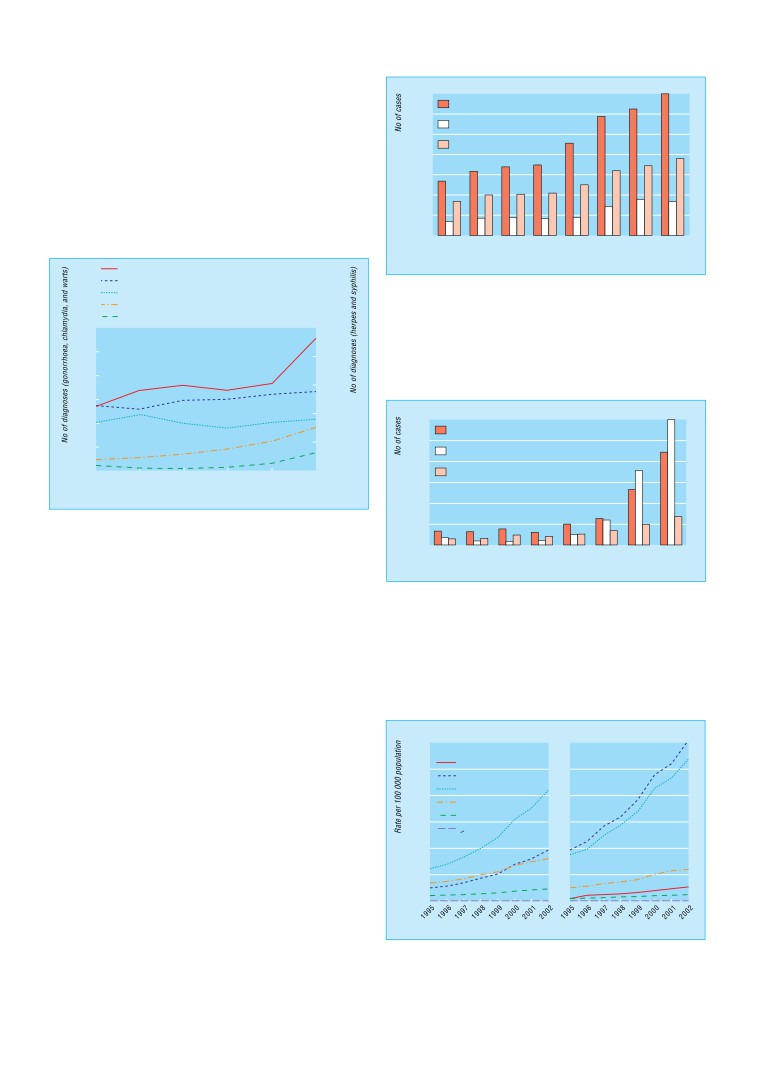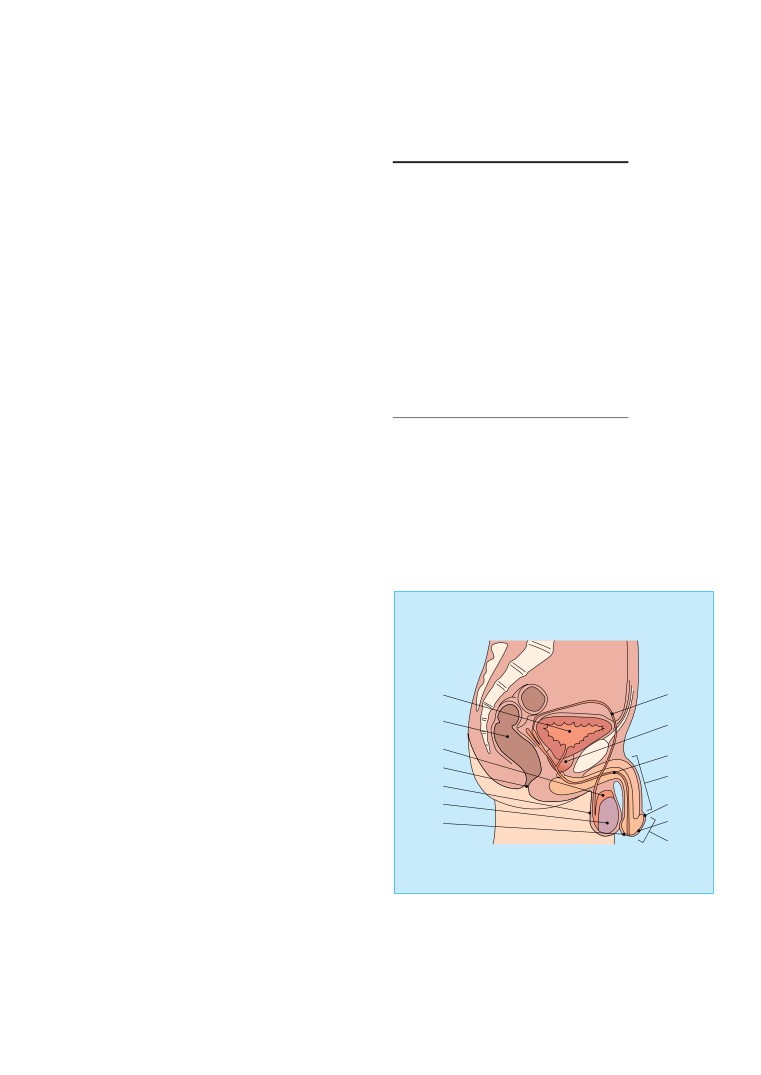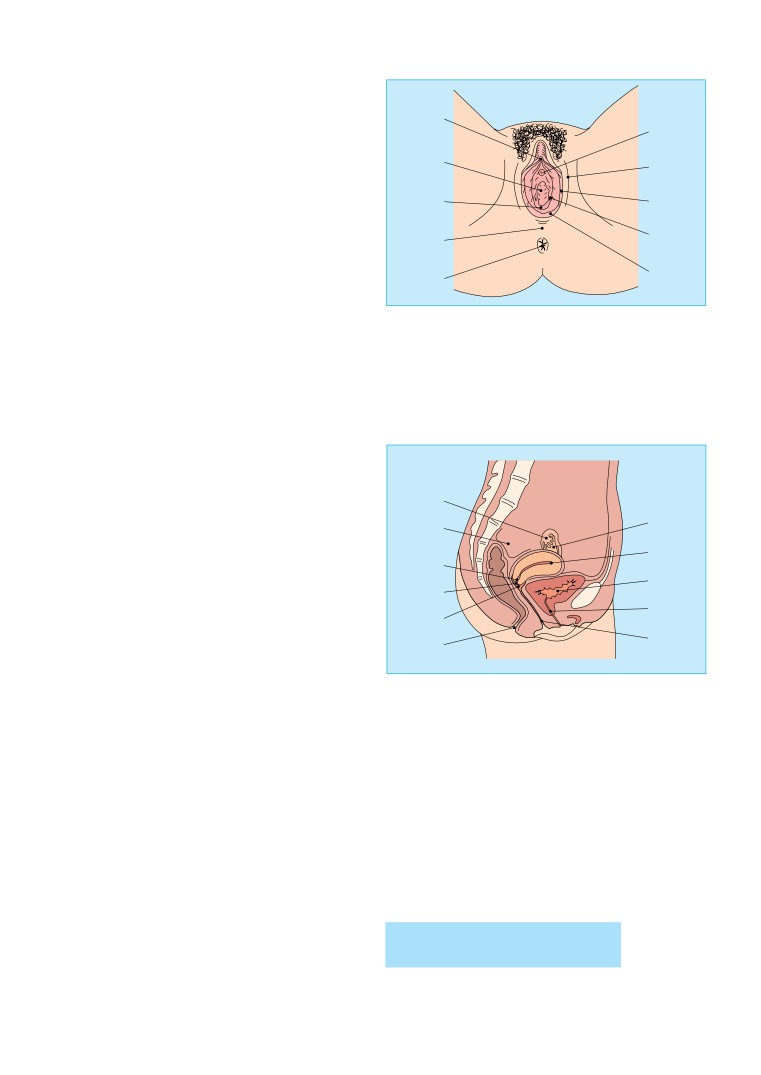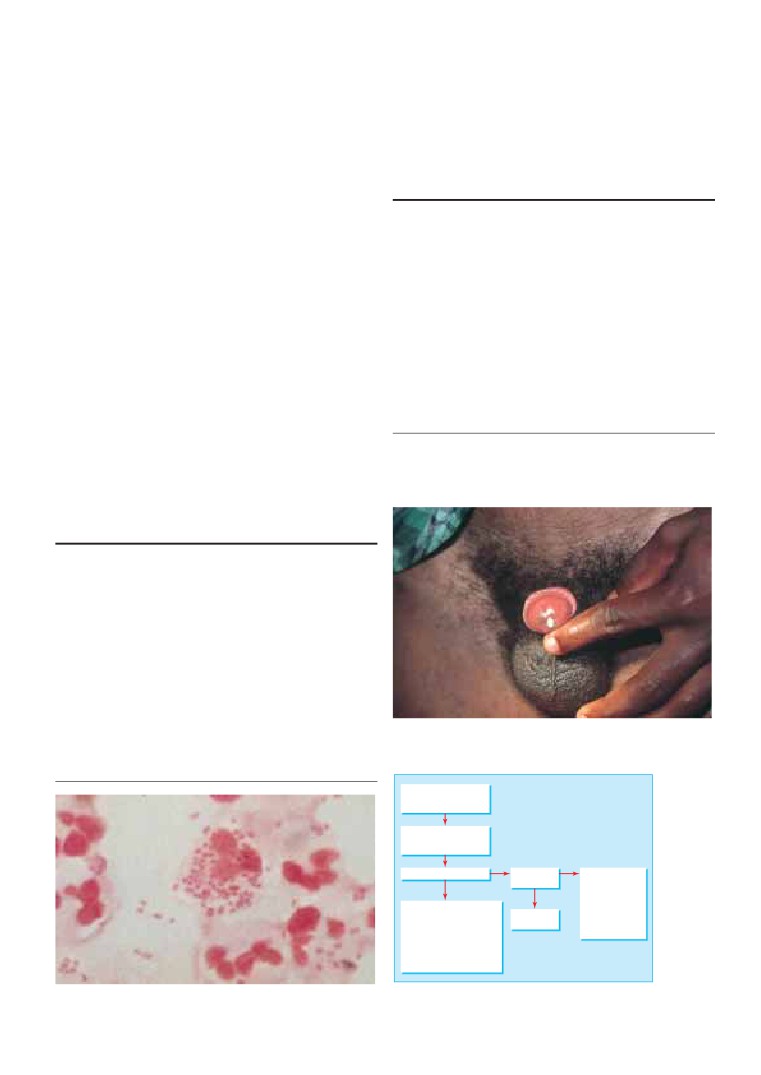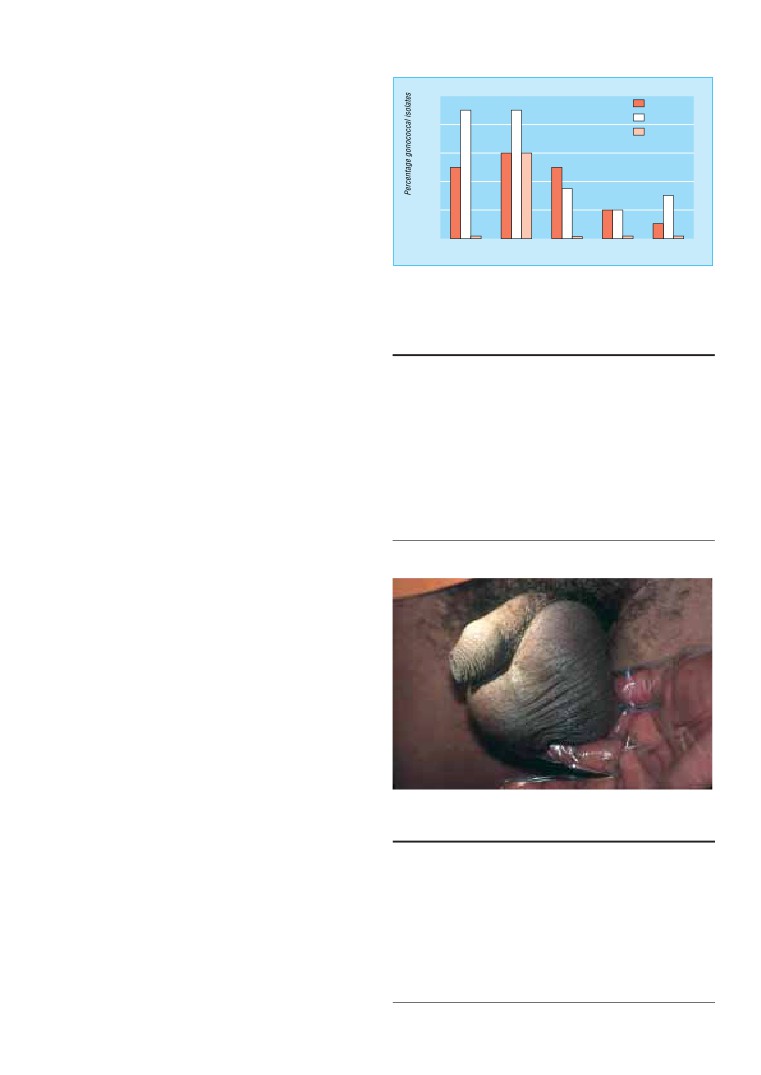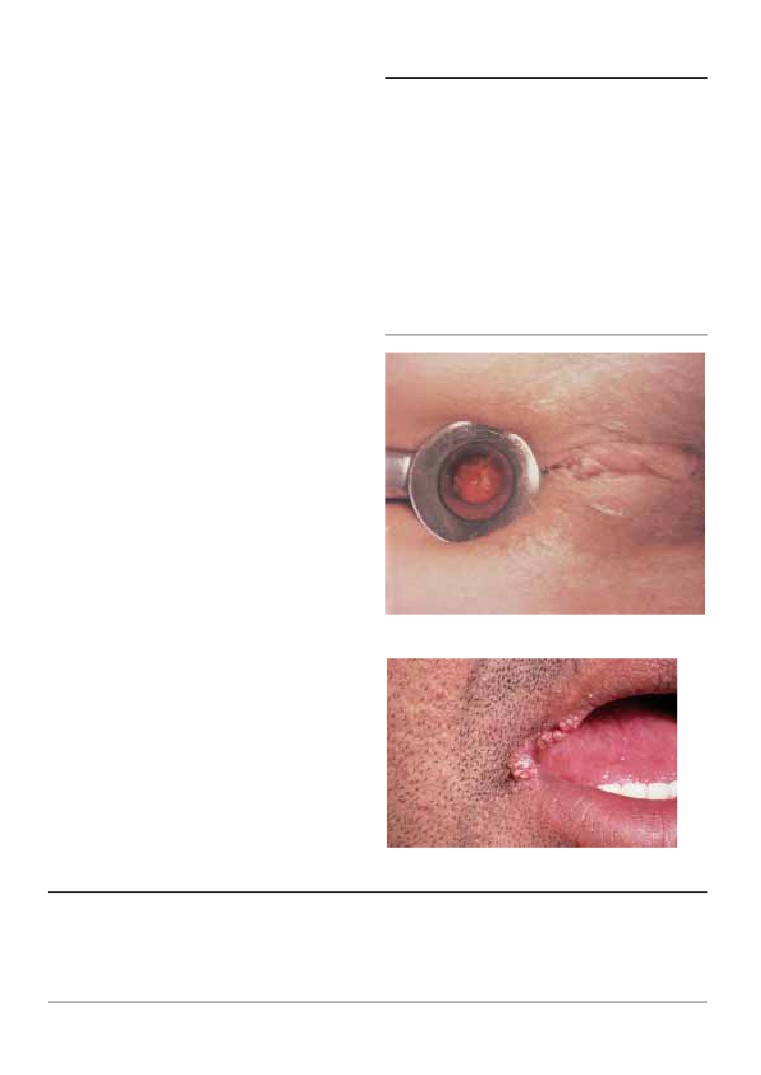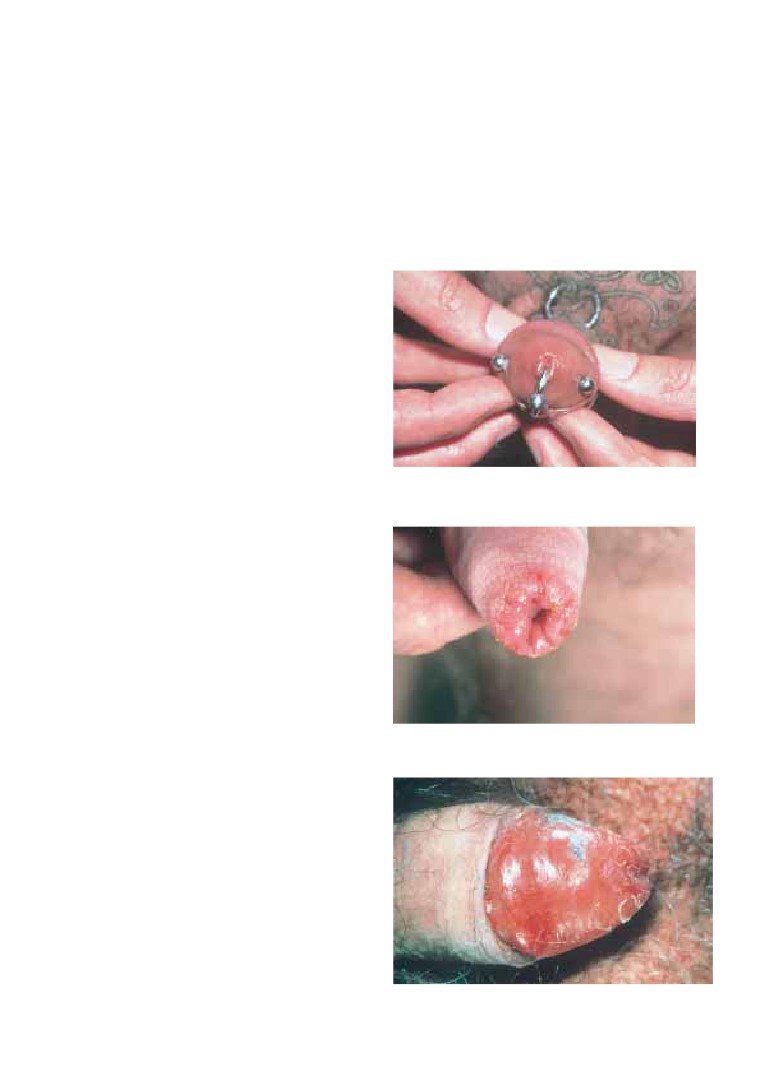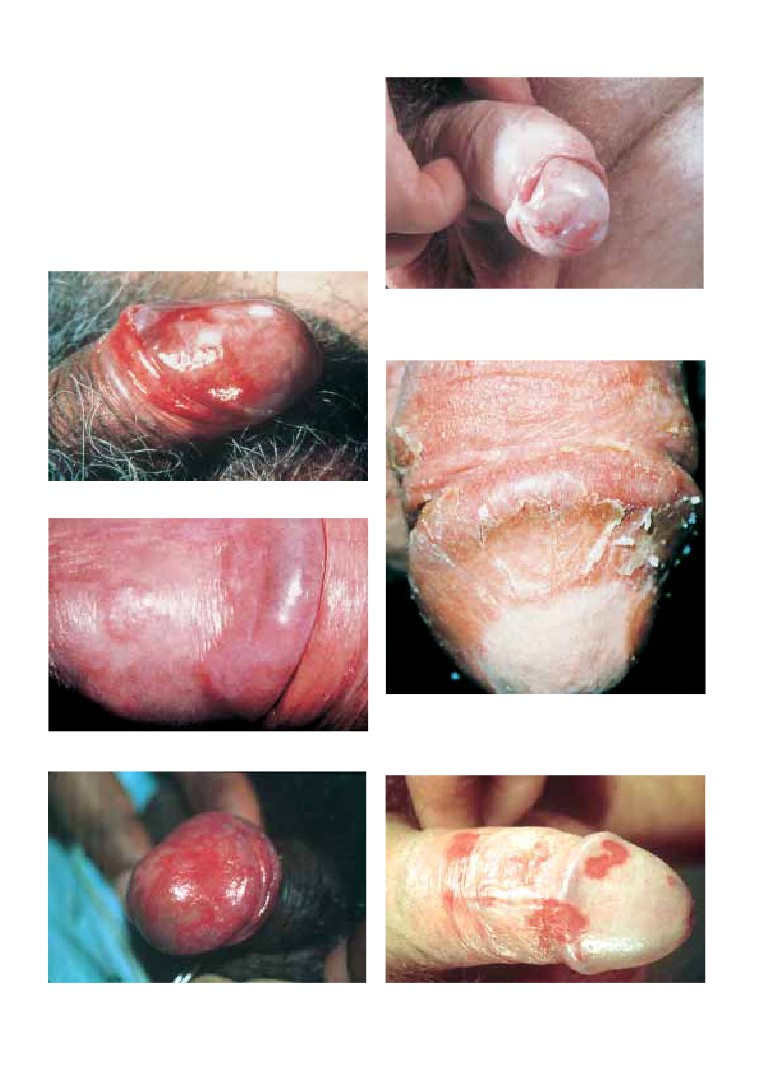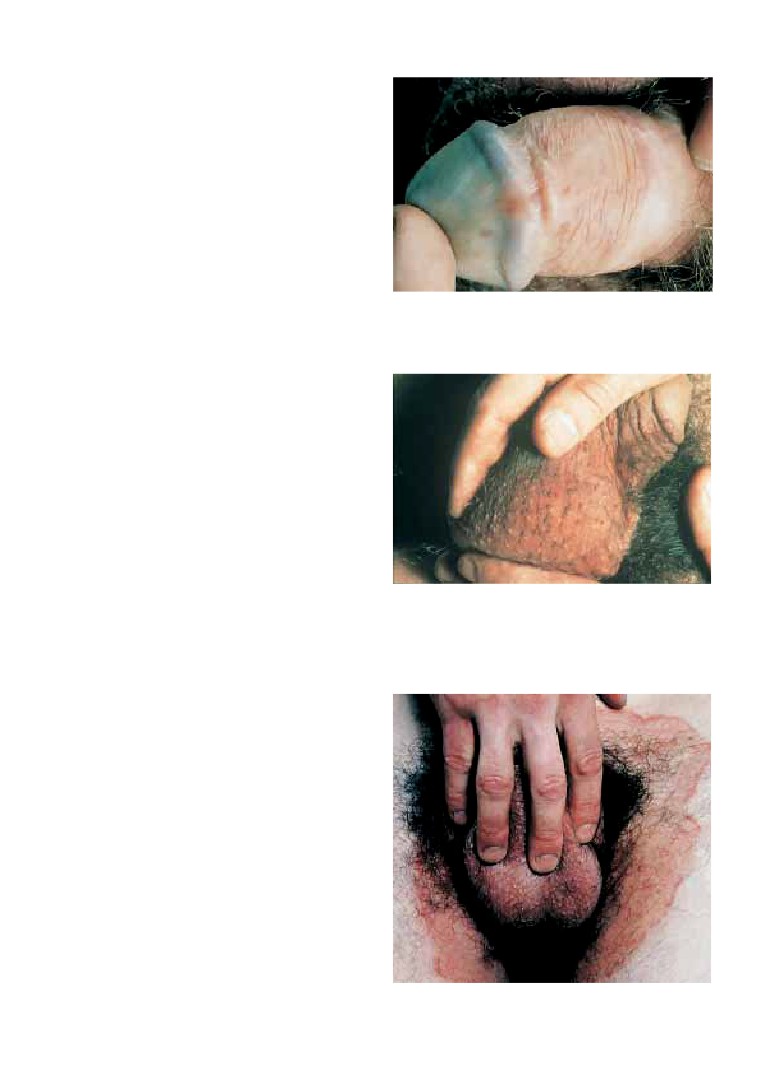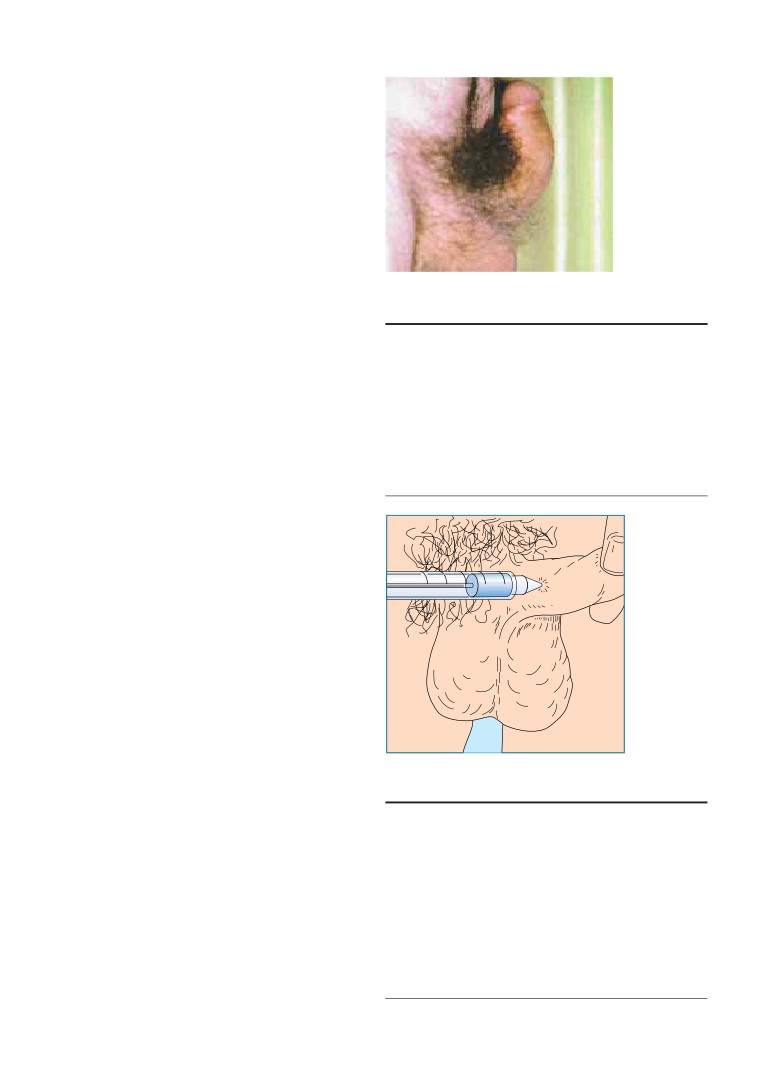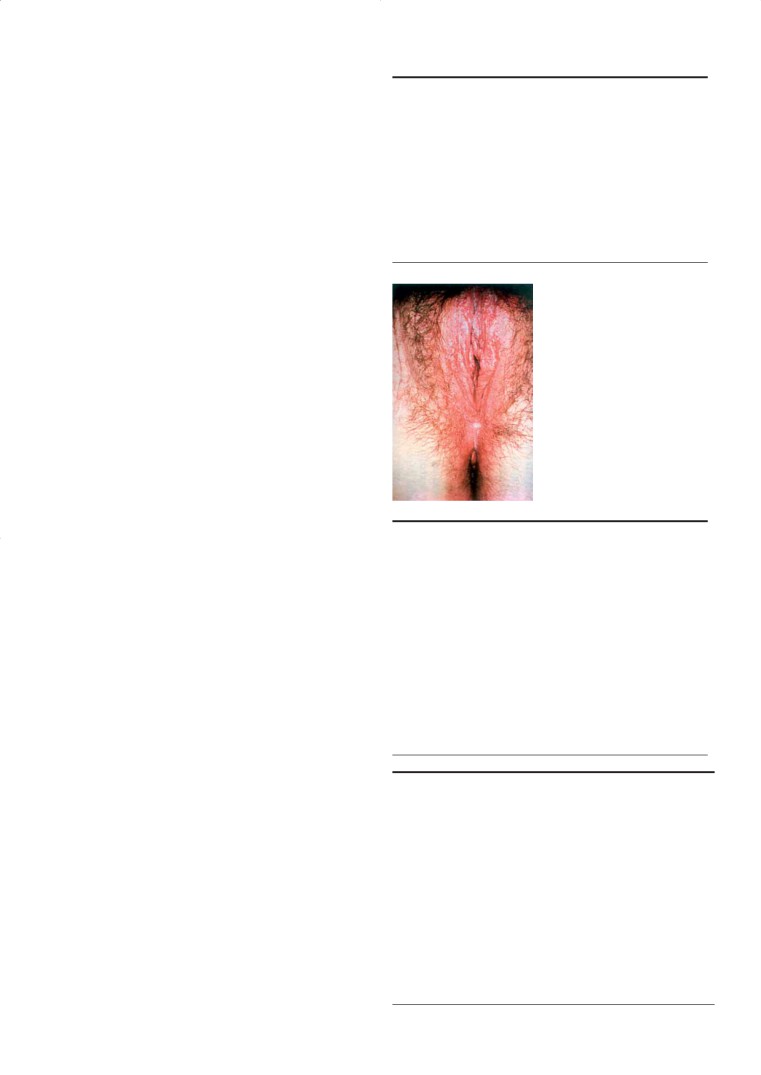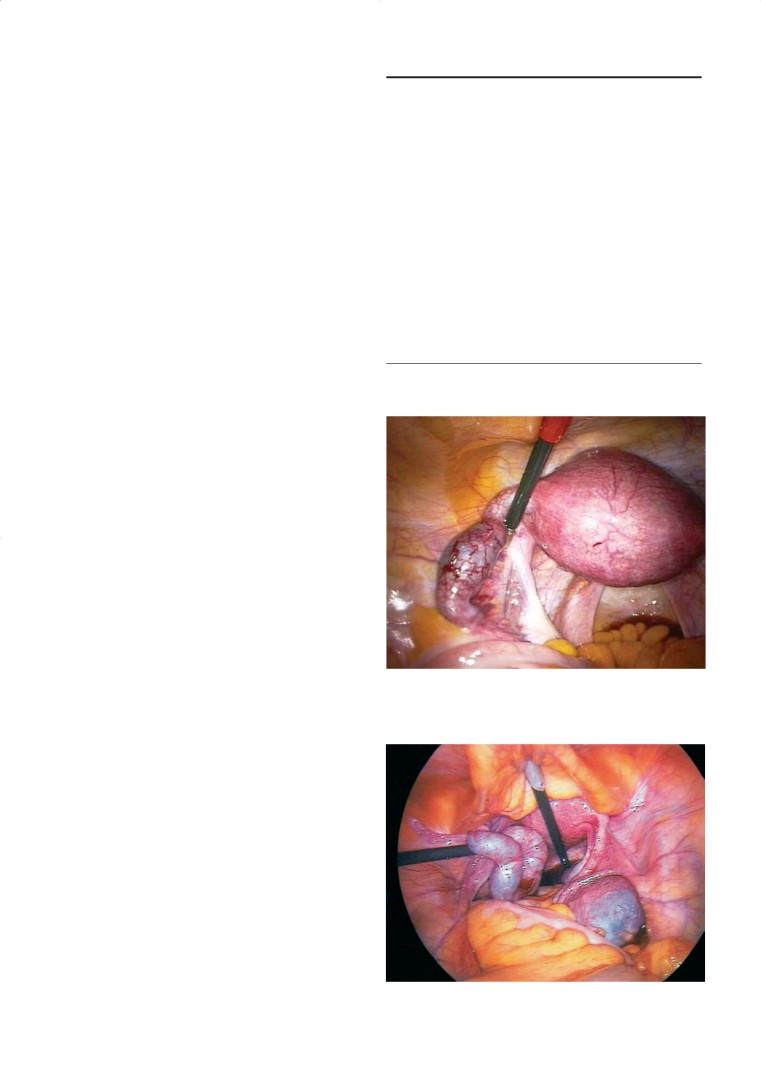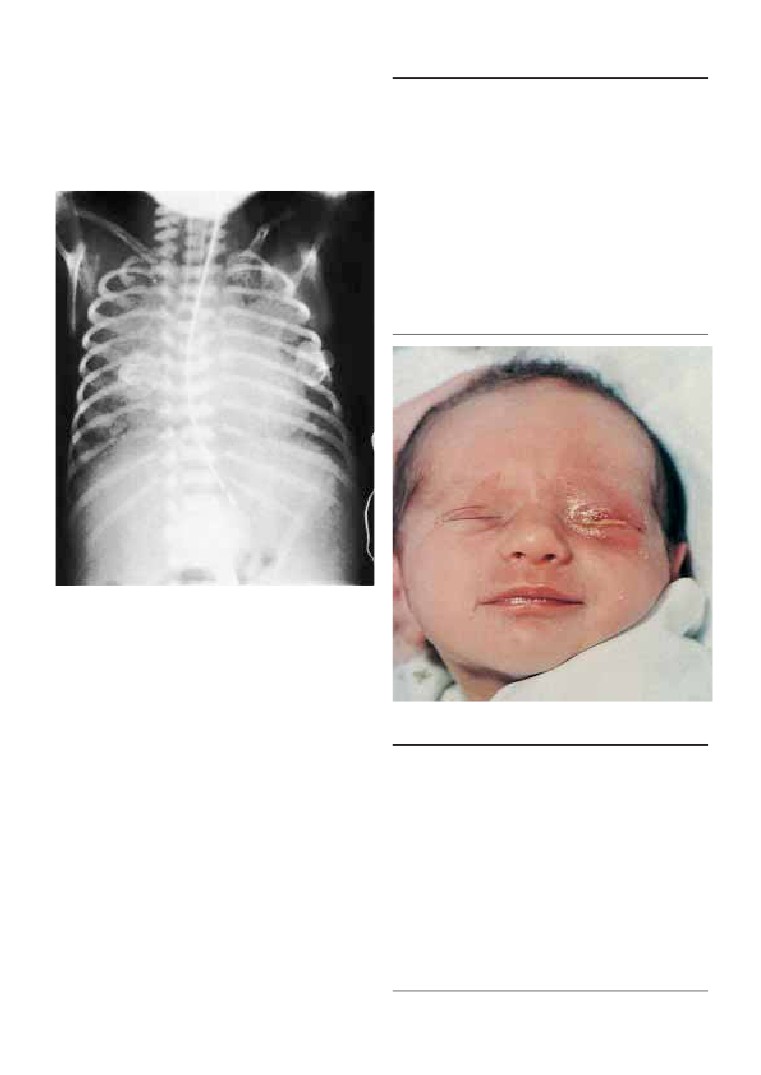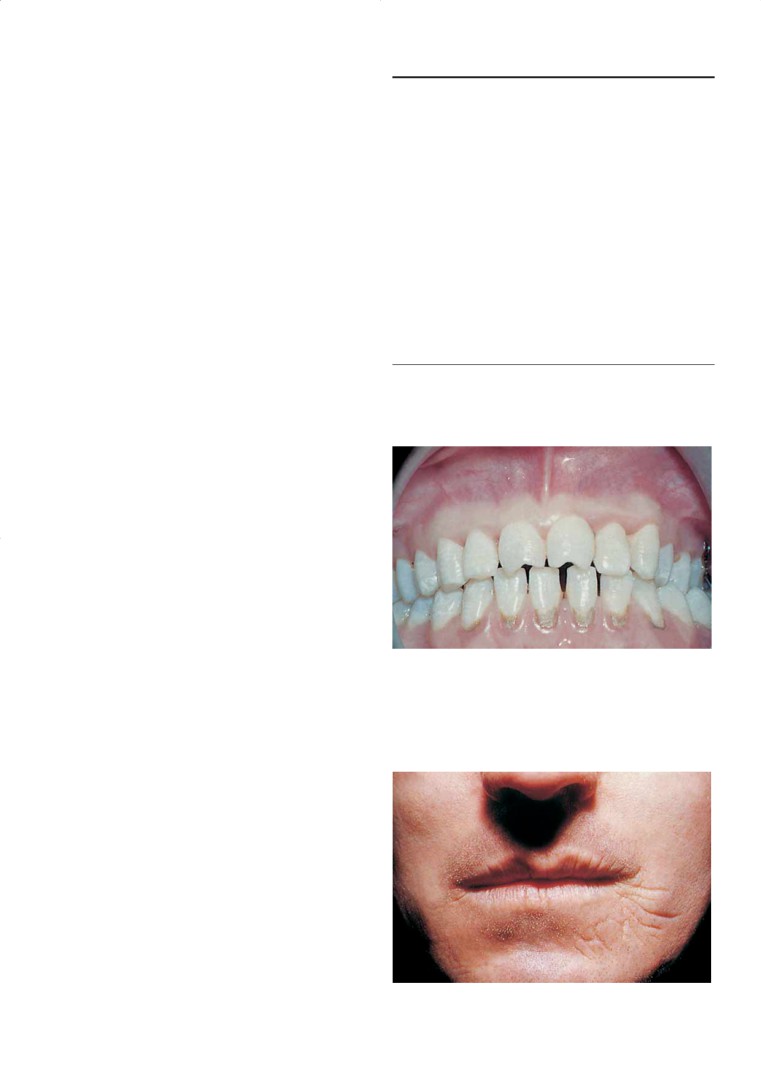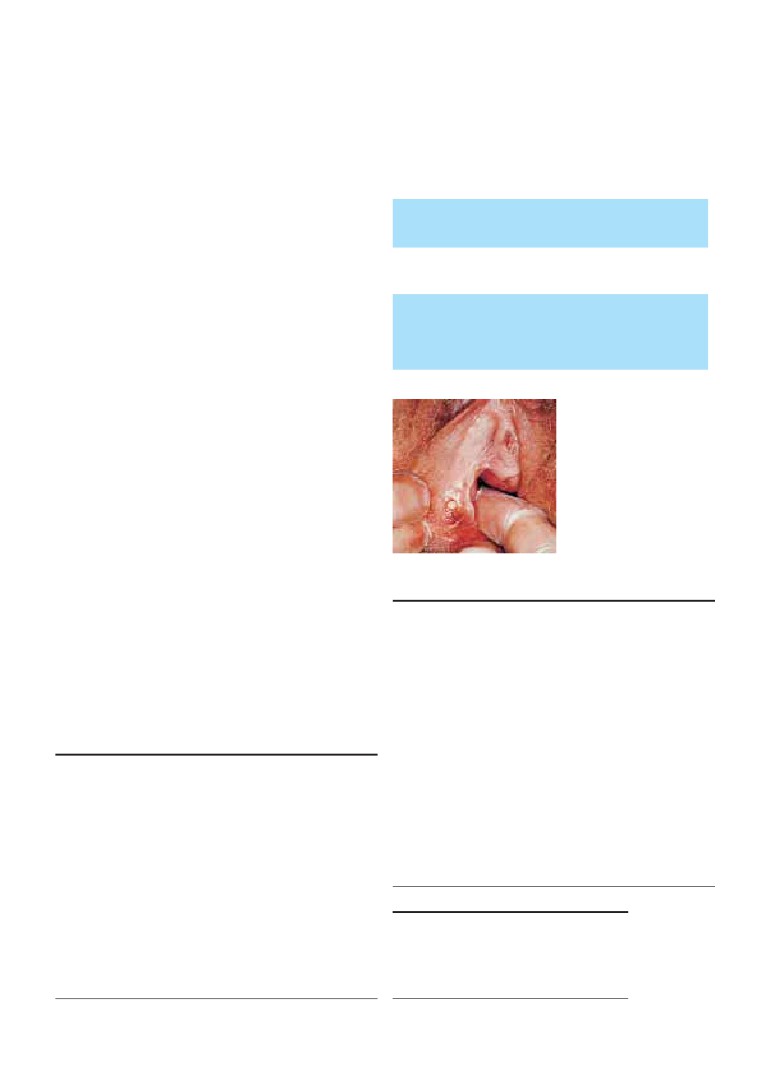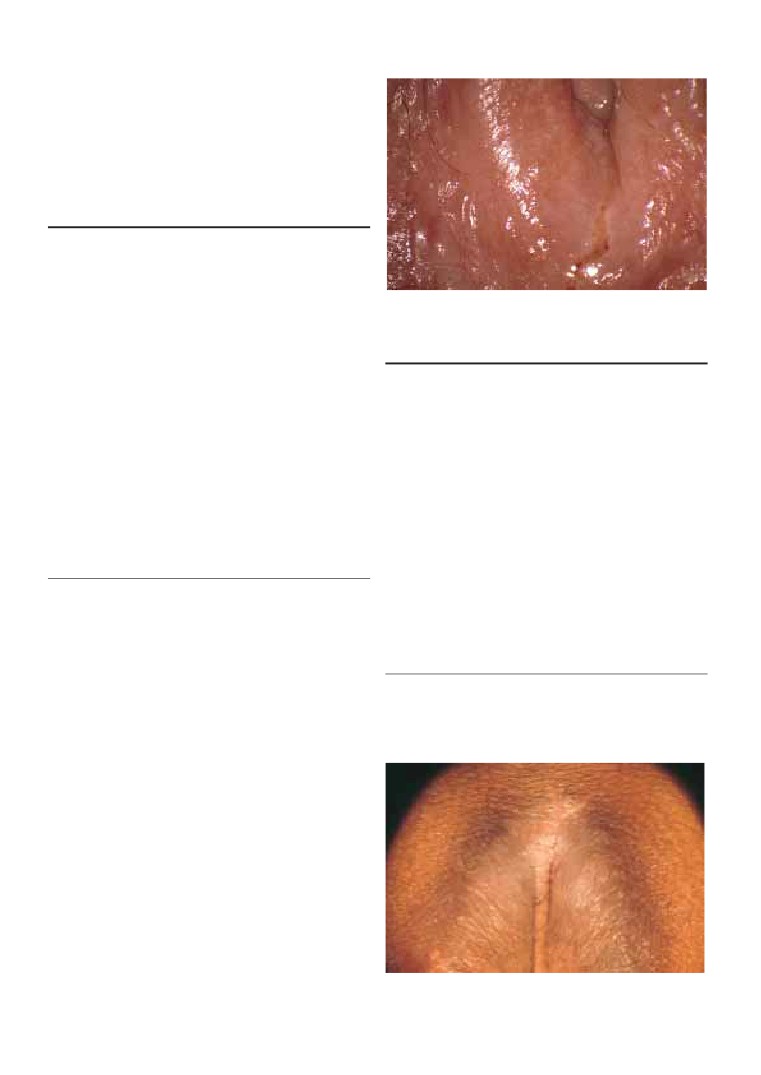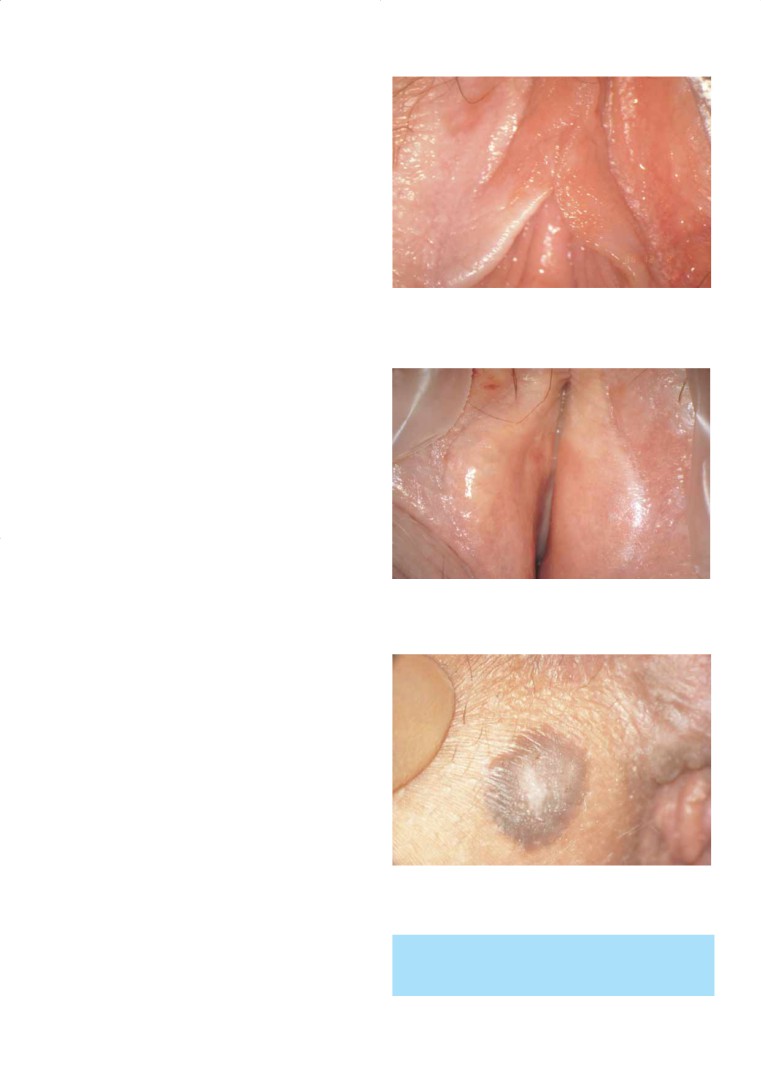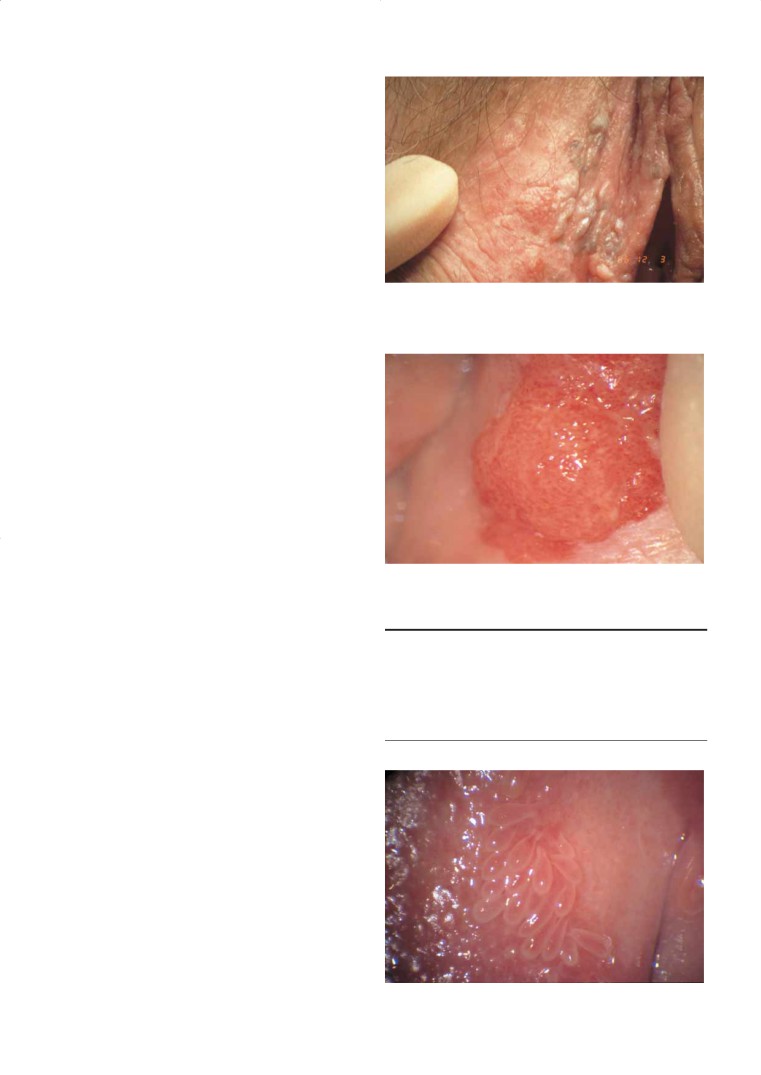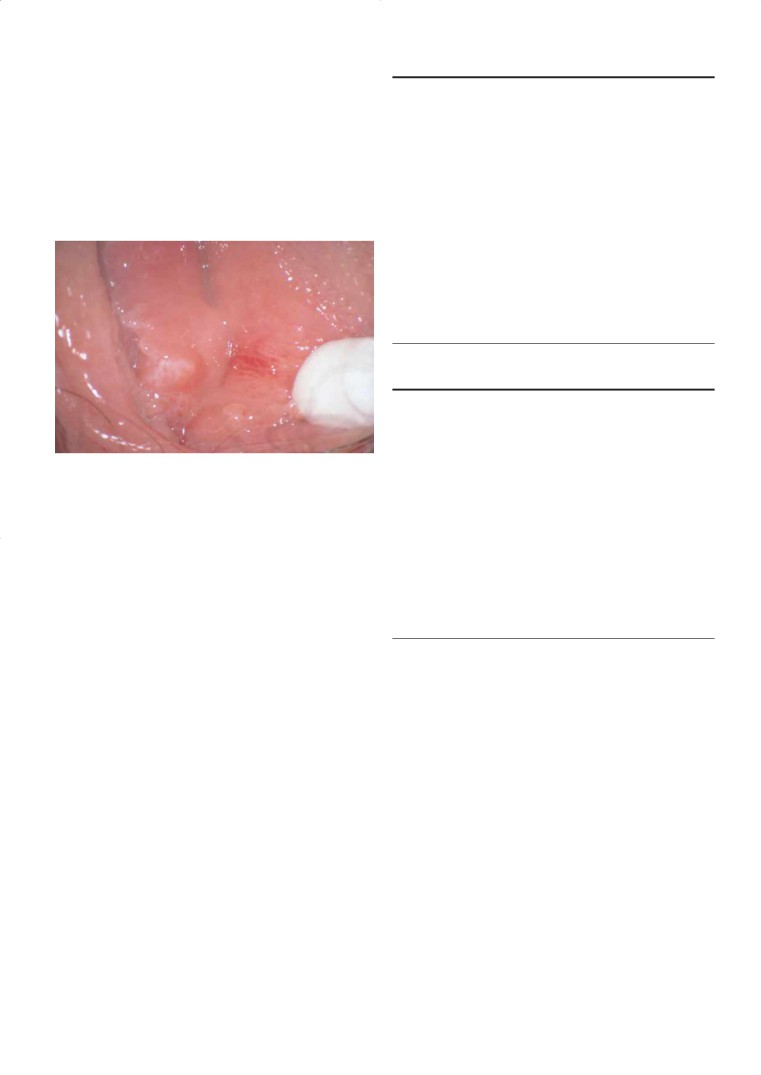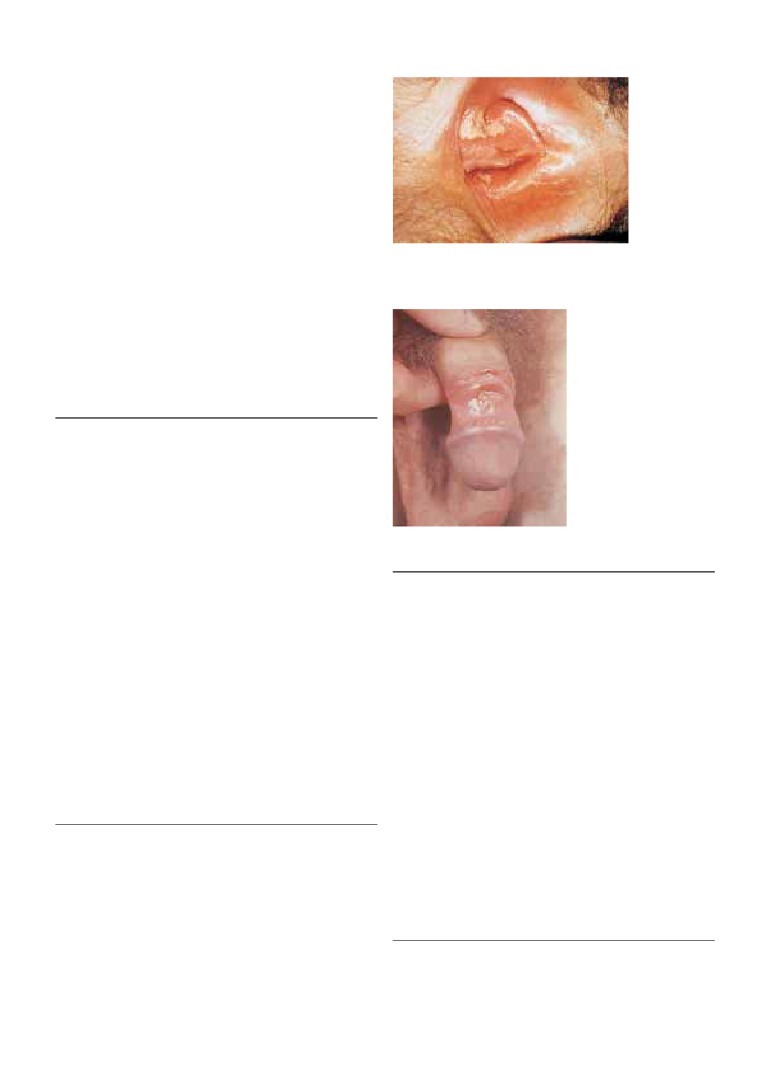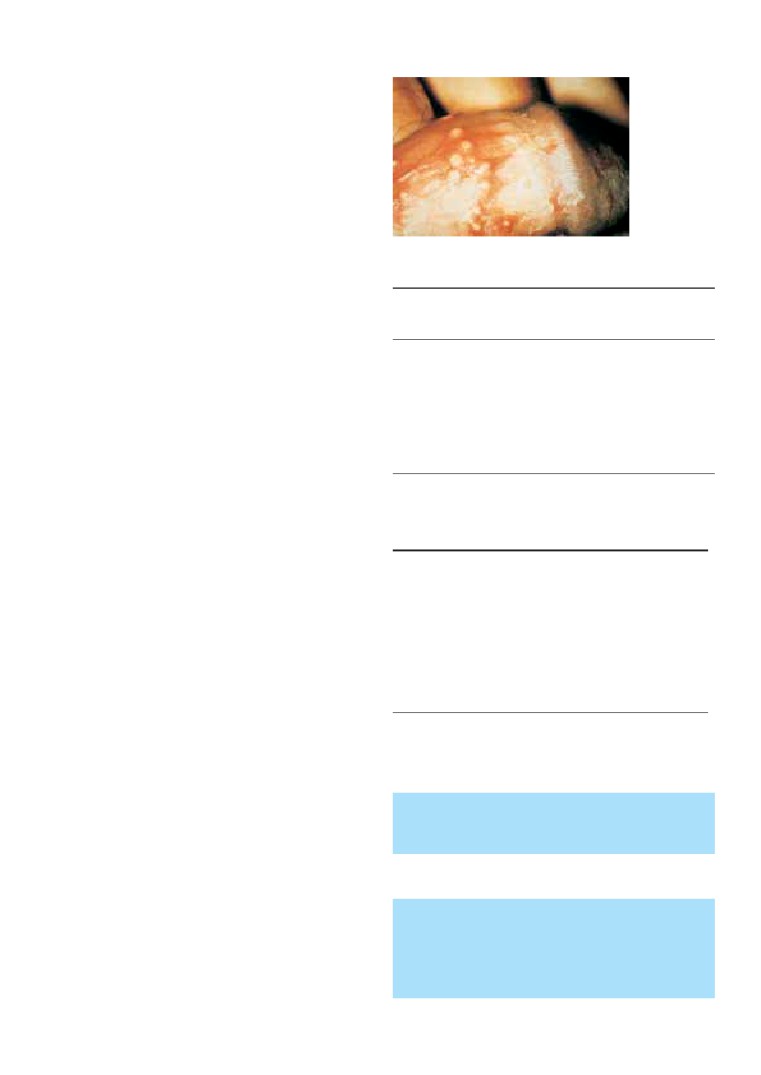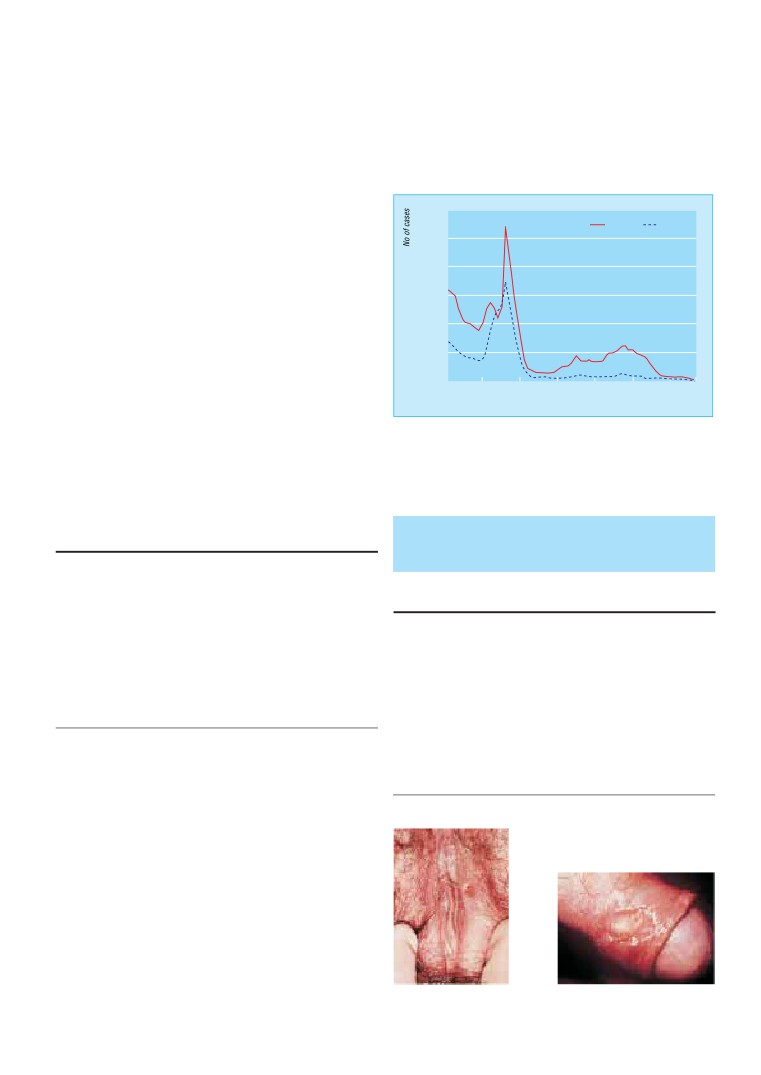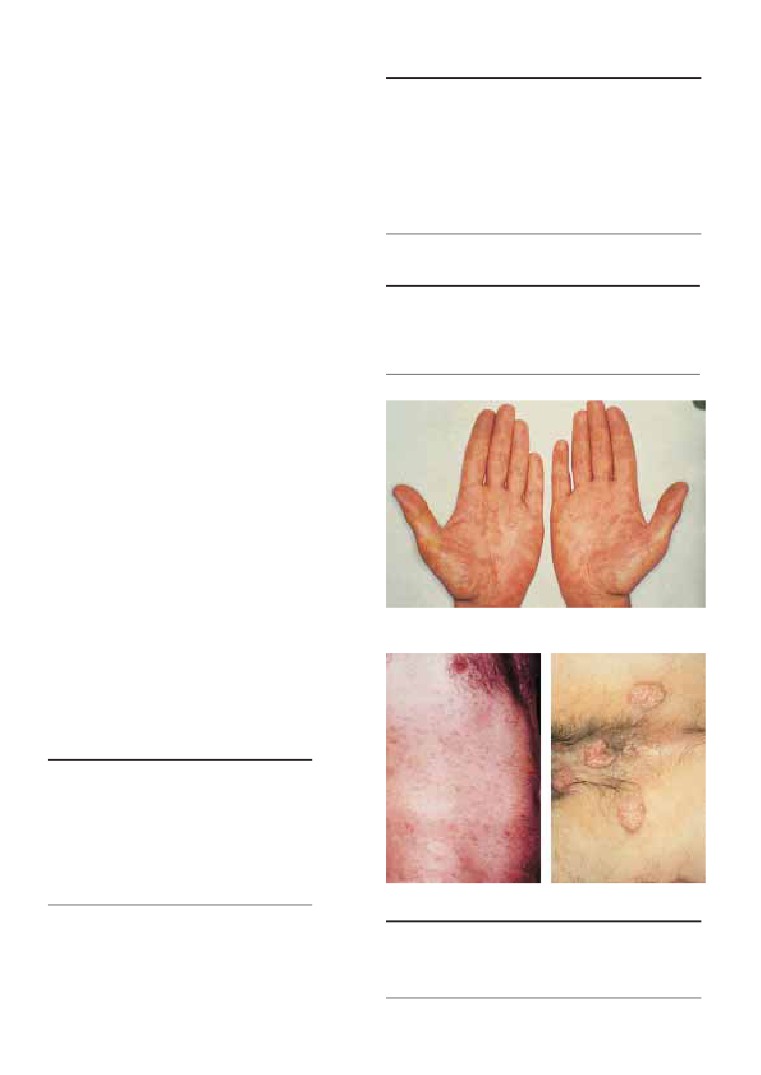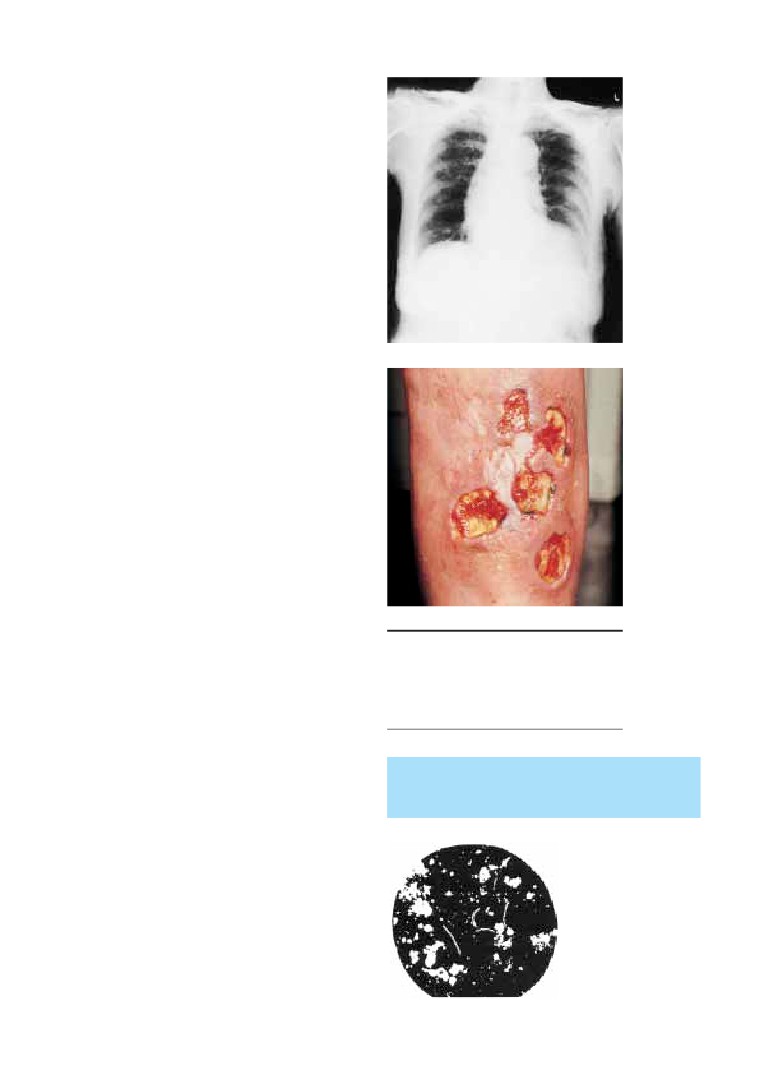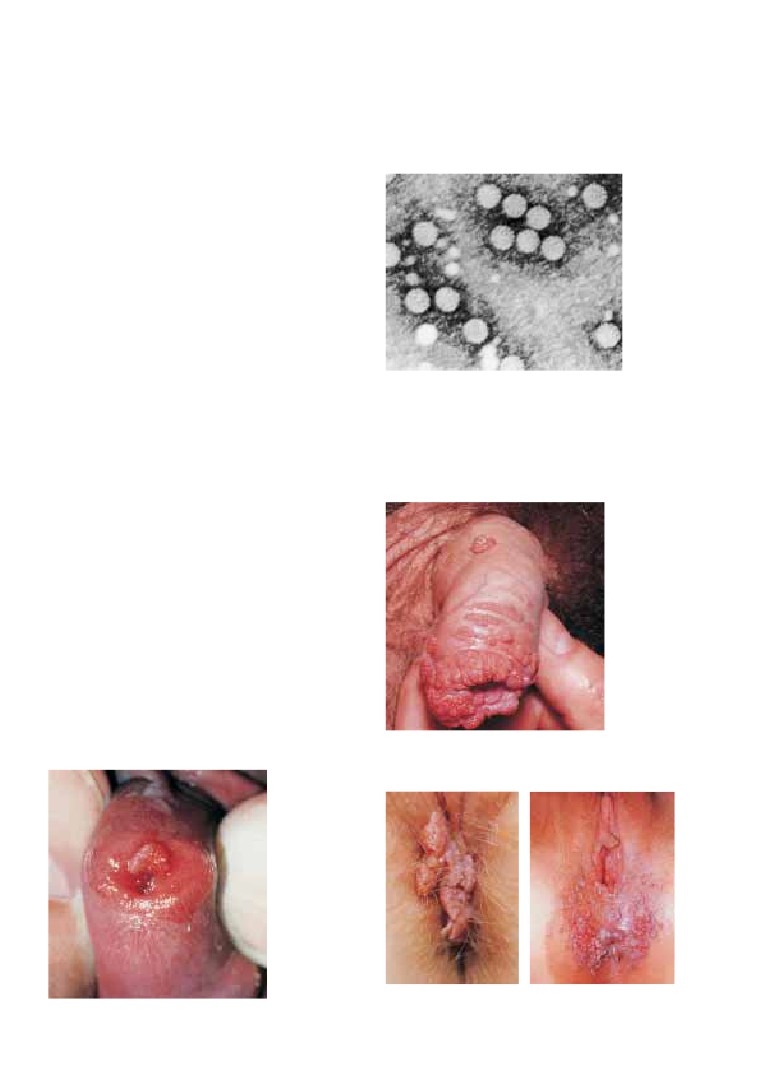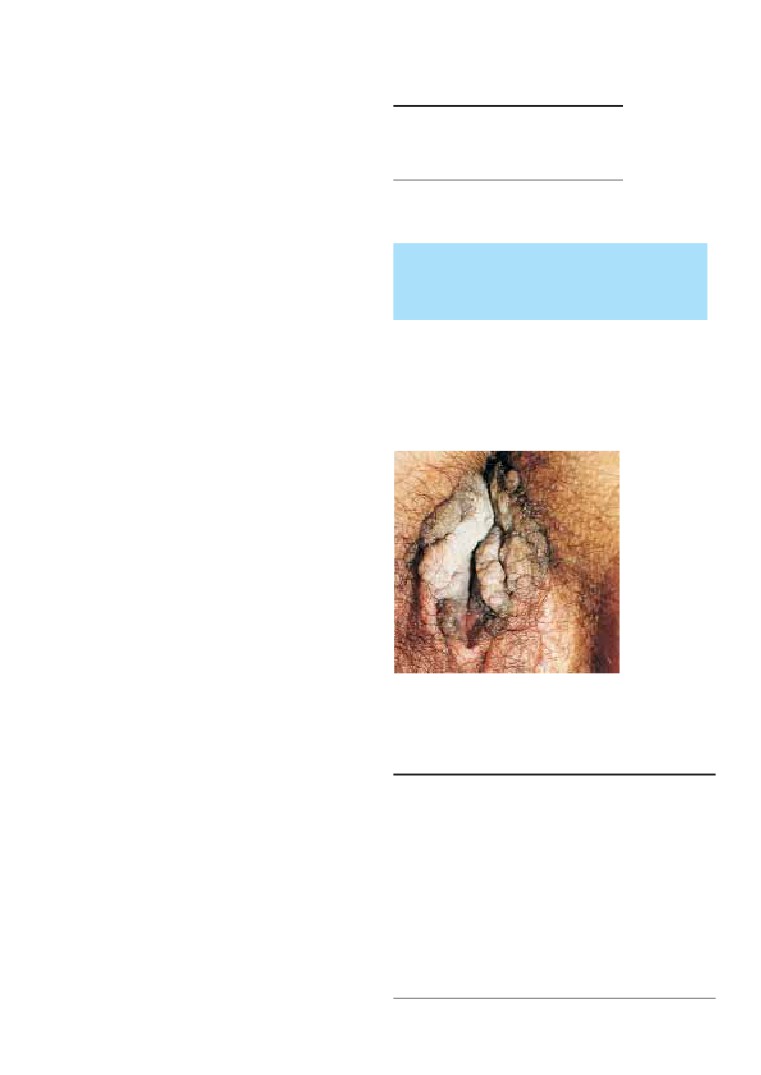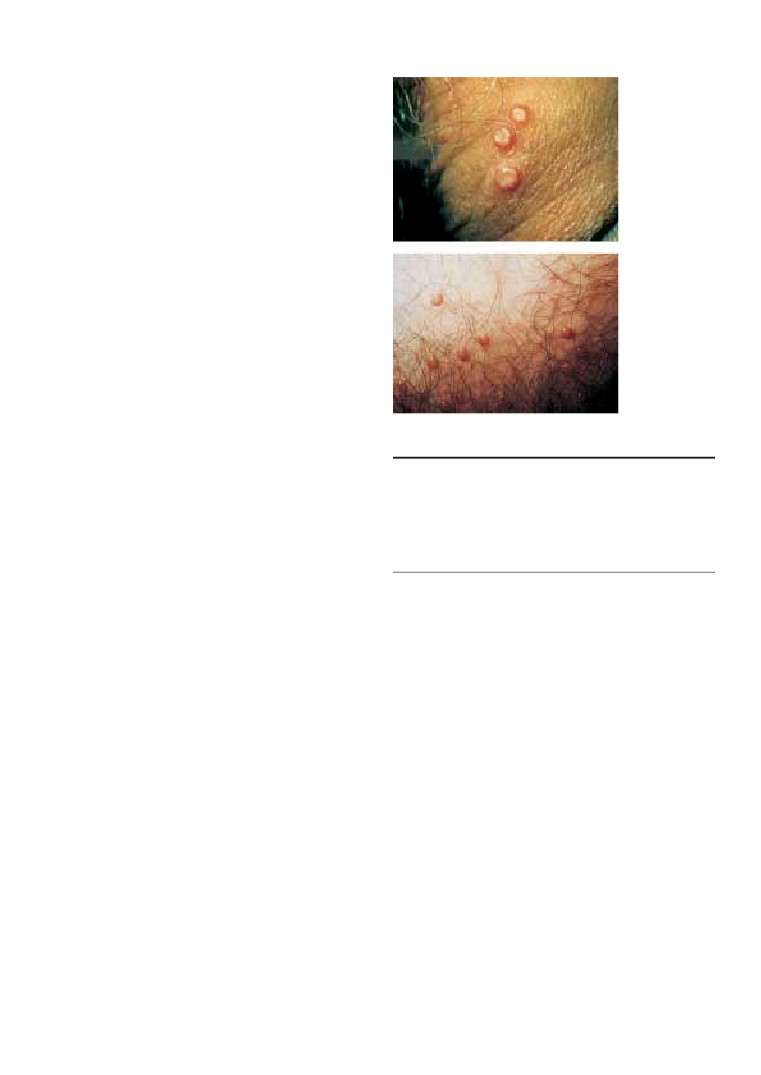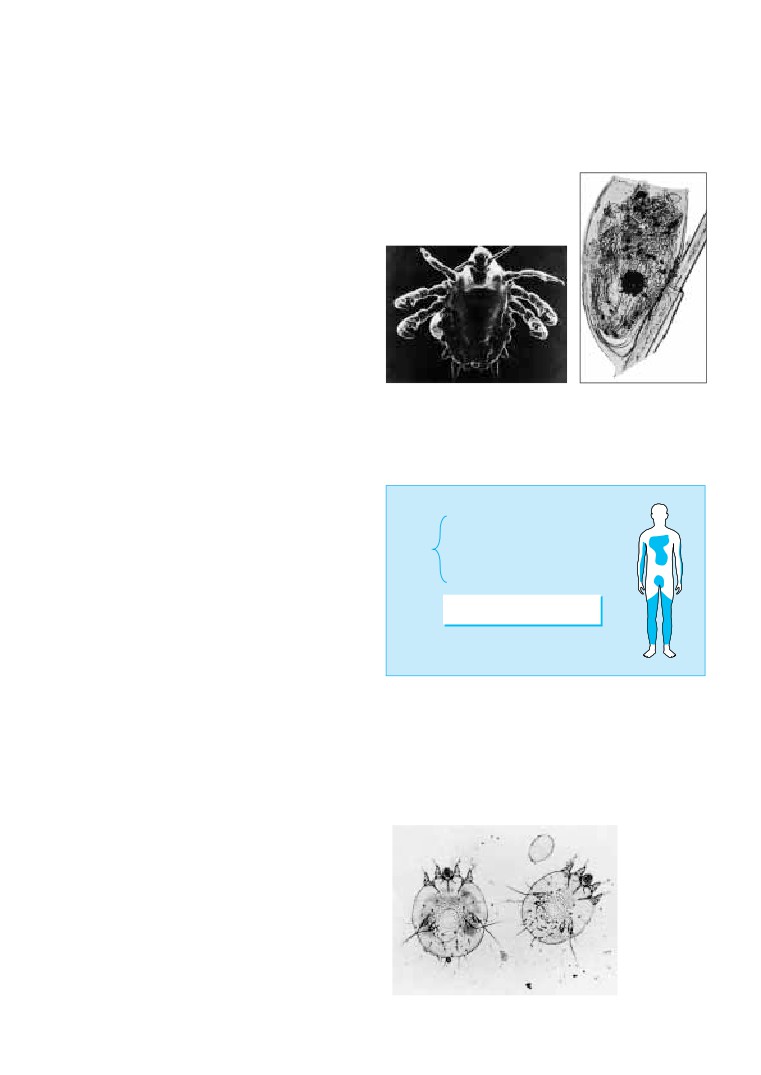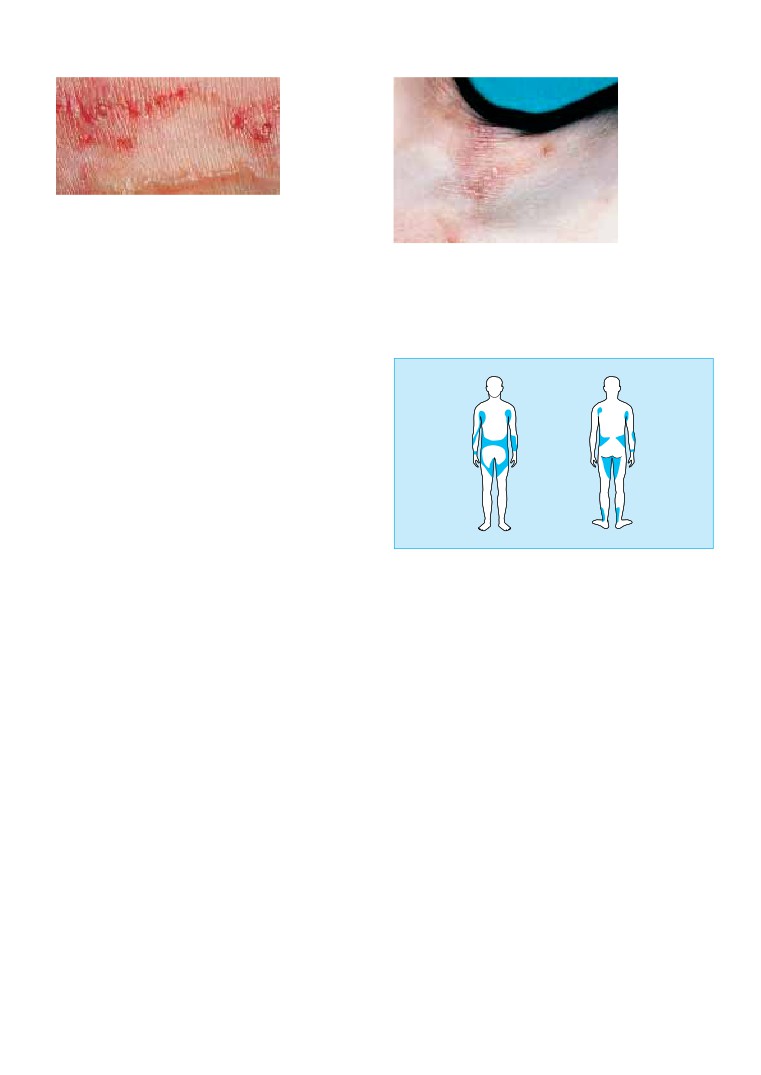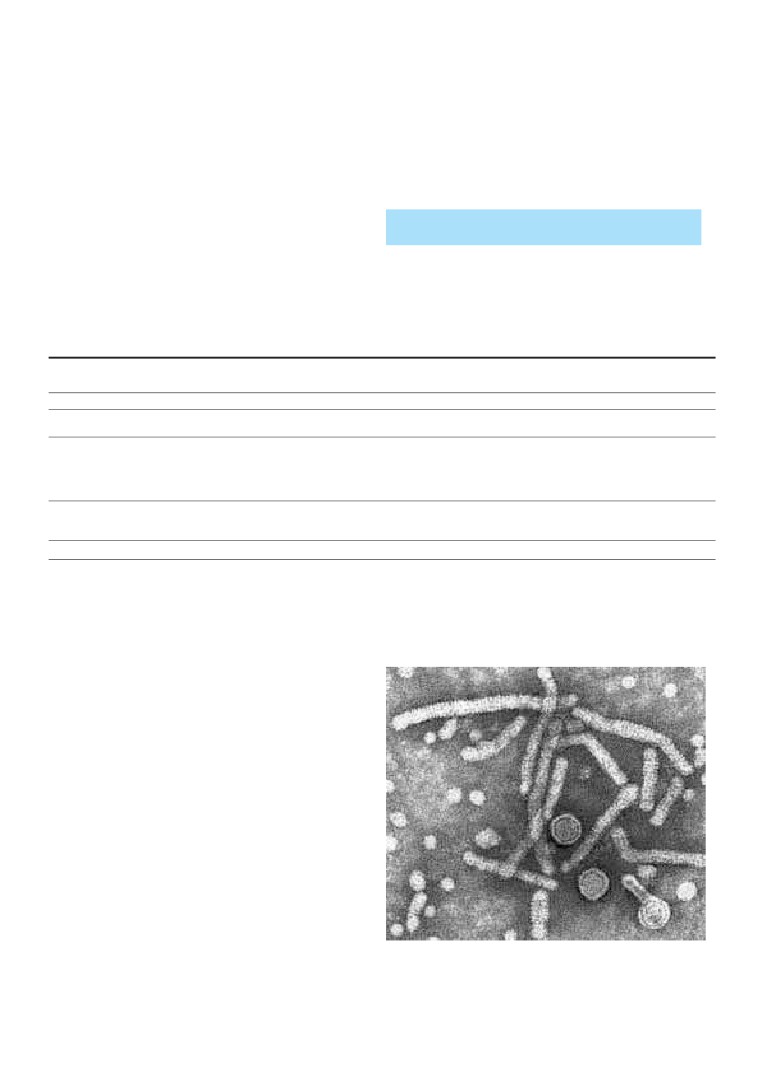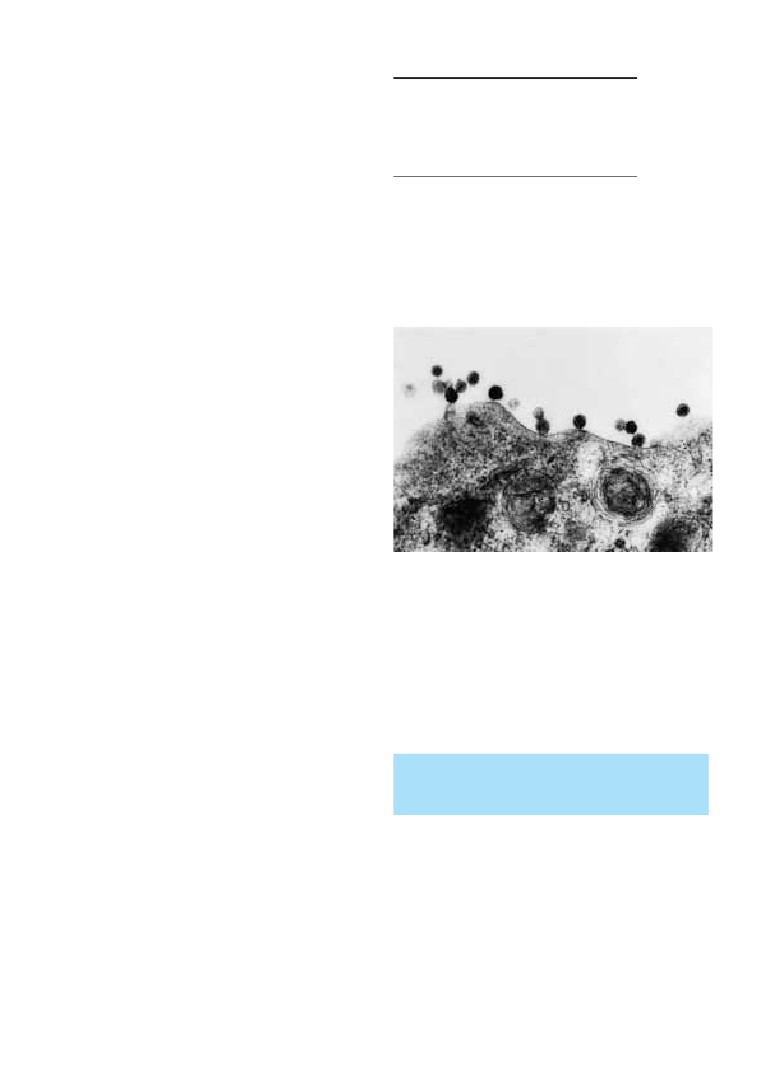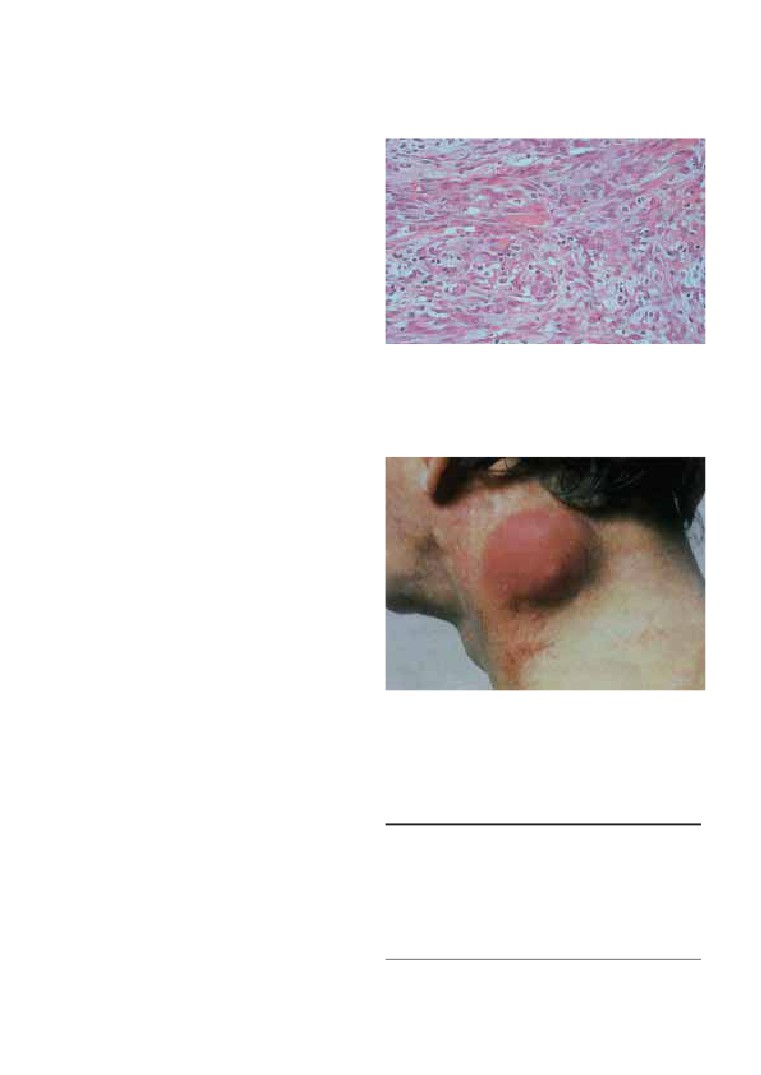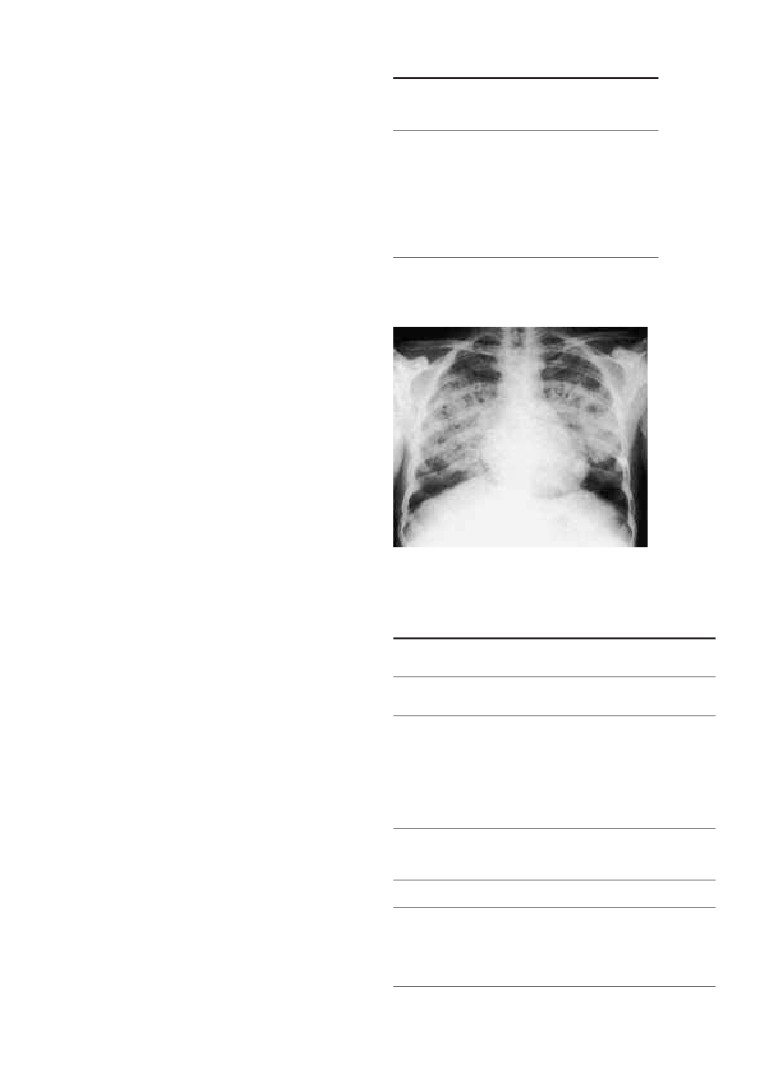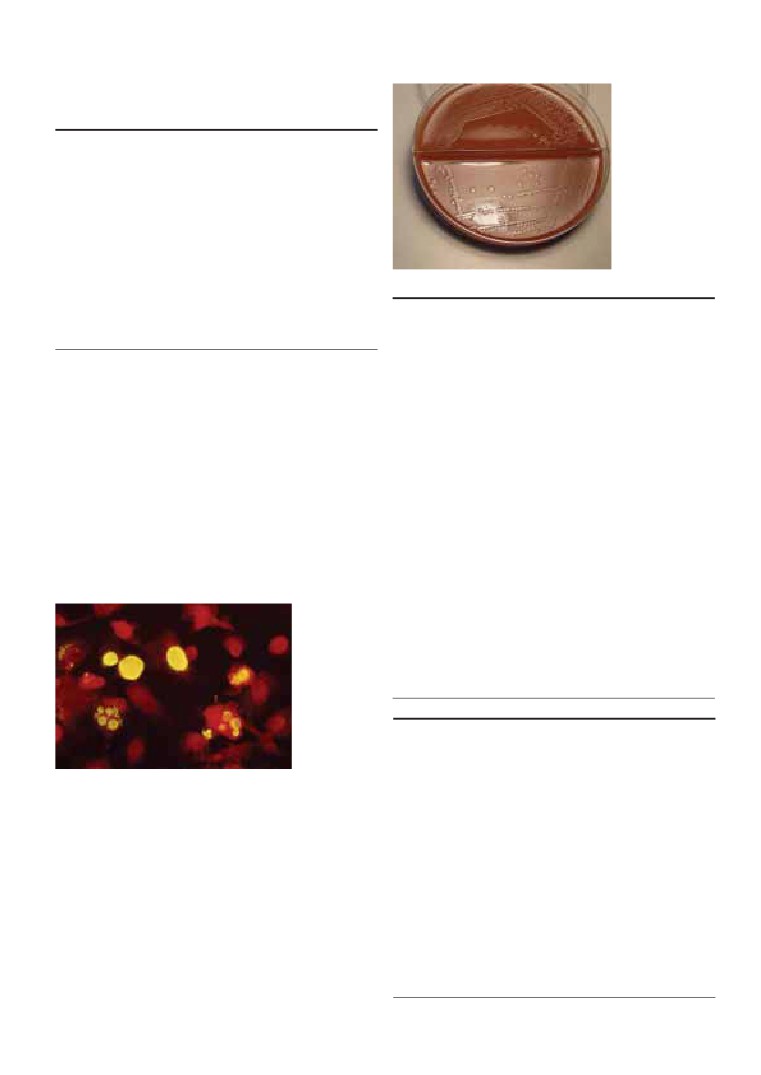ABC of Sexually
Transmitted Infections,
Fifth Edition
Michael Adler, Frances Cowan, Patrick
French, Helen Mitchell, John Richens
BMJ Books
ABC OF SEXUALLY TRANSMITTED INFECTIONS
Fifth Edition
ABC OF SEXUALLY TRANSMITTED
INFECTIONS
Fifth Edition
Michael Adler, Frances Cowan, Patrick French,
Helen Mitchell, and John Richens
Department of Sexually Transmitted Diseases,
Royal Free and University College Medical School
London
© BMJ Publishing Group Ltd 1984, 1990, 1995, 1998, 2004
All rights reserved. No part of this publication may be reproduced, stored in a retrieval system,
or transmitted, in any form or by any means, electronic, mechanical, photocopying, recording
and/or otherwise, without the prior written permission of the publishers.
First published in 1984 as ABC of Sexually Transmitted Diseases.
This fifth edition published in 2004 as ABC of Sexually Transmitted Infections by
BMJ Publishing Group Ltd, BMA House Tavistock Square, London WC1H 9JR
First Edition 1984
Second Edition 1990
Third Edition 1995
Fourth Edition 1998
Second Impression 2000
Third Impression 2001
Fifth Edition 2004
Second Impression 2005
British Library Cataloguing in Publication Data
A catalogue record for this book is available from the British Library
ISBN 0 7279 17617
Typeset by Newgen Imaging Systems (P) Ltd., Chennai, India
Printed and bound by GraphyCems, Navarra
The cover design is a false colour transmission electron
micrograph (TEM) of a cluster of the bacteria, Chlamydia trachomatis
with permission from Alfred Pasieka/Science Photo Library
Contents
Contributors
vi
Preface
vii
1
Why sexually transmitted infections are important
1
Michael Adler
2
Control and prevention
7
Frances Cowan
3
The clinical process
11
Patrick French
4
Examination techniques and clinical sampling
15
Patrick French
5
Main presentations of sexually transmitted infections in male patients
17
John Richens
6
Other conditions of the male genital tract commonly seen in sexually transmitted infection clinics
21
John Richens
7
Vaginal discharge—causes, diagnosis, and treatment
25
Helen Mitchell
8
Pelvic inflammatory disease and pelvic pain
30
Helen Mitchell
9
Sexually transmitted infections in pregnancy
34
Helen Mitchell
10
Other conditions that affect the female genital tract
39
Helen Mitchell
11
Genital ulcer disease
44
Frances Cowan
12
Syphilis—clinical features, diagnosis, and management
49
Michael Adler, Patrick French
13
Genital growths
56
Michael Adler
14
Genital infestations
60
Michael Adler
15
Viral hepatitis
62
Richard Gilson
16
HIV
68
Ian G Williams, Ian Weller
17
Laboratory diagnosis of sexually transmitted infections
80
Beryl West
Appendix: proformas for taking sexual histories
85
Index
87
v
Contributors
Michael Adler
John Richens
Professor, Department of Sexually Transmitted Diseases, Royal
Lecturer, Department of Sexually Transmitted
Free and University College Medical School, London
Diseases, Royal Free and University College Medical School,
London
Frances Cowan
Senior Lecturer, Department of Sexually Transmitted Diseases,
Ian Weller
Royal Free and University College Medical School, London
Professor, Department of Sexually Transmitted Diseases,
Royal Free and University College Medical School, London
Patrick French
Consultant Physician in Genitourinary Medicine, Honorary
Beryl West
Senior Lecturer, Department of Sexually Transmitted Diseases,
Medical Research Council Laboratories, Banjul, Gambia
Royal Free and University College Medical School, London
Ian G Williams
Richard Gilson
Senior Lecturer, Department of Sexually Transmitted
Senior Lecturer, Department of Sexually Transmitted Diseases,
Diseases, Royal Free and University College Medical School,
Royal Free and University College Medical School, London
London
Helen Mitchell
Consultant Physician in Sexual and Reproductive Health,
Honorary Senior Lecturer, Department of Sexually Transmitted
Diseases, Royal Free and University College Medical School,
London
vi
Preface
The first edition of this book appeared 20 years ago, virtually as a single author effort. This fifth edition comes at a time when the
burden of sexually transmitted infections and HIV is at its greatest, yet and with an increasing importance of viral sexually acquired
infections and new diagnostic tests. I am delighted that the fifth edition, and first of the new millennium, is now multi-author, written
with colleagues from the Royal Free and University College. We have tried to capture recent advances at the same time as remaining
practical with different approaches to control, diagnosis, and management depending on resources and facilities available.
Michael Adler,
London 2004
vii
1
Why sexually transmitted infections are
important
Michael Adler
What are sexually transmitted
infections?
Sexually transmitted infections (STIs) are infections whose
primary route of transmission is through sexual contact. STIs
can be caused by mainly bacteria, viruses, or protozoa. In the
developed world, viral diseases have become increasingly
common and important, whereas bacterial STIs are more
common in developing countries, but even this is changing
Why STIs are important
with the increasing recognition of viral diseases.
●
Common
The three most common presenting symptoms of an STI
●
Often asymptomatic
are urethral discharge, genital ulceration, and vaginal discharge
●
Major complications and sequelae
●
Expensive
with or without vulval irritation. The three most common STIs
●
Synergy with HIV
seen in clinics in the United Kingdom are genital warts,
chlamydial infections, and gonococcal infections.
Trichomoniasis, pediculosis pubis, and genital herpes are
common and are sexually transmitted. Scabies and vaginal
candidiasis often are diagnosed in STI clinics, although
they are not usually acquired sexually. Finally, sexually
transmitted hepatitis (A, B, and C) and HIV are becoming
more common.
Sexually transmitted infections and associated presenting symptoms
Urethral
Vaginal
Genital
Skin
discharge
discharge
ulceration
symptoms
Other
Bacteria
Chlamydia trachomatis
/
Neisseria gonorrhoeae
/
Treponema pallidum
Gardnerella vaginalis
/
Haemophilus ducreyi
Klebsiella granulomatis
Shigella
Mycoplasmas
Ureaplasma urealyticum
Mycoplasma genitalium
Parasites
Sarcoptes scabiei
Phthirus pubis
Viruses
Herpes simplex virus types 1
( )
( )
and 2
Wart virus (papillomavirus)
( )
( )
Molluscum contagiosum
(pox virus)
Hepatitis A, B, and C
HIV
Protozoa
Entamoeba histolytica
Giardia lamblia
Trichomonas vaginalis
( )
Fungi
Candida albicans
( )
Common. - Less common
1
ABC of Sexually Transmitted Infections
The consequences
Sexually transmitted infections are a major public health
problem and are one of the most common causes of illness,
20
Male
and even death, in the world today. They have far reaching
Female
health, social, and economic consequences, particularly in the
16
developing world. The World Bank estimated that for women
aged 15-44 years, STIs (excluding HIV) were the second most
12
common cause of healthy life lost after maternal morbidity.
Other studies have estimated that 5% of the total discounted
healthy life years lost in sub-Saharan Africa are caused by STIs,
8
excluding HIV, and that HIV alone accounts for 10% of healthy
life years lost.
4
0
Complications and cost
Most STIs are easy to diagnose and cheap to treat; however, viral
conditions, such as herpes and HIV, are costly and incurable.
Many infections remain unrecognised and undiagnosed, which
results in considerable long term morbidity, which can be costly
Top ten causes of healthy life lost in young adults aged 15-44 years
in human and monetary terms. The complications of untreated
infections are far reaching, and include cancer, reproductive
problems, and pregnancy related problems. Reproductive ill
health (death and disability related to pregnancy and childbirth,
STIs, HIV, AIDS, and reproductive cancers) has been calculated
Major sequelae of STIs
to account for 5-15% of the global burden of disease. Data on
Women
Men
Infants
the monetary costs of the complications of STIs are sparse,
Cancers
Cervical cancer
Penile cancer
particularly for the developing world. American data give
Vulval cancer
Anal cancer
estimates of total direct and indirect costs attributable to STIs to
Vaginal cancer
Liver cancer
Anal cancer
T cell
be $9.9 m annually, rising to $16.6 m if HIV and AIDS are
leukaemia
included. In the United Kingdom only limited data are available.
Liver cancer
Kaposi’s
For example, the prevention of unplanned pregnancy by NHS
sarcoma
contraception services probably saves over £2.5 billion per year,
T cell leukaemia
and the average lifetime treatment cost for an HIV positive
Kaposi’s
sarcoma
person is between £135 000 and £180 000, with a monetary value
Reproductive
Pelvic
Epididymitis
of preventing a single onward transmission of somewhere
health
inflammatory
between £0.5 m to £1 m in terms of individual health benefits and
problems
disease
treatment costs. Finally, but not calculated accurately, dramatic
Infertility
Prostatitis
cost savings can be made by preventing infertility.
Ectopic
Infertility
Few economic data exist in the developing world in relation
pregnancy
Spontaneous
to the consequences of STIs, which are considerable and
abortion
personally devastating. Many women become infertile without
Pregnancy
Preterm delivery
Stillbirth
even realising that they have suffered from pelvic inflammatory
related
disease. Estimates of the burden of infections for women in
problems
urban Africa have shown that chlamydial infection causes an
Premature
Low birth weight
rupture of
average of 4.8 lost days of productive life and syphilis leads to
membranes
8.2 days per capita per year. Estimates suggest that with the
Puerperal sepsis
Pneumonia
high prevalence of syphilis in pregnant women, for example
Postpartum
Neonatal sepsis
10%, up to 8% of all pregnancies (beyond 12 weeks) would
infection
have an adverse outcome.
Acute hepatitis
Congenital
abnormalities
Neurological
Neurosyphilis
Neurosyphilis
Cytomegalo-
Synergy between STIs and HIV
problems
virus
Herpes simplex
It is now recognised that there is a synergy between most STIs
virus
and HIV (particularly ulcerative and inflammatory conditions).
Syphilis
Many research studies in both the developed and developing
associated
world have shown that HIV transmission and acquisition are
neurological
problems
enhanced by the presence of STIs, probably because of the
Other common
Chronic liver
Chronic liver
Chronic liver
inflammatory effect of STIs in the genital mucosa. HIV negative
health
disease
disease
disease
people with an ulcerative STI seem to be particularly vulnerable
consequences
to infection, probably because in addition to the genital
Cirrhosis
Cirrhosis
Cirrhosis
inflammation that occurs, ulceration causes physical disruption
of the skin or mucous membrane, thus making it more
permeable to infection. Non-ulcerative STIs also facilitate HIV
acquisition and transmission but to a lesser degree. As they are
2
Why sexually transmitted infections are important
so common in many parts of the world, however, their impact
Role of STIs in the acquisition of HIV
on the HIV epidemic is likely to be considerable. HIV positive
●
HIV acquisition increases by twofold to fivefold in the presence
people with intercurrent ulcerative and non-ulcerative STIs
of other STIs
have increased rates of genital shedding of HIV, which diminish
●
Ulcers disrupt mucosal integrity and increase the presence or
when the STI is resolved. Clinical studies have shown that HIV
activation, or both, of HIV susceptible cells (for example, CD4
positive patients with a urethral infection have an eightfold
lymphocytes)
increase in HIV-1 RNA in semen, which falls after treatment.
●
Non-ulcerative STIs (such as gonorrhoea, chlamydia,
The likelihood of infection per exposure to HIV for any sexual
Trichomonas vaginalis, and bacterial vaginosis) increase the
presence or activation, or both, of HIV susceptible cells
contact is in the order of 0.1, which will increase considerably
if an STI is present by the order of threefold to fivefold. This
synergy, and a realisation that the control of STIs can have a
profound effect on the incidence of HIV, has led to an
increased drive and interest in STI control programmes.
Eastern Europe and Central Asia
22 million
Western Europe
Size of the problem
17 million
North America
East Asia and Pacific
The size of the global burden of STIs is uncertain because of
14 million
18 million
the lack of effective control and notification systems in many
North Africa and Middle East
10 million
countries. The World Health Organization (WHO) has
South and South East Asia
151 million
estimated a total of 340 million new cases of curable STIs in
adults per annum, mainly in South and South East Asia
Latin America and Caribbean
(151 million new cases per year), and sub-Saharan Africa
38 million
Sub-Saharan Africa
(69 million). In eastern Europe and Central Asia, the estimate
69 million
Australasia
is 22 million, and 17 million in western Europe. The prevalence
1 million
and incidence per million of the population varies regionally,
Estimated new cases of curable STIs among adults (global total 340 million).
for example between sub-Saharan Africa and western Europe it
Data source: World Health Organization
is eightfold and fourfold, respectively.
60
1.6
England
1.4
Scotland
50
New diagnoses of selected STIs in GUM clinics
1.2
Wales
(England, Wales, and Northern Ireland, 2002)
Northern Ireland
40
1.0
% change
0.8
30
2002
1996-2002
0.6
Chlamydia
81 680
139
20
0.4
Genital warts
69 417
17
10
Gonorrhoea
24 953
106
0.2
Genital herpes
18 392
16
0
0
1990
1992
1994
1996
1998
2000
2002
Syphilis
1193
870
Year
All diagnoses and workload at genitourinary medicine clinics by country,
1990-2002. Data are unavailable currently for Scotland for 2000-2 and
Northern Ireland for 1990. Adapted from slide from Health Protection
Agency (www.hpa.org.uk), Communicable Disease Surveillance Centre. Data
from KC60 statutory returns and ISD(D)5 data
The United Kingdom has a network of clinics dealing with
Estimated prevalence and incidence of STIs by region
STIs (departments of genitourinary medicine (GUM)), and
such clinics have seen a very substantial increase in the number
Region
Prevalence per
Incidence per
of attendances over the past decade. Such attendances have
million
million
doubled, reaching 1.5 million in the year 2002. Even in the last
Sub-Saharan Africa
32
69
seven years, increases of over 100% have been seen in cases of
South and South East
48
151
chlamydia, gonorrhoea, and syphilis.
Asia
Latin America and
18.5
38
Gonorrhoea
Caribbean
To interpret differences between countries and even trends is
Eastern Europe and
6
22
difficult because of the variation in reporting practices and the
Central Asia
provision of facilities. Rates of gonorrhoea vary between
North America
3
14
European countries. During the early to mid 1970s the number
Australasia
0.3
1
of cases of gonorrhoea peaked in most European countries.
Western Europe
4
17
The subsequent advent of HIV and AIDS in the 1980s led to
Northern Africa and
3.5
10
safer sexual practices and a reduction in the incidence of
Middle East
gonorrhoea, which has not been sustained in all countries. For
East Asia and Pacific
6
18
example, between 1996 and 2002 an increase has been seen in
TOTAL
116.5
340
both male and female cases of gonorrhoea in England
3
ABC of Sexually Transmitted Infections
and Wales (114% increase in the number of cases in
heterosexual men from 8051 to 17 260, and an 86% increase in
14000
Men (heterosexually acquired)
cases in women from 4045 to 7542). The incidence of
12000
gonorrhoea has increased since 1996 in homosexual men,
Men (homosexually acquired)
particularly in those living in London, as has that of other STIs.
10000
Women
In 2002, 16% of gonorrhoea diagnoses in men, and 19% of
8000
those in London, were acquired through homosexual sex.
6000
Other western European and Scandinavian countries have
also seen recent increases, for example in France and Sweden.
4000
Eastern Europe, and particularly the newly independent states
2000
of the former Soviet Union, has seen an epidemic of STIs, with
high rates of gonorrhoea in Estonia, Russia, and Belarus.
0
1995
1996
1997
1998
1999
2000
2001
2002
Year
Uncomplicated gonorrhoea
Genital warts (first attack)
Cases of uncomplicated gonorrhoea seen in genitourinary medicine clinics
Genital herpes simplex virus (first attack)
by sex and male sexual orientation in England, Wales, and Northern
Genital chlamydial infection
Ireland, 1995-2002. Adapted from slide from Health Protection Agency
Infectious syphilis (primary, secondary, and early latent)
3000
1000
KC60 statutory returns
2500
800
2000
600
1500
400
600
1000
Men (heterosexually acquired)
200
500
500
Men (homosexually acquired)
400
0
0
Women
1995
1996
1997
1998
1999
2000
300
Year
200
New diagnoses of selected STIs in men who have sex with men, England and
100
Wales, 1995-2000. Adapted from slide from Health Protection Agency
0
1995
1996
1997
1998
1999
2000
2001
2002
Year
Syphilis
Syphilis is now rare in western Europe and North America,
Cases of infectious syphilis (primary and secondary) seen in genitourinary
which is mainly due to the control of early acquired infectious
medicine clinics by sex and male sexual orientation in England, Wales, and
syphilis in women and screening of pregnant women for
Northern Ireland, 1995-2002. Adapted from slide from Health Protection
syphilis. In most western European countries the incidence
of syphilis has continued to decline to below five per 100 000.
As mentioned above, an epidemic of most STIs has occurred in
eastern Europe, with a recent epidemic of syphilis in all the
newly independent states of the former Soviet Union. This
epidemic is the vanguard of an HIV epidemic, and outbreaks of
HIV have been reported in intravenous drug users, particularly
in Belarus, Russia, and Ukraine. Likewise, syphilis is still a
Men
Women
major clinical problem and a cause of genital ulceration in the
1200
Age (years)
developing world.
<16
It is of concern that syphilis also is increasing again in the
1000
16-19
United Kingdom. In the past seven years, the cases of infectious
20-24
syphilis have increased by 870%, particularly in men
800
25-34
heterosexual and homosexual.
35-44
600
>45
Chlamydia
400
Chlamydia is still a major public health problem in most of
Europe and North America. In the United Kingdom, infection
200
with Chlamydia trachomatis is now the most common curable
bacterial STI. Since 1996 the number of cases has increased,
0
with cases in women outnumbering cases in men. In 2002,
81 680 people with chlamydial infections attended clinics.
Year
Year
This condition is most commonly seen in young people; the
peak age is between 20 and 24 years in men and between 16
Diagnoses of uncomplicated genital chlamydial infection in genitourinary
medicine clinics by sex and age group in the United Kingdom, 1995-2002.
and 19 years in women. Screening surveys performed outside
Data are unavailable for Scotland for 2000-2. Adapted from slide from Health
normal STI clinic environments also show high levels in
antenatal and gynaecology clinics, general practice, and family
Centre. Data from KC60 statutory returns and ISD(D)5 data
4
Why sexually transmitted infections are important
planning and pregnancy termination clinics, with the
prevalence rate ranging from 4.5% to 12%.
Genital herpes and warts
Compared with gonorrhoea and chlamydia, the increase in
cases of genital herpes and warts has slowed down in British
GUM clinics in the past few years.
Global totals—gonorrhoea 62 million, syphilis 12 million, chlamydia 92 million
Eastern Europe and Central Asia
Gonorrhoea 3 million
Syphilis 100 000
Chlamydia 6 million
Western Europe
Gonorrhoea 1 million
Syphilis 140 000
Chlamydia 5 million
East Asia and Pacific
North America
Gonorrhoea 3 million
Gonorrhoea 1.5 million
Syphilis 240 000
Syphilis 100 000
Chlamydia 5.3 million
Chlamydia 4 million
North Africa and Middle East
Gonorrhoea 1 million
Syphilis 370 000
South and South East Asia
Chlamydia 3 million
Gonorrhoea 27 million
Syphilis 4 million
Chlamydia 43 million
Latin America and Caribbean
Gonorrhoea 7.5 million
Syphilis 3 million
Sub-Saharan Africa
Australasia
Chlamydia 9.5 million
Gonorrhoea 17 million
Gonorrhoea 120 000
Syphilis 4 million
Syphilis 10 000
Chlamydia 16 million
Chlamydia 340 000
Estimated new cases of the three most common STIs among adults
STIs in developing countries
Sexually transmitted infections have a much higher incidence
and prevalence in developing countries and are among the top
five reasons for consultation in general health services in many
African countries. Routine and accurate surveillance data are
often lacking, and an understanding of the burden of infection
High rates of syphilis, chlamydia, and gonorrhoea are
tends to come from WHO estimates and ad hoc surveys, usually
seen particularly in sub-Saharan Africa and South and
in high risk groups.
South East Asia
Particularly high rates of infections are seen in groups such
as female prostitutes and their clients and truck drivers.
Prostitution continues to be an important factor in the
transmission of STIs in developing countries. For example, in
an urban Kenyan STI clinic, 60% of men with a diagnosis of
gonorrhoea or chancroid reported commercial sex exposure as
the probable source of infection. Genital ulcer disease is more
20
70
Commercial sex workers
17.4
STI clinics
60
16
Family planning clinics
50
12
40
8.4
30
8
6.7
20
4
2.5
10
0
0
Gonorrhoea
Chlamydia
Syphilis
Cameroon
South Africa
Central African
Burkina Faso
Republic
STIs in women in Africa
Syphilis prevalence rates (%) in pregnant women in Africa in 1990s
5
ABC of Sexually Transmitted Infections
frequent in developing countries (syphilis, chancroid,
lymphogranuloma venereum, and granuloma inguinale), and
Men
Women
40
in sub-Saharan Africa, 20-70% of patients who attend clinics
1990
present with ulcers. In commercial sex workers, the prevalence
2000
of gonorrhoea can reach nearly 50%, and the prevalence of
30
syphilis ranges from 2% to 30% for acute or previous infection.
Infection with herpes simplex virus (type 2) is almost universal
20
among commercial sex workers in various African countries, for
example Zimbabwe. Rates of syphilis in women who attend
antenatal clinics are high, with rates reaching 17% in
10
Cameroon. Levels of chlamydia can be as high as 30%.
The incidence of STI complications and their sequelae is
0
0
1
2
3-4
5-9
10
0
1
2
3-4
5-9
10
much higher in developing countries because of the lack of
No of Partners
resources and adequate diagnosis and treatment. Particular
complications are adverse pregnancy outcomes for mother and
Percentage distribution of heterosexual partners in lifetime by sex,
baby, neonatal and infant infections, infertility in both sexes,
1999 and 2000. Adapted from National Survey of Sexual Attitudes and
Lifestyles, 2000
ectopic pregnancy, urethral strictures in males, and blindness in
infants caused by gonococcal and chlamydial ophthalmia
neonatorum and in adults caused by gonococcal
keratoconjunctivitis, as well as genital cancers, particularly
cancers of the cervix and penis.
Men
Women
Homosexual
Why are STIs increasing?
partner <5 years
Like many other medicosocial conditions, for example suicide,
Concurrency
<1 year
alcoholism, cancer, and heart disease, the explanation for the
increase is multi-factorial. Attitudes towards sex and sexual
Intravenous
drug use
behaviour have changed. The survey of Sexual Attitudes and
<5 years
Lifestyle carried out in the United Kingdom plotted changes
Paid for sex
1990
between 1990 and 2000.
<5 years
2000
●
Age at first intercourse has declined, and half of all teenagers
0
5
10
15
0
5
10
15
have sex before they are 17 years of age
%
%
●
The number of lifetime male and female heterosexual
partners has increased since 1990, with the highest increases
Changes in behaviour over time. Adapted from National Survey of Sexual
in young people
Attitudes and Lifestyles, 2000
●
The proportion of men and women who have concurrent
relationships (having more than one sexual partner at the
same time) has increased
●
Condom use has increased in the United Kingdom but may
Men
Women
be offset by the increase in the number of sexual partners.
Anal sex
For example, the proportion of the population who reported
< one year
two or more partners in the past year and who did not use
condoms consistently has increased since 1990 from 13.6% to
15.4% for men and from 7.1% to 10% for women
Consistent use
of condoms
●
The proportion of men in the United Kingdom who have
ever had a homosexual partner in the last five years increased
between 1990 and 2000. Unsafe sex in homosexual men has
"Unsafe sex"
1990
< one year
increased, particularly in London
2000
●
Populations are now more mobile nationally and
0
10
20
30
0
10
20
30
internationally. Certain groups (tourists, professional
%
%
travellers, members of the armed forces, and immigrants) are
at risk. They are separated from their families and social
"Unsafe sex" means > 2 partners last year and inconsistent use of condoms in last four weeks
restraints and are more likely to have sexual contact outside a
Changes in behaviour over time. Adapted from National Survey of Sexual
stable relationship. In addition, poverty, urbanisation, war,
Attitudes and Lifestyles, 2000
and social migration often result in increased levels of
prostitution.
Further reading
Conclusion
●
Adler MW, Cowan FM. Sexually transmitted infections. In:
Detek R, McEwen J, eds. Oxford textbook of public health: the practice
Sexually transmitted infections are a major public health
of public health. 4th ed, vol 3. Oxford: Oxford University Press,
problem throughout the world, in terms of morbidity and
2002, pp 1441-52
●
Adler M, Foster J, Grosskurth H, Richens J, Slavin H. Sexual health
mortality and in their facilitatory role in the acquisition and
and care: sexually transmitted infections, guidelines for prevention and
transmission of HIV. Prevention programmes are essential to
treatment. London: Overseas Development Administration, 1996
deal with these issues (see Chapter 2).
6
2
Control and prevention
Frances Cowan
Sexually transmitted infections (STIs) represent one of the
major public health problems in the world today, as outlined in
Chapter 1. The demographic, sociological, economic, and
behavioural changes seen throughout the world in the past
40 years will continue to drive the spread of STIs.
Determinants of STI spread
Ro cd
Pattern of spread
Ro average number of new infections that result from one
infection
Several factors are known to be important in maintaining the
transmissibility
spread of STIs in communities. A simple arithmetic formula
c average rate of acquiring partners
has been developed that makes it possible to anticipate the
d duration of infection
pattern of spread of STIs in communities under certain
circumstances. If the average number of infections that result
from one infection is greater than one, then the rate of that
STI will increase in the community. Conversely, if the average
number of infections is less than one, then the rate of spread
of the STI will fall. Reductions in any of these variables at a
community level will decrease the average number of new
infections that result from one infection in that community.
RO >1
RO <1
Principles of control
= individual with infection
The approach to controlling STIs and the emphasis placed on
= individual who
different components will depend on the local pattern and
remains uninfected
distribution of STIs in the community and whether one is
working in a setting that is resource rich or resource poor.
Pattern of spread
However, the same general principles will apply.
Prevention can be aimed at uninfected people in the
community to prevent them from acquiring infection (primary
prevention) or at infected people to prevent the onward
transmission of the infection to their sexual partners (secondary
prevention). Although effective primary prevention can
theoretically reduce the prevalence of viral and bacterial STIs,
Principles of effective STI control
secondary prevention is much more effective at reducing the
●
Reduce infectiousness of STIs
prevalence of bacterial STIs, which all are curable with
●
Condoms
antibiotics. In fact, the population prevalence of a bacterial STI
●
Reduce duration of infection
can be reduced entirely through effective secondary prevention
●
Encourage diagnosis and treatment of symptomatic infection
activities without any reduction in risky sexual behaviour
(encourage health seeking behaviour) and asymptomatic
occurring.
infection (screening, partner notification, and mass or
Countries that combine primary and secondary prevention
targeted treatment)
approaches, at the individual and population levels, have
●
Reduce risky behaviour
●
Reduce rate of partner change
managed substantially to reduce the burden of infection in
●
Delay onset of sexual intercourse
their population. Effective implementation of prevention
●
Improve selection of partners
programmes requires strong political leadership and genuine
commitment, without which the most well designed and
appropriate programmes are likely to founder. Countries such
as Thailand, Brazil, Uganda, and Senegal have seen a dramatic
impact on their rates of STIs and HIV, which has been
facilitated greatly by political support at the highest level.
Interventions that reduce the rate of STI can be aimed at
Primary prevention
the entire community or targeted at specific groups who are at
●
Behavioural interventions are aimed at enhancing knowledge,
high risk of, or are particularly vulnerable to, infection. One to
skills, and attitudes to help people protect themselves against
one prevention interventions can take place in clinic settings,
infection (for example, health promotion to decrease partner
as outlined in Chapter 3.
change and increase condom use)
●
Structural interventions are aimed at broader societal and
economic issues that drive the spread of STIs
Primary prevention
●
Biomedical interventions include condoms, vaccines, vaginal
microbicides, or male circumcision to prevent the acquisition of
Primary prevention interventions aim to keep people
infection
uninfected. These approaches are obviously not mutually
7
ABC of Sexually Transmitted Infections
exclusive. Individual behaviour change probably will be best
Ways for an individual to reduce their risk of contracting
sustained in a community that is broadly supportive. In
an STI
addition, the broader cultural mores of the community will
●
Abstain
influence greatly the feasibility of delivering education in that
●
Have a mutually monogamous relationship with someone who is
community and will also affect how people respond to it.
uninfected
●
Select partners whose past and current behaviour puts them at
Education and information
low risk of infection. Consider both being screened for infection
The aim of sexual health promotion is broader than
before unprotected sex
minimising the risks associated with sexual intercourse and
●
Reduce the numbers of sexual partners
●
Avoid sex with people who have symptoms of a STI or oral “cold
other sexual practices. It also aims to facilitate development of
sores”
healthy sexual behaviour patterns and relationships. Although
●
Use condoms consistently on every occasion with all partners
supplying appropriate and timely factual information is very
●
In open relationships couples agree to have only non-penetrative
important and the first step in this process, evidence shows that
or protected sex outside their main relationship
providing information alone is not enough to bring about a
change in behaviour. Widely available information about STIs
(or contraception) has not been proved to encourage immoral
or promiscuous behaviour.
Health education needs to inform people of the advantages
of discriminate and safer sex and the means to prevent or
reduce the risk of infection. Although the best way to avoid
STIs is to avoid sexual intercourse, this is not a realistic or
acceptable message. People need health messages that are
tailored to their lifestyles and needs, which allow them to make
informed choices about their behaviour. Factors other than
lack of knowledge contribute to an individual’s ability to
practice safer sexual behaviour, however, including perception
of health risk, low self esteem, poor self efficacy, peer pressure,
and power and sex inequalities. Drug and alcohol use also have
an influence. Increasingly, health promotion interventions aim
to address some or all of these factors.
That health promotion campaigns address the issues
directly related to the infections themselves is also important,
including what the various infections are; how to recognise the
symptoms; the short and long term consequences of infection;
and where to access appropriate advice, diagnosis, and
treatment. As most of those infected with an STI have either
asymptomatic or unrecognised infection, however, people also
interactive quizzes to show the difficulty in distinguishing infected from
need to be aware that they cannot rely on symptoms alone to
uninfected people
distinguish infected people from uninfected people and that
they themselves can be infected even if asymptomatic.
Structural or societal interventions
Clearly it may be unrealistic to expect individual behaviour
change when the broader societal and cultural context is not
supportive of this change.
Structural factors that may hinder behaviour change
include physical, social, cultural, organisational, economic, and
Interventions that are most effective are those that draw on
legal or policy aspects of the environment. For example,
social and psychological theories of behaviour change
derived from research that seeks to understand the origins
interventions that promote condom use and partner reduction
and control of sexual behaviour
strategies for impoverished heterosexual women in developing
countries may be impractical, because women lack the power to
negotiate condom use, particularly with their regular partners
or husbands, and because they may be economically dependent
on sex work to provide income for basic necessities, such as
food or their children’s school fees. In this scenario,
interventions need to include men and, more broadly, tackle
women’s rights regarding inheritance, owning property, and
Structural interventions
earning income legitimately.
These can take place at various levels, including
●
Community level (for example, legislating to change the age of
Biomedical interventions
consent for homosexual men or inheritance laws)
Male condoms, if used properly and consistently, can reduce
●
Organisational level (for example, providing reproductive health
the risk of transmission of many STIs. They are more effective
clinics in schools or the workplace)
for some STIs than for others, however, and their use does not
●
Individual level (for example, microfinance initiatives that seek
guarantee that infection will not occur. Female condoms are
to train women to become less economically dependent)
also advocated to reduce STI and HIV transmission and are
attractive because they are under the control of the woman,
8
Control and prevention
although evidence of their effectiveness is less than for the
male condom.
Hepatitis B vaccine is the only vaccine that effectively
prevents acquisition of an STI, although vaccines for other STIs
are currently in development or being evaluated. In addition,
several other biomedical approaches for reducing the risk of
STIs are currently being explored, including presumptive
periodic treatment for people who are at high risk of STIs,
male circumcision, and vaginal microbicides. However, all these
interventions are in the early stages of evaluation.
Secondary prevention
Secondary prevention interventions aim to reduce the risk of
individuals infected with an STI transmitting this infection to
their sexual partners. These approaches entail increasing
screening and appropriate treatment of symptomatic and
asymptomatic people; encouraging health seeking behaviour;
and tracing, screening, and treating sexual partners of infected
people (contact tracing). Other more experimental approaches
have included presumptive treatment of people at high risk of
infection.
The Department of Health’s website
Screening and treatment
condoms for sexual health
Early diagnosis and treatment are cheap, whereas the late
sequelae of untreated disease are expensive. For example, if
gonorrhoea and chlamydial infection (a major cause of pelvic
inflammatory disease (PID)) are well controlled, then PID and
all its serious long term sequelae can be prevented.
In many parts of the world specialised STI clinics have been
Secondary prevention
established to provide screening and treatment for people with
●
Enhancing health seeking behaviour
symptoms of, or who feel they are at risk of, an STI. These
●
Improving access to for STIs diagnosis and treatment
clinics provide prompt laboratory or microbiological based
●
Ensuring appropriate case management
diagnosis (or both) and treatment, minimise the incidence of
●
Early detection and treatment of symptomatic and
complications and disability, trace and treat sexual contacts,
asymptomatic infection
●
Partner notification (contact tracing)
and provide education. These are sometimes known as vertical
services.
Clearly the extent of screening will vary according to the
laboratory facilities available. In most western countries, clinics
screen for syphilis, gonorrhoea, chlamydia, Trichomonas
vaginalis, bacterial vaginosis, and Candida as a matter of course
and offer HIV antibody testing. Those presenting with
To be most effective, clinics should be open access and
symptoms will have additional screening tests (see
provide confidential, non-judgmental care and appropriate
Chapters 3-7). Screening at an STI clinic, however, does not
health care for which there is no charge. Health education
guarantee that a person is free of all infections. It is not routine
can be used to enhance health seeking behaviour and to
to screen asymptomatic individuals for herpes simplex virus or
encourage people without symptoms to attend for screening
human papillomavirus. Those people found to be infected
if they are at high risk of infection
should be managed according to local treatment guidelines.
Increasingly, single dose treatments are available for STIs, and
the use of these will maximise compliance and minimise the
development of drug resistance.
In countries without access to a laboratory, most people
Specialist services for STIs in the United Kingdom
who present to clinic will be symptomatic, and screening
●
Genitourinary medicine—269 clinics and 273 consultants
may be limited to clinical examination with or without
●
Features of service
●
Open access and free
microscopy. The sensitivity and specificity of clinical
●
Confidential
examination for distinguishing STI causes of genital symptoms
●
Screening and treatment for STIs
from non-STI causes, particularly in women, has improved
●
Screening and treatment for HIV
somewhat by using a system for scoring risk. For example,
●
Contraception and psychosexual problems
having had a new partner recently greatly increases an
●
Miscellaneous care (for example, for urinary tract
person’s risk of contracting an STI. The services are
infections and genital dermatological conditions)
non-specialised and provided as part of other general medical
●
Partner notification
●
Health promotion, counselling, and advice
services, for example in primary health centres, maternal and
●
Outreach and special services
child health centres, and family planning clinics, and by private
●
Training and research
practitioners, pharmacists, traditional healers, and street
9
ABC of Sexually Transmitted Infections
vendors. Vertical and integrated services for managing
Vertical services for STIs
individuals with STIs have both advantages and disadvantages.
Advantages
Disadvantages
In resource poor settings where clinics have limited access
●
Specialists
●
Expensive
to diagnostic facilities, the World Health Organization
●
Accurate laboratory
●
Delays in diagnosis
recommends that the syndromic approach is used for patient
diagnosis with appropriate
●
Limited availability
management. This uses algorithms based on the common
treatment
●
Limited coverage of population
presenting signs and symptoms, for example genital ulceration
●
Reference laboratory
●
Stigmatisation
and urethral or vaginal discharge. Rather than healthcare
●
Training
●
Poor sustainability
●
Monitoring, surveillance,
worker trying to decide on the aetiology of the symptoms on
and research
the basis of examination alone, the relevant algorithm shows
●
Asymptomatic infection
treatment for all the common STI causes of that syndrome in
may be detected
that setting. Syndromic management algorithms differ in
different parts of the world, which reflects the local disease
profile and antimicrobial resistance patterns (examples are
given in Chapters 5 and 7). In some countries where much of
the treatment for STIs is delivered through pharmacists and
street vendors, preprepared drug treatment packages have
been developed and marketed. These packs include the
Integrated services for STIs
appropriate drug for the relevant syndrome, a contact slip
Advantages
Disadvantages
advising that the sexual partner should be treated, and will
●
Problem orientated
●
Low sensitivity and specificity
often include condoms as well.
●
Immediate presumptive
for cervical gonococcal or
In addition to managing people who present with
diagnosis and treatment
chlamydial infection in
symptoms, the syndromic approach has been supplemented in
of possible aetiologies
women
●
Non-specialist
●
Asymptomatic infection not
some settings by presumptively treating people who are at high
●
Inexpensive
detected but treatment possible
risk of bacterial STIs with appropriate antibiotics. For example,
●
Standardisation of
by active partner notification
in South Africa, a programme that provides monthly antibiotic
management and
and epidemiological treatment
treatment to sex workers seems to have reduced the rates of
monitoring of drug use
of partners
bacterial STIs among sex workers and their clients. This
and antibiotic resistance
●
Not always acceptable to
approach is attractive because it allows treatment of
medical staff
symptomatic and asymptomatic people, although it needs to be
evaluated more formally to see if it results in the development
of antimicrobial resistance or any other adverse effects. An
extension of this is the concept of mass treatment of whole
populations who have or might be at risk of STIs.
Contact tracing
Tracing sexual contacts is an important part of any control
programme. Sexual contacts have an increased likelihood of
infection with an STI and are often (although not always)
Contact tracing
unaware that they are infected. It is essential, therefore, to get
●
Patient (index) referral, whereby the patient informs their sexual
in touch with contacts as soon as possible and advise them to
partners themselves
●
Provider referral, whereby the index patient asks the healthcare
attend a clinic. Although contact tracing is primarily conducted
worker to inform partners on their behalf
for its public health benefit, it also is of direct benefit to the
●
Contract (conditional) referral, whereby the index patient
people concerned. For someone in an ongoing relationship,
undertakes to notify partners themselves in a given timeframe.
treatment of their partner is essential if they are not to become
If the partners are not notified in this period, the contact tracer
reinfected. If the contact remains unaware of their infection
or health adviser will attempt to notify them with the patient’s
risk, they may go on to develop sequelae of infection or to
consent. This uses a combination of the patient and provider
referral techniques
infect other people unwittingly.
Further reading
●
Mathews C, Coaetzee N, Zwarenstein M, Lombard C,
●
Holmes KK. Human ecology and behaviour and sexually
Guttmacher S. Strategies for partner notification for sexually
transmitted bacterial infections. Proc Nat Acad Sci 1994;91:2448-55
transmitted diseases. Cochrane Database Syst Rev 2004;(1):CD002843
●
Parker R, Easton D, Klein C. Structural barriers and facilitators in
●
Sumartojo E, Doll L, Holtgrave D, Gayle H, Merson M.
HIV prevention: a review of international research. AIDS
Enriching the mix: incorporating structural factors into HIV
2000;4:22-3
prevention. AIDS 2000;14:S1-2
●
Evidence of effectiveness of HIV prevention interventions.
JAIDS 2002;30:S1-134
10
3
The clinical process
Patrick French
People with sexually transmitted infections (STIs) are often
Summary of the clinical process
asymptomatic or have symptoms that they do not recognise as
●
Presentation to STI service
being related to an STI. They also may not have access to care
●
Sexual history and risk assessment
or be unaware of how to access care. They can be identified in
●
Clinical and genital examination
many ways, however, in a wide range of differing services and
●
Investigations
settings. The most appropriate site for STI care will reflect local
●
Treatment
epidemiology, the resources available for care, and the
●
Condoms
●
Health promotion
pre-existing structure of health services. This will mean that,
●
Partner management
according to local circumstances, STI care could be provided by
●
Follow up
primary or secondary care, pharmacies, or outreach services
(see Chapter 2). In the United Kingdom, STIs often are
managed by specialists in genitourinary medicine in dedicated
clinics.
Despite the need for clinical services to reflect diversity, it
is also important to ensure that some key principles regarding
Ways STIs can be identified
the care of people with STIs are adopted. They should
●
Screening
receive effective treatment and care as promptly as possible.
●
Case finding (“opportunistic” screening)
This approach reduces the risk of the patient developing
●
Presentation to non-STI clinical services
complications and reduces the chances of onward transmission.
●
Presentation (including self referral) to STI services
Facilitation of the access of people with STIs or at risk of
STIs to services that provide assessment and care is an essential
step in establishing good control of STIs. Linking services to
any health promotion activity in the community that is
designed to raise awareness of STIs and establishing care
pathways with other non-specialist clinical services are all part
Principles of STI care
of this access strategy.
●
Access to care must be easy, rapid, and preferably
Another vital component is service advertising. The media
free
used for advertising will depend on the target populations of
●
Systematic risk assessment of all patients is needed
●
Investigations should support but not delay care
the local STI programme and the resources available.
●
Rapid and “bedside” tests are important
Services for people who seek care for STIs should
●
Therapy that is easy to adhere is preferable (single
encourage destigmatisation of these conditions and also
dose if possible)
acknowledge that such stigma exists. Establishing an
●
Condom and sexual health promotion
environment that is confidential, private, and free of judgment
●
Partner management
encourages openness and allows a full and accurate risk
assessment to be undertaken. This lays the groundwork for
future care and health promotion.
Care of individuals with STIs often requires the
participation of a multidisciplinary team of practitioners
including nurses, doctors, administration staff, laboratory
workers, and counsellors. Staff who are responsible for helping
to identify and trace sexual contacts are an essential part of the
team. In the United Kingdom, this work often is undertaken by
sexual health advisers. The effectiveness of the team is
enhanced greatly by shared clinical guidelines and operational
An example of service advertising—Playing Safely website created by the
An example of service advertising—STI care in the developing world
11
ABC of Sexually Transmitted Infections
policies, which include a description of the roles and
Good management of STIs is not complex but does include
responsibilities of each staff group.
a number of important components that need to be
addressed during clinical care. For this reason many units
have developed proformas to ensure that a systematic and
Core components of STI assessment
comprehensive approach to management is followed. Such
forms also facilitate the routine auditing and improvement
The core components of an STI assessment are history taking
of clinical practice
(especially sexual history), examination (particularly genital
examination), and investigations.
Sexual history taking
Sexual history taking
●
Symptoms (including duration)
The communication skills required to take a good sexual
●
Last sexual intercourse
●
Sex of partner
history are an extension of the skills already possessed by many
●
Relationship with partner (casual, long term,
healthcare workers. It is important to establish rapport and
traceable, etc)
trust between the doctor and patient and to acknowledge that
●
Use of barrier contraception
many people find it difficult to discuss their sexual lives openly.
●
Sites of exposure (oral, vaginal, or anal)
The scope and detail of the sexual history will vary
●
Last previous partner or partner change (with site
according to the site of care, available resources (particularly
of exposure and barrier contraception history as
consultation time), and the particular patient group being
above)
●
Partners’ symptoms
seen. However, to allow for basic risk assessment and further
●
Previous STIs or testing for STIs including HIV
management several crucial components must be discussed.
The specific issues that relate to sexual history taking in men
and women are detailed in Chapters 5 and 7, respectively.
The sexual history will guide the clinical examination and
will allow for a more rational approach to selecting
Name:
Date:
investigations. The sexual history will also form the basis for
Sex:
Number:
partner management and sexual health promotion. The
Age:
Scen by:
period of time over which a sexual history should look back will
depend on a number of factors, including duration of symptoms
Status:
(if any symptoms are present), the date of previous STI
Main symptom:
Sexual History:
assessments, and incubation periods of any STIs diagnosed or
suspected. In practice, most clinicians would elicit a risk history
for at least the previous three months or until the last partner
change, whichever is the longer. Ideally, the sexual history
Previous STI:
Examination findings:
should form part of a wider risk history that should include a
general medical history, including current drug use and misuse
Condom knowledge:
(including injecting drug use) and allergies. In women cervical
Condom use:
cytology, gynaecology, and contraception histories should be
taken. For proformas see Appendix on pages 85-6.
Treatment received so far:
Clinical examination
Drug allergy:
The clinical examination is an important part of the assessment
for an STI and will be guided by the sexual history. Often
Diagnosis:
Treatment:
during the examination, clinical specimens are obtained and
some STIs are diagnosed. Sexually transmissible conditions,
such as scabies, pediculosis pubis, molluscum contagiosum, and
Counselling:
Signature:
genital warts, are almost always diagnosed clinically; diagnostic
Compliance
procedures are reserved for atypical presentations.
Contacts
An appropriate environment for an examination is important.
Condoms
STI/HIV prevention
It is essential to explain and discuss the purpose and nature of
the examination to the patient and to acknowledge that many
Follow up:
patients find it distressing and intrusive. Good visualisation of
Developing world proforma: a case record can be designed on one page to
the genital area is vital for a proper examination. However, the
record essential information about STI patients
autonomy and dignity of the patient must be recognised and
protected as much as possible.
Examination setting
●
Clear explanation to patient
Investigations
●
Comfortable for patient and clinician
The role of the laboratory is discussed in detail in Chapter 17,
●
Private
and sampling during the clinical examination is discussed in
●
Good illumination
Chapter 4.
●
Chaperoning for patient
Diagnostic tests often are taken during the clinical
examination but increasingly “non-invasive” tests (including
vaginal and vulval tests), in which urine or saliva specimens
The diagnostic investigations undertaken will depend on
taken by the patient, are used for diagnosis. Because
the findings during risk assessment and clinical
non-invasive tests are easy to take and samples can be obtained
examination, as well as the resources available to the
from patients at venues with minimal clinical facilities, they are
doctor
12
The clinical process
particularly well suited to screening and case finding
People with STIs or attending STI services are much more
programmes.
likely than the general population to have HIV infection.
In some settings, the most effective form of STI care and
Offering and recommending HIV testing should be a
control is syndromic management (see Chapters 5, 7, 8,
routine part of all STI consultations
and 11), so that no investigations are taken to establish an
aetiological diagnosis. This approach will usually include the
components described earlier and health promotion and
partner management, but treatment is administered according
to local knowledge of the cause or aetiology of the presenting
syndrome (such as treating men presenting with urethral
discharge for gonorrhoea and chlamydia).
In other environments, rapid and bedside investigations aid
diagnosis during the initial clinic visit. These are particularly
useful in the rapid diagnosis of urethral gonorrhoea in men
and determining the aetiology of vaginal discharge. The range
Treatment guidelines*
of tests currently undertaken in STI clinics in the United
●
Clinical effectiveness produced by the British Association for
Kingdom is discussed in Chapters 4-7.
●
International Union against STIs (European) 2001
Treatment of STIs
●
Centers for Disease Control (American) 2002
Treatments for STIs need to be effective and administered as
●
World Health Organization 2002
promptly as possible. A relatively small number of drugs are
needed to provide effective therapy for most of the infections,
*All treatment recommendations cited in the text are taken from
and this allows many services to develop small onsite
one or more of the guidelines above
dispensaries.
National and international guidelines for STI treatment
have been developed to improve and standardise care. They
are evidence based and updated on a regular basis. With the
exceptions of gonorrhoea and chancroid, little clinically
important resistance to the recommended antimicrobials is
seen. An effective single dose treatment is now available for
most bacterial and protozoal STIs, including gonorrhoea,
chlamydia, syphilis, chancroid, and trichomoniasis. This allows
onsite observed therapy and removes concerns about treatment
Treatment of STIs
adherence.
Treatment for viral STIs is more complex and will often
Features of effective therapy
require long term follow up and care. The role of treatment in
●
Prompt administration
reducing the infectiousness of viral STIs is being elucidated at
●
Observed therapy or single dose treatment
●
Well tolerated or easy adherence
present, but it is probable that sexual health promotion and
●
Guidelines followed (local gonorrhoea or
condom promotion have equally important roles.
chancroid sensitivities)
The dosing schedule, rationale, and possible toxicities must
be discussed with the patient, as well as potential interactions
Treatment discussion
with other therapies, for example antibiotics and oral
●
Nature or rationale of therapy
contraceptives.
●
Written information
●
Treatment adherence
●
Sexual abstinence during treatment
●
Partner notification
Condom and sexual health
●
Follow up (if needed)
promotion
A consultation with patients who have STIs or are at risk of
developing an STI is a valuable opportunity to provide sexual
health promotion, prevention, education, and condom
promotion on a one to one basis.
The areas covered in a sexual health promotion discussion
will be similar in all consultations but can be tailored to the
needs of the individual patient. Hepatitis A and B are currently
Sexual health promotion
the only STIs that can be prevented by vaccination (herpes
simplex type II infection and HPV-16 vaccines are being
●
Behaviour change
●
Safer sex and risk reduction
developed).
●
Condom promotion
Many STI services and prevention programmes offer
●
Hepatitis B vaccination
hepatitis B vaccination to all STI patients or to some who are
●
Future STI care
perceived as being at particularly high risk of acquiring
hepatitis B (see Chapter 15).
13
ABC of Sexually Transmitted Infections
Partner management
All patients with STIs will have had at least one partner who
currently has or who has previously had an infection. Partner
notification is an essential part of care (see Chapter 2).
Encouraging the sexual partners of patients with an STI to
attend for assessment, treatment, and care reduces the risk of
reinfection of the index patient, allows identification of STIs in
individuals who are asymptomatic or who have unrecognised
symptoms, and provides an opportunity to discuss sexual health
promotion with someone at high risk of an STI.
Partner notification entails a sensitive discussion that relies
on establishing trust between the patient and healthcare
worker. The rationale and importance of partner notification
should be explained clearly to the patient. Most patients will
take on the responsibility of informing their sexual contacts
(patient referral), but some patients may request or need the
clinic to undertake partner notification on their behalf
(provider referral).
Contact slips and written information for patients and their
sexual contacts may facilitate this process. Mechanisms for
monitoring the outcome of partner management should be
established.
Follow up
Many patients with infections will need follow up care. This
may be related to directly reviewing the outcome of previous
treatment and the management of viral STIs. However, it may
also include testing for STIs with long incubation periods (such
as HIV and syphilis) and further health promotion activity.
It is essential that follow up appointments check for
●
Symptom resolution
Contact slip
●
Treatment adherence
●
Further sexual exposure
●
Partner notification resolution
●
Test of cure or treatment response
The developing world proforma is adapted from Providing Health
●
Further STI screening
Services in Sexual Health Interventions. West Bengal: Project Management
●
Health promotion.
Unit of the West Bengal Sexual Health Project, 1998.
14
4
Examination techniques and clinical sampling
Patrick French
The general principles and appropriate environment for the
General examination
examination were covered in Chapter 3. In practice, the
Skin
examination of patients in a clinic is often confined to the
●
Scabies—rash (especially on wrists, between
genitals, but if a sexually transmitted infection (STI) that has
the fingers, and on as the buttocks and
extragenital manifestations is suspected (such as scabies,
areolae)
syphilis, or HIV), then a general examination will also be
●
Secondary syphilis and HIV (seroconversion
necessary, even if the patient has no symptoms outside the
illness)—generalised rash and lesions on palms
genitalia. This examination will concentrate on the skin,
and soles
mouth, and lymph nodes but a more thorough examination is
Lymph nodes
essential if the late complications of HIV or syphilis are
●
Secondary syphilis, HIV, and primary herpes
suspected.
simplex—generalised lymphadenopathy
Mouth
Examination of the male patient
●
Secondary syphilis—ulceration and mucous
patches
Examination of the male genitalia may be done standing
●
HIV—oral hairy leukoplakia, oral candidiasis,
(useful for hernia and varicocoele) or lying. It should include
Kaposi’s sarcoma, and angular cheilosis
●
Herpes simplex—ulceration
●
inspection of areas covered with hair for pediculosis pubis
●
Warts
●
examination of genital skin for ulceration, inflammation,
warts, and molluscum contagiosum
●
palpation of inguinal lymph nodes for enlargement and
tenderness
●
retraction of the prepuce and a search for subpreputial skin
lesions (such as chancre or warts ) and balanitis
●
urethral meatus for discharge and meatitis (the patient or
doctor may try to squeeze out the discharge)
●
palpation of the testes and epididymes to diagnose
epididymo-orchitis and screen for testicular cancer.
The anus should be inspected externally for warts that
occur in both homosexual and heterosexual males. Men who
report anal symptoms, receptive anal intercourse, or receptive
oroanal sexual contact should undergo proctoscopy to inspect
the anal and rectal mucosa for inflammation, pus, or ulcers.
Digital examination may assist in diagnosing prostatic disorders,
such as cancer and prostatic inflammation.
As previously mentioned, clinical sampling often will be
taken during examination, and the routine tests taken are
described below. Other tests will be dictated by clinical
Bladder
Spermatic
presentation and local epidemiology. All patients should be
cord
offered and recommended serological tests for syphilis and HIV
Rectum
Prostrate
(after pre-test discussion).
gland
Epididymis
Urethra
Sampling of the male patient
Anus
Shaft of
Scrotum
penis
Urethra
A plastic loop is inserted to a depth of 2 cm and smeared on to
Testis
Corona
a glass slide for Gram staining and enumeration of polymorphs
Prepuce
Urethral
to diagnose urethritis. It can then be streaked on to gonococcal
meatus
Glans
culture medium. A second specimen is taken for chlamydia
testing.
Urine
All tests listed above can also be done on a spun urine deposit.
Male genitalia including scrotal contents (adapted from Sexually transmitted
Some services use leucocyte esterase testing to indicate a
infections: history taking and examination CD, The Wellcome Trust, 2003)
possible diagnosis of urethritis.
Throat (if indicated)
A Dacron tipped swab is taken from the tonsillar crypts and
posterior pharynx and plated on to gonococcal culture
medium. Gram stained smears from this site are not helpful.
15
ABC of Sexually Transmitted Infections
Rectum (if indicated)
The rectal mucosa is sampled through a proctoscope with a
plastic loop that is smeared on to a glass slide for Gram staining
Clitoris
and streaked on to gonococcal culture medium.
External
urethral
meatus
Prostate (if indicated)
Vaginal orifice
Sampling prostatic fluid requires firm massage of the prostate
Labium majus
gland with a gloved finger inserted in the rectum to express
prostatic secretions through to the urethral meatus. Material
Vestibule
Labium minus
obtained can then be examined in stained smears and cultured.
Opening of
Perineum
Bartholin's
Examination of the female patient
glands
Examination of the female patient begins with an inspection of
Fourchette
Anus
the external genitalia, followed by vaginal and cervical
examination after passing a vaginal speculum (usually a Cusco
speculum). Finally, a bimanual pelvic examination is done.
Female external genitalia (adapted from Sexually transmitted infections: history
taking and examination CD, The Wellcome Trust, 2003)
External genitalia
●
Examine genital skin for inflammation, ulcers, warts,
molluscum contagiosum, and pediculosis pubis
●
Examine vestibule and introitus for any discharge or
Bartholin’s cyst or abscess
●
Palpate inguinal lymph nodes.
Cervix and vagina
●
Inspect discharge
●
Examine vaginal walls for inflammation
●
Examine cervix for ectropion, cervicitis, and mucopurulent
Fallopian tube
discharge.
Ovary
Rectouterine
pouch
Pelvis
Uterus
●
Examine uterus and cervix for pain on palpation or
Cervix
movement
Bladder
●
Examine for adnexal tenderness and masses.
Cervical os
Urethra
Fornix
Sampling of the female patient
Vagina
Anus
Vagina
Vaginal discharge samples are taken from the posterior fornix
with a small plastic loop. The discharge is tested with narrow
Female internal genitalia (adapted from Sexually transmitted infections: history
range pH paper and potassium hydroxide to help elucidate the
taking and examination CD, The Wellcome Trust, 2003)
cause of the vaginal discharge.
A further vaginal sample is examined in wet preparation for
Trichomonas vaginalis and clue cells and with gram stain for
Candida albicans. The vaginal sample is sent for T vaginalis and
C albicans culture.
Cervix
After mucus and secretions have been wiped off the cervix with
a cotton wool ball, the endocervix is sampled. A loop is used to
take a sample for Gram staining and Neisseria gonorrhoeae
culture. A further swab is taken for the identification of
Chlamydia trachomatis.
Urethra
A small plastic loop is used to collect a sample from the
proximal urethra that is smeared on to a glass slide for Gram
staining and streaked on to a slide for N gonorrhoeae culture.
Proctoscopy and tests for N gonorrhoeae
should be done for all women who report
A full description of laboratory diagnostic tests used in the
anal sex
field of STIs is given in Chapter 17.
16
5
Main presentations of sexually transmitted
infections in male patients
John Richens
Some sexually transmitted infections (STIs), such as
gonorrhoea and chlamydial infection, have very different
Causes of urethritis in men
presentations in the two sexes because of differences in genital
Common diagnoses among men with urethritis
anatomy. This chapter focuses on infections of the male
●
Gonorrhoea
urethra, epididymis, testis, and prostate. Anal and oral
●
Chlamydial infection
symptoms are also covered because these are encountered
●
Non-specific urethritis
more often among men, especially men who have sex with
Less common diagnoses among men with urethritis
men. Chapter 6 deals with a variety of other genital symptoms
●
Ureaplasma urealyticum infection
in men that usually are not related to STIs but often come to
●
Mycoplasma genitalium infection
the attention of healthcare professionals who work in sexual
●
Trichomoniasis
health services.
●
Herpes simplex virus infection
●
Escherichia coli infection
●
Bacteroides infection
●
Cystitis
Urethral discharge and dysuria
●
Pyelonephritis
●
Trauma
Spontaneous discharge of fluid from the urethral meatus,
●
Foreign body
usually most noticeable after holding the urine overnight and
●
Reactive arthritis, Reiter’s syndrome, and allied conditions
often accompanied by burning discomfort during urination
(dysuria), strongly indicates a sexually acquired urethral
infection.
Symptomatic gonorrhoea usually develops in a few days of
exposure. Chlamydia infections take slightly longer. Mild
infections may cause urethral discomfort and dysuria without
discharge and may be confused with cystitis.
Management of urethritis in male patients
1 Take history, including sexual history
2 Examine, looking especially for evidence of discharge
3 Take samples from urethra
4 Treat for gonorrhoea and chlamydia if urethral Gram stain is
positive for Gram negative intracellular diplococci
5 Give treatment for Chlamydia if the urethral smear shows five or
more polymorphs per high power field and the Gram stain
does not suggest gonorrhoea
6 Explain diagnosis, treatment, and methods of prevention
7 Advise to avoid sex until treatment and follow up are completed
8 Advise partner treatment
9 Review patient after treatment for symptoms, adherence,
treatment of partners, and test of cure if gonorrhoea has
Gonococcal urethral discharge
been diagnosed
Where laboratory investigation is not feasible, steps 3, 5, and the
test of cure can be omitted
Patient complains of
urethral discharge
or dysuria
Take history and
examine. Milk
urethra if necessary
No
No
Discharge?
Any other
• Educate and counsel
genital disease?
• Promote and provide
Yes
condoms
Yes
• Offer HIV counselling
Treat for gonorrhoea and Chlamydia
and testing if both
• Educate and counsel
Use appropriate
facilities are available
• Promote and provide condoms
flow chart
• Review if symptoms
• Offer HIV counselling and testing if
persist
both facilities are available
• Partner management
• Advise to return in seven days if
symptoms persist
Gram negative intracellular diplococci
Urethral discharge flow chart (World Health Organization)
17
ABC of Sexually Transmitted Infections
Overview of chlamydial and gonorrhoea infection
Gonorrhoea
Chlamydia
Cause
●
Neisseria gonorrhoeae, a Gram negative coccus
Cause
●
Initial sites of infection: columnar epithelium of urethra,
●
Chlamydia trachomatis, types D-K (see also lymphogranuloma
endocervix, rectum, pharynx, or conjunctiva depending on
venereum, p 45). C trachomatis is an obligate intracellular
mode of exposure
bacterium
Incubation period
Initial sites of infection
●
Two to five days in 80% of men who develop urethral symptoms
●
Epithelial cells of urethra, cervix, rectum, pharynx, and
●
Asymptomatic infections common in both sexes, especially
conjunctiva depending on mode of exposure
infections of pharynx, cervix, and rectum
Incubation period
Main symptoms in men
●
Less than four weeks for men; unknown in women
●
Urethral discharge, dysuria, and tender inguinal lymph nodes
●
Asymptomatic infections are common in both sexes and can
persist for many months
Less common genital symptoms in men
●
Epididymo-orchitis, abscesses of paraurethral glands, and
Main symptoms in men
urethral stricture
●
Urethral discharge and dysuria
Main symptoms in women
Less common symptoms in men
●
Vaginal discharge, dysuria, abnormal bleeding
●
Proctitis, conjunctivitis, epididymo-orchitis, and reactive arthritis
●
Examination may show mucopurulent discharge from the
Main symptoms in women
cervical os, urethra, Skene’s glands, or Bartholin’s glands
●
Dysuria, vaginal discharge, and intermenstrual bleeding
Less common genital symptoms in women
Less common symptoms in women
●
Lower abdominal pain and vulvovaginitis (pre-pubertal girls)
●
Pelvic inflammatory disease (with sequelae of infertility and
Extragenital symptoms and complications that affect both sexes
ectopic pregnancy), perihepatitis (Fitz-Hugh-Curtis syndrome),
●
Pharyngitis, rectal pain and discharge, and conjunctivitis
and conjunctivitis
●
Disseminated infection involving skin, joints, and heart valves,
Symptoms affecting neonates
secondary infertility after damage to Fallopian tubes, or epididymis
●
Conjunctivitis and pneumonia
Main methods of diagnosis
Main methods of diagnosis
●
Detection of Gram negative intracellular diplococci in smears
●
Enzyme immunoassay and DNA amplification (ligase chain
and culture for N gonorrhoeae
reaction (LCR) and polymerase chain reaction) (see Chapter 17)
Treatments recommended for uncomplicated gonorrhoea
Recommended treatments for uncomplicated Chlamydia
in the following guidelines
●
Doxycyline: 100 mg twice daily for seven days (C, E, U, W)
●
Ciprofloxacin: 500 mg single dose by mouth (C, E, U, W)
●
Azithromycin: 1 g single dose (C, E, U, W)
●
Ofloxacin: 400 mg single dose by mouth (C, E, U, W)
●
Erythromycin base: 500 mg twice daily for 14 days (E (2), U(2))
●
Levofloxacin: 250 mg single dose by mouth (C)
●
Erythromycin base: 500 mg four times daily for seven days
●
Ceftriaxone: 125 mg single dose given intramuscularly (C, E,
(C (2), E(2), U(2), W)
U(2), W)
●
Erythromycin ethylsuccinate: 800 mg four times daily for seven
●
Cefotaxime: 500 mg single dose given intramuscularly (C(2), U(2))
days (C(2))
●
Cefixime: 400 mg single dose given by mouth (C, E, W)
●
Tetracycline: 500 mg four times daily for seven days (U(2), W)
●
Spectinomycin: 2 g single dose given intramuscularly (C(2), E,
●
Ofloxacin: 200-300 mg twice daily or 400 mg once daily for seven
U(2), W)
days (C(2), E(2), U(2), W)
●
Ampicillin: 2 g or 3 g plus probenecid 1 g as a single oral dose
●
Levofloxacin: 500 mg daily for seven days (C)
(U, E(2)) (in areas with
5% resistance to penicillin)
●
Amoxicillin: 500 mg three times daily for seven days has been
Resistance
validated in pregnant patients (C, E, U, W)
●
Resistance to penicillin and tetracyclines is widespread
Follow up testing
Resistance to quinolones is increasing and resistance to
●
Not recommended routinely and should not be done before
azithromycin and spectinomycin has been reported
●
Choice of treatment should take into account local
three weeks if PCR or LCR is used, because these tests can detect
non-viable organisms
susceptibility data
Follow up
(C Centers for Disease Control, USA; E European STI guidelines;
●
A test of cure culture is recommended when available
U UK National Guidelines; W World Health Organization; (2)
second line recommendation).
In clinics with laboratory facilities, the usual approach is to
test for gonorrhoea and chlamydial infection. The first step is
microscopy of a urethral smear. Optimal results for this are
obtained from patients who have held their urine for four
hours or more.
Urethritis is confirmed if the urethral smear shows five or
more polymorphs per high power field. If the smear shows
Gram negative intracellular diplococci, the patient is treated for
gonorrhoea and Chlamydia to cover the possibility of a mixed
infection. Meanwhile, confirmatory tests for gonorrhoea and
Chlamydia are carried out (see Chapter 17).
Patients without evidence of gonorrhoea receive
doxycycline (100 mg twice daily for one week), erythromycin
(500 mg twice daily for two weeks), or azithromycin (1 g single
N gonorrhoeae culture
18
STIs in male patients
dose), which are active against chlamydial infection and most
other pathogens associated with non-gonococcal urethritis.
100
Penicillin
Doxycycline can cause photosensitivity. Absorption is impaired
Tetracycline
by antacids, iron, calcium, and magnesium salts. Gastrointestinal
80
Quinolones
upset is common with erythromycin and azithromycin.
This approach will relieve symptoms in most patients, but
60
some will report persistent symptoms or show a persistently
abnormal smear without symptoms. The options are then to
40
investigate for treatment failure or reinfection or for infection
by less common pathogens (for example, Trichomonas vaginalis)
20
and to repeat, continue, or change the antibiotic therapy or
await spontaneous resolution of symptoms.
0
East and Central
South East
Australasia South America
United
When access to laboratory testing is not available, the
Africa
Asia
Kingdom
simplest approach to managing urethritis is to administer blind
treatment for gonorrhoea and Chlamydia.
Antimicrobial resistance of N gonorrhoeae in selected countries in the 1990s
Scrotal swelling and pain
Mild testicular discomfort in the absence of abnormal physical
signs is encountered commonly in young male attenders in
Causes of scrotal swelling and pain in adults and
STI clinics. Many such patients can be reassured if testicular
adolescents
examination and a screen for STIs are carried out and found to
●
Infections of testis and epididymis: gonorrhoea, Chlamydia,
be normal. In some cases, anxiety about infection, sexual
tuberculosis, mumps virus, and Gram negative bacteria
function, or cancer is present. More marked scrotal pain has a
●
Torsion of testis (mainly adolescents) or appendix testis (mainly
variety of causes.
three to seven year olds)
Acute inflammation of the scrotal contents (usually
●
Pain after vasectomy
unilateral) in young men is usually caused by gonorrhoea or
●
Fournier’s gangrene
Chlamydia. In older men, Escherichia coli, klebsiella,
●
Vasculitis: Henoch-Schönlein purpura, Kawasaki disease, and
pseudomonas, and proteus are found more often. The first
Buerger’s disease
●
Amiodarone therapy
consideration in diagnosis is to exclude acute torsion, which
●
Tumour
requires emergency surgery. Torsion predominates in the
●
Hernia
teenage years, usually has an acute onset, and is often
●
Trauma
accompanied by vomiting. An immediate surgical opinion
should be sought for any possible case. Doppler scanning is
useful for demonstrating impaired blood flow. The
distinguishing features of a mumps orchitis are usually onset
several days after parotid swelling, severe testicular pain, and
marked systemic symptoms, although the parotitis may be
absent. Useful tests for cases of suspected epididymo-orchitis
are a urethral smear, mid stream urine culture, and
investigations for gonorrhoea and chlamydia. Presumptive
treatment for gonorrhoea and chlamydia is appropriate in
younger males when investigation is not feasible. Severe cases
require treatment in hospital with parenteral antibiotics.
Analgesia, scrotal support, and elevation may reduce
discomfort and promote recovery.
Painless swellings in the scrotum are common. Most of
these are small, round, epididymal cysts or spermatocoeles that
require no investigation or treatment. Lesions in the testis can
be due to tuberculosis, syphilis, or malignancy and require
urgent ultrasound examination. Varicocoeles feel like a bag of
Acute epididymo-orchitis due to STI
worms in the scrotum and can be associated with infertility.
Therefore, referral to a urologist is advised if pain, testicular
atrophy, infertility, or the threat of infertility are concerns.
Measures occasionally found helpful in men with chronic
pelvic pain syndrome
Pelvic pain in the male
●
Simple analgesia
●
Non-steroidal anti-inflammatory drugs
The prostate can be affected by a variety of infectious and
●
Two to four weeks of ciprofloxacin or doxycycline
poorly defined non-infectious conditions that present as acute
●
Alpha blocking drugs (alfuzosin, terazosin, tamsulosin)
or chronic pelvic pain with a range of accompanying urinary
●
Finasteride
and systemic symptoms. Gonorrhoea, chlamydial infections,
●
Quercetin
and trichomoniasis can affect the prostate, but most acute
●
Low dose amitriptyline
●
Repetitive prostatic massage (contraindicated in bacterial
infections are caused by other bacteria such as E coli, proteus,
prostatitis)
Streptococcus faecalis, Klebsiella, and Pseudomonas. STIs and
●
Regular ejaculation
non-sexually transmitted bacterial infections of the prostate
19
ABC of Sexually Transmitted Infections
account for only a few painful prostatic syndromes. Most
Differential diagnosis of prostatic pain (NIH classification
patients with prostatic pain fall into a category recently
of prostatitis syndromes)
designated “chronic pelvic pain syndrome” (CPPS) by the newly
I
Acute bacterial prostatitis
adopted National Institutes of Health (NIH) classification of
prostatitis syndromes.
II
Chronic bacterial prostatitis
In patients who present with pelvic pain, the prostate
III
CPPS
should be examined for enlargement and tenderness. Patients
IIIA CPPS, inflammatory (leucocytes in prostatic secretion, semen,
with prostatitis should undergo a normal screen for STIs. The
or urine after prostatic massage)
value of subjecting patients to the unpleasant procedure of
IIIB CPPS, non-inflammatory (as above without leucocytes)
prostatic massage to examine prostatic secretions for bacteria
IV Asymptomatic inflammatory prostatitis
and inflammatory cells is now questioned by many experts.
Other causes of pain in region of prostate
Transrectal ultrasonography and urodynamic studies are
●
Pudendal neuralgia (sometimes due to tumour)
helpful in some patients. Confirmed infections respond well to
●
Bladder outlet obstruction
antibiotics, the first choice often being a 28 day course of a
●
Bladder tumours
●
Urinary stone disease
quinolone or tetracycline, which have better prostatic
●
Inguinal ligament enthesopathy
penetration than other antibiotics.
●
Ejaculatory duct obstruction
Treating the more common CPPS is difficult. None of the
●
Seminal vesicle calculi
treatments are well validated, and response rates are often
●
Bowel disorders
poor. A recently published NIH symptoms index for chronic
prostatitis is a useful way to record and monitor symptoms.
Anal symptoms
Anorectal STIs
Sexually transmitted infections can be transmitted by penile-anal
contact, oroanal contact, or fingering, resulting in asymptomatic
infection, ulceration (for example, herpes and syphilis), warts,
or proctitis, the main manifestations of which are pain,
tenesmus, bleeding, and discharge. Ulceration is investigated in
the same way as genital ulceration (see Chapter 11). Discharges
require investigation by proctoscopy, during which samples can
be taken from the rectum to test for Gonorrhoea and Chlamydia.
The management of a sexually acquired rectal discharge
parallels that of urethritis. Anorectal infections are a potent
cofactor for HIV transmission.
Anal intercourse can lead to the transmission of a wide variety
of other organisms normally transmitted by the faeco-oral route.
These include hepatitis A, Shigella, Salmonella, and Giardia. Anal
intraepithelial neoplasia and invasive carcinoma may follow
infection with certain subtypes of human papillomavirus.
Rectal gonorrhoea
Non-infectious anal conditions
Patients who practise receptive anal sex often present to STI
services with anal fissure, haemorrhoids, perianal haematomas,
and pruritus ani. It is important to provide training and
guidelines for the management and referral of these common
conditions in clinics that see clients who practise anal sex.
Oral and perioral symptoms
Oral STIs usually are asymptomatic. Gonorrhoea and Chlamydia
infect the pharyngeal mucosa readily but rarely cause acute
inflammation. Primary syphilis may present on the tongue or
lips, and secondary syphilis can produce an oral mucositis. HIV
has an important array of oral manifestations that include oral
candidiasis (both erythematous and pseudomembranous),
angular cheilitis, gingivitis, oral hairy leucoplakia, and Kaposi’s
sarcoma. Warts may develop in and around the mouth as a
Perioral warts. With permission of the Wellcome Trust
result of orogenital sexual activity.
Further reading
●
Galejs LE. Diagnosis and treatment of the acute scrotum. Am Fam
●
Management of STI syndromes in men. In: Holmes KK,
Physician 1999;59:817-24
Mårdh PA, Sparling PF, Lemon S, Stamm W, Piot P, et al. Sexually
●
Krieger JN, Ross SO, Deutsch L, Riley DE. The NIH Consensus
transmitted diseases. 3rd ed. New York: McGraw Hill, 1999:833-71
concept of chronic prostatitis/chronic pelvic pain syndrome
●
Morton RS, ed. Gonorrhoea 3rd ed. London: WB Saunders, 1977
compared with traditional concepts of nonbacterial prostatitis
●
Ostrow DG, Sandholzer TA, and Felman YM, eds. Homosexual
and prostatodynia. Curr Urol Rep 2002;3:301-6
men: diagnosis, treatment, and research. New York: Plenum, 1983
20
6
Other conditions of the male genital tract
commonly seen in sexually transmitted
infection clinics
John Richens
Conditions affecting the glans and
prepuce
The glans and prepuce are susceptible to many local and
generalised skin conditions. Mild irritation often responds to
simple advice to avoid soap, wash with a weak salt solution, and
use emollients. A number of other conditions respond to
topical steroid treatment. Persistent conditions may require
biopsy because a number of chronic skin conditions of the
glans can undergo malignant transformation. The insertion of
rings through the urethral meatus (the “Prince Albert”) has
become popular in recent years. Such rings rarely give rise to
local infections; however, infections are more likely to be
associated with anal rings.
Infectious conditions
Ring through the urethal meatus
Candida balanoposthitis can produce soreness, pruritus,
erythema, and fissuring. Dry, dull, red, glazed plaques and
papules, sometimes eroded, may be seen. The condition is
often linked to diabetes. Treatment with an imidazole cream
(see Chapter 20) is recommended, together with advice to
avoid soap and to bathe with water. Treatment of infected
partners has not been shown to benefit men or women with
symptomatic Candida infection.
Bacterial infections
Purulent infections of the glans are most often seen in
uncircumcised males with phimosis. Important organisms
involved include anaerobes, streptococci, staphylococci, and
Gardnerella. Treatment according to microbiological reports is
recommended. When a foul smelling discharge is present,
anaerobic infection is likely and treatment with metronidazole
400 mg twice daily for one week is recommended.
Candida balanitis
Dermatoses of the glans penis
Any persistent lesion that fails to respond to simple measures
should undergo biopsy. Three histologically similar forms of
penile intraepithelial neoplasia (carcinoma in situ) of the male
genitalia have been described. They are the erythroplasia of
Queyrat, which produces velvety plaques on the glans, Bowen’s
disease, characterised by erythematous plaques on the shaft or
more proximally, and Bowenoid papulosis, which produces
multiple lesions after infection with human papilloma virus
type 16. Lichen sclerosus (in men sometimes called balanitis
xerotica obliterans) produces striking white patches on the
glans that may undergo malignant transformation. Treatment is
with strong topical steroids and, occasionally, circumcision and
meatotomy for cases complicated by phimosis and meatal
stricture. Other steroid responsive conditions of the
glans are plasma cell (Zoon’s) balanitis, which produces
Erythroplasia of Queyrat
21
ABC of Sexually Transmitted Infections
painless red-orange coloured plaques with “cayenne pepper”
spots, lichen planus, psoriasis, and seborrhoeic dermatitis, clues
to which are found in the presence of characteristic lesions at
other body sites, and circinate balanitis, which is characterised
by “geographical” areas of erythema on the glans with white
margins. It is linked to other features of Reiter’s syndrome.
Fixed drug eruptions occasionally are confined to the penis,
the best known cause being the tetracyclines.
Lichen sclerosus
Zoon’s balanitis
Psoriasis
Lichen planus
Circinate balanitis
Fixed drug eruptions
22
Conditions of male genital tract
Phimosis, paraphimosis, and
lymphocoele
A painful inability to retract the prepuce can result from any
chronic inflammatory condition of the prepuce. The condition
can be relieved by application of topical steroids or surgical
means. Paraphimosis results from prolonged retraction of the
prepuce, which leads to constriction of the distal shaft and
oedema of the glans. In the early stages, the prepuce can be
pushed back by applying firm pressure. This is made easier by
first reducing the swelling with ice packs, compression
bandaging, or local injections of hyaluronidase. Late cases may
require multiple needle puncture and expression of fluid
under local anaesthetic (Dundee technique) or surgical
intervention.
The term lymphocoele is used to describe a lesion of
Lymphocoele
unknown aetiology that feels like a transverse thrombosed
lymphatic vessel close to the corona. This harmless condition
develops quite quickly (often after vigorous sex) and resolves
spontaneously, usually in a few days.
Common lesions of scrotal skin
Angiokeratomas are harmless small papules with a deep-red or
purplish colour, which increase in number with age. Multiple
epidermal (sebaceous) cysts are sometimes observed on the
scrotum. These conditions are usually left untreated.
Tinea cruris and erythrasma
Tinea cruris is a superficial fungal infection that affects the skin
of the groin; it is seen mostly in men. Patients complain of
soreness and itching. Examination shows a well demarcated
discoloration of the affected skin. Fungal hyphae can be seen
in skin scrapings. Treatment with topical or oral imidazole
drugs clears the infection.
Angiokeratoma
Erythrasma is a bacterial condition caused by
Corynebacterium minutissimum. It occurs in the same area as tinea
cruris but tends to have a browner colour and a less well
demarcated edge. Porphyrins produced by the bacteria give the
lesion a coral pink colour when viewed by Wood’s light. It can
be treated with erythromycin.
Semen abnormalities
The observation of blood in the ejaculate causes considerable
anxiety. The great majority of cases settle quickly and no
underlying disease is detected. A screen for sexually transmitted
infections (STIs), urinalysis, examination of prostate, and a blood
pressure check are advised. Further investigation is only indicated
if symptoms persist. It very occasionally can be associated with
hypertension or rare conditions involving the male genital tract in
older men. Abnormal lumpiness of semen has been described in
patients infected with Schistosoma haematobium. A history of
exposure to potentially contaminated water in tropical areas
should be followed by investigation for schistosomiasis. Patients
with prostatis sometimes complain of changes in semen colour or
consistency or ejaculatory pain. It is common to encounter
individuals from South Asia who are convinced that they are
losing semen unnaturally, giving rise to feelings of lethargy and
tiredness. This condition is known as “dhat” in India and is
sometimes dignified with the pseudoscientific name
“prostatorrhoea.” It is closely bound up with cultural concepts of
semen and vitality and has no identifiable organic basis.
Tinea cruris
23
ABC of Sexually Transmitted Infections
Peyronie’s disease
Fibrosis in the tunica albuginea of the penile shaft can give rise
to deformity, which is accentuated during erection. Patients
complain of deformity and sometimes pain and difficulty with
intercourse. The diagnosis is made by palpating thick fibrous
plaques in the penile shaft. Surgery may be required for some
patients.
Disorders of male sexual function
A study of new heterosexual male attenders at a London
genitourinary medicine clinic in London in 1997 found that
24% of patients reported sexual dysfunction. Disorders of
Peyronie’s disease caused by the presence of a dorsal
sexual function are often psychological; however, neurological,
plaque in the penis. Reproduced from Tomlinson J(ed)
endocrinological, and other disorders contribute to a
ABC of sexual health
considerable proportion of cases of erectile dysfunction.
Sexually transmitted infections rarely interfere directly with
Conditions that can cause disorders of male sexual function
sexual function, although concerns about STIs or HIV often
●
Hypertension
are expressed by patients with dysfunction. Loss of libido and
●
Sickle cell disease
erectile dysfunction are reported commonly by men infected
●
Vascular disease (for example, Leriche syndrome)
with HIV and may be exacerbated by antiviral treatment.
●
Diabetes
Once an individual has experienced sexual dysfunction,
●
Neurological disease (for example, multiple sclerosis)
●
Endocrine disease (for example, deficiencies of testosterone,
performance anxiety readily develops, which exacerbates
gonadotrophins, hypothyroidism, and prolactinoma)
the problem. Reducing performance anxiety is a key aim of
●
Alcoholism and substance abuse
psychological therapies.
●
Liver and kidney diseases
●
Adverse effects of drugs (for example, antihypertensive and
antidepressant medication)
Erectile dysfunction
●
After prostate and abdominal surgery
Patients complain of failure to achieve or maintain an erection.
Psychological factors can be identified by careful history taking.
If the patient does not experience spontaneous erections on
waking and cannot masturbate to orgasm, an organic disease is
more likely.
Patients should be evaluated carefully for the possibility of
organic disease, including measurement of blood pressure,
genital examination, and, in some cases, peripheral pulse and
neurological examinations. Screening for diabetes and dipstick
urinalysis is recommended for all patients. In selected cases,
measuring free plasma testosterone (patients with small testes
or who report low libido), blood lipids, haemoglobin
electrophoresis, follicle stimulating hormone, luteinising
hormone, prolactin, thyroid, renal, and liver function tests, or
vascular imaging may be indicated.
Treatment options (for which guidelines have recently been
published in the BMJ ) include psychosexual counselling,
intracavernosal or intraurethral alprostadil, or oral sildenafil.
Mechanical devices and surgical treatments are used
Intracavernosal injection of alprostadil. Reproduced
occasionally. Treatment should be supervised by specialist
from Tomlinson J (ed) ABC of sexual health
centres that can arrange prompt referral for dangerous
(albeit rare) complications of therapy, such as priapism.
Further reading
●
Chadda RK. Dhat syndrome: is it a distinct clinical entity? A study
Premature ejaculation
of illness behaviour characteristics. Acta Psychiatr Scand
1995;9:136-9
An organic cause is unlikely to be found. Therapy is usually
●
Edwards S. Balanitis and balanoposthitis: a review. Genitourin Med
1996;72:155-9
behavioural and involves training the patient to delay
●
McKenna G, Schousboe M, Paltridge G. Subjective change in
ejaculation by using a variety of graduated stop-start exercises
ejaculate as symptom of infection with Schistosoma haematobium in
first, alone, using masturbatory exercises, and then with a
travellers. BMJ 1997;315:1000-1
partner.
●
McMillan A. Lymphocoele and localized lymphoedema of the
The best known approach with partners is the “sensate
penis. Br J Vener Dis 1976;52:409
focus” technique pioneered by Masters and Johnson, which
●
Reynard JM, Barua JM. Reduction of paraphimosis the simple
initially prohibits genital contact and progresses gradually to
way: the Dundee technique. Br J Urol 1999;83:859-86
●
Tomlinson J. ABC of sexual health. London: BMJ Publishing
more intimate contact as more control is achieved. As an
Group, 1999
alternative, clomipramine and other antidepressants can be
taken four to six hours before intercourse with some benefit.
24
7
Vaginal discharge—causes, diagnosis,
and treatment
Helen Mitchell
Vaginal discharge is a common presenting symptom seen by
What may influence physiological discharge?
doctors in many services (primary care, gynaecology, family
Age
planning, and departments of genitourinary medicine
● Pre-pubertal
● Post-menopausal
(GUM)). Vaginal discharge may be physiological or
● Reproductive
pathological. Although abnormal vaginal discharge often
Hormones
prompts women to seek screening for sexually transmitted
● Hormonal contraception
● Pregnancy
infections (STIs), vaginal discharge is poorly predictive of the
● Cyclical hormonal changes
presence of an STI. This chapter focuses on the causes and
Local factors
diagnosis of vaginal discharge and treatment of the most
● Menstruation
● Semen
common infective causes.
● Post partum
● Personal habits and hygiene
● Malignancy
Aetiology
Pathological vaginal discharge
Physiological discharge
Infective discharge
Normal vaginal flora (including lactobacilli) colonise the
Common causes
vaginal epithelium and may play a role in defence against
● Organisms
infection. They maintain the normal vaginal pH between 3.8
● Candida albicans
● Chlamydia trachomatis
and 4.4. The quality and quantity of vaginal discharge may alter
● Bacterial vaginosis
● Neisseria gonorrhoeae
in the same woman in cycles and over time; each woman has
● Trichomonas vaginalis
her own sense of normality and what is acceptable or excessive
● Infective conditions
for her.
● Acute pelvic inflammatory
disease (see Chapter 8)
● Post-abortal sepsis
● Post-operative pelvic infection
● Puerperal sepsis
Pathological vaginal discharge
Less common causes
Vulvovaginal candidiasis is a common infective cause of vaginal
● Human papillomavirus
● Ureaplasma urealyticum
discharge that affects about 75% of women at some time
● Primary syphilis
● Escherichia coli
during their reproductive life, with 40-50% having two or more
● Mycoplasma genitalium
episodes. Bacterial vaginosis is one of the most common
Other conditions
diagnoses in women attending GUM clinics. As 50% of cases of
Common causes
bacterial vaginosis are asymptomatic, the true prevalence of this
● Retained tampon or condom
● Endocervical polyp
condition in the community is uncertain. Bacterial vaginosis is
● Chemical irritation
● Intrauterine device in situ
associated with a new sexual partner and frequent change of
● Allergic responses
● Atrophic changes
sexual partners. A reduced rate of bacterial vaginosis is seen
● Ectropion
among women in monogamous sexual relationships, but it can,
Less common causes
occur in virginal women. Increased rates of bacterial vaginosis
● Physical trauma
● Rectovaginal fistula
occur in certain groups of women, such as black African
● Vault granulation tissue
● Neoplasia
women, lesbians, and smokers.
● Vesicovaginal fistula
Recurrence of bacterial vaginosis after treatment is
common and can be increased by personal hygiene practices,
such as vaginal douching, that disrupt the normal vaginal flora.
Bacterial vaginosis may also be associated with concurrent STIs,
commonly Trichomonas vaginalis. Bacterial vaginosis is associated
20
with pelvic infection after induced abortion and in pregnancy
with pre-term delivery and low birth weight (see Chapter 9).
15
Trichomoniasis is less common in affluent countries but
reaches high levels (often 10-20%) among poor women in
10
developing countries as well as among disadvantaged women in
5
affluent countries. Although vulvovaginal candidiasis and
bacterial vaginosis often develop independently of sexual
0
Gonorrhoea Candidosis Non-specific
Warts
Herpes
Other
activity, trichomoniasis is mainly sexually transmitted and has
genital
conditions
infection
been ranked by the World Health Organization as the most
Concurrent infections: trichomoniasis
prevalent non-viral STI in the world, with an estimated 172
million new cases per annum.
Concurrent STIs found in a survey of women with T vaginalis
25
ABC of Sexually Transmitted Infections
Overview of genital candidiasis and bacterial vaginosis
Genital candidiasis
Bacterial vaginosis
Cause
Cause
●
Candida albicans in 80-95% of cases; C glabrata in about 5%
●
Bacterial vaginosis has a polymicrobial aetiology. Organisms
involved in the aetiology of bacterial vaginosis include anaerobes
Associated conditions
●
Diabetes mellitus, pregnancy, antibiotic usage, and
Mobiluncus sp. and Prevotella sp., Gardnerella vaginalis, and
Mycoplasma hominis
immunosuppression
Main symptoms
Transmission
●
Vaginal discharge with fishy odour that increases after
●
Mostly non-sexual
unprotected sexual intercourse and with menstruation
Site of infection
●
Vulva, vagina, glans, prepuce, and rectum
Main methods of diagnosis
●
Amsel’s diagnostic criteria (three out of four of these criteria
Symptoms in women
need to be present to diagnose bacterial vaginosis)
●
Vulvar pruritus, white curdy discharge with “cottage cheese”
●
Vaginal pH
4.5
appearance and sour milk odour, external dysuria, and
●
Homogeneous grey vaginal discharge
superficial dyspareunia
●
10% potassium hydroxide produces fishy odour “whiff test”
Symptoms in men
●
Clue cells present on wet mount
●
Soreness, pruritus, redness, and fissuring of glans and prepuce
●
Nugent’s diagnostic criteria (see Chapter 17)
●
Note that culture for Gardnerella is no longer a recommended
Examination findings in women
●
Redness, fissuring, excoriation of vulva, swelling of labia,
approach to diagnosis
intertrigo, and lichenification. Thick, white, adherent discharge
Recommended treatments
with vaginal wall erythema
●
Treatment regimes have similar cure rates of 70-80% after four
Examination findings in men
weeks. Compliance with therapy may result in a symptomatic
●
Dry, dull, red, glazed plaques and papules on glans and prepuce
cure but not a microbiological cure, so relapse after single dose
metronidazole (2 g) treatment is common; 60% of women
Main methods of detection
relapse in three months
●
Fungal hyphae and budding yeasts in smears and culture
●
Clindamycin is effective but also kills lactobacilli, and topical
Recommended intravaginal treatments for women
treatment may predispose patient to vulvovaginal candidiasis.
●
Treatment regimes offer 80-95% clinical and mycological cure
Intravaginal clindamycin can cause condom failure
rates in acute vulvovaginal candidiasis in non-pregnant women
●
Metronidazole 2 g single dose (C (2), E (2), U, W (2))
●
Vaginal
●
Metronidazole 400 mg twice daily for five to seven days (C, E, U, W)
●
Butoconazole 2% cream 5 g for one to three days (C)
●
Metronidazole 0.75% gel daily for five days (C, E, U, W (2))
●
Clotrimazole pessary 500 mg single dose (C, E, U, W), 200 mg for
●
Clindamycin 2% cream 5 g daily for seven days (C, E, U, W (2))
three days (C, E, W), or 100 mg for six to seven days (C, U, W)
●
Clindamycin ovules 100 mg daily for three days (C)
●
Econazole pessary 150 mg for one to three days (U)
●
Clindamycin 300 mg orally twice daily for seven days (C, E, W (2))
●
Miconazole ovule 1.2 g single dose (E, U)
●
Prophylaxis for surgical interventions: rectal metronidazole 1 g
●
Recurrent infection
or intravenous metronidazole 500 mg
●
Nystatin vaginal pessary 1-200 000 units for two weeks (C, U)
or fluconazole 100 mg per week (see recurrent vaginal
Candida)
●
Recommended oral therapies
●
Fluconazole 150 mg single dose (C, E, U, W)
●
Itraconazole 200 mg twice daily for one day (E, U)
●
Topical symptomatic relief suitable for both sexes
●
Clotrimazole 1% cream
C Centers for Disease Control, USA; E European STI guidelines;
●
Miconazole nitrate 2%
U UK National Guidelines; W World Health Organization,
●
Clotrimazole 1% with 1% hydrocortisone
(2)
second line recommendation.
●
A large number of other preparations are available
Questions to ask women who complain of vaginal
discharge
Discharge
Associated symptoms
Principles of management
●
Onset
●
Itching
●
Duration
●
Soreness
As mentioned, self reported symptoms and the clinical
●
Amount
●
Dysuria
appearance of vaginal discharge are both very variable and do
●
Colour
●
Intermenstrual or post-coital bleeding
●
Blood staining
●
Lower abdominal pain
not permit accurate determination of the presence or absence
●
Consistency
●
Pelvic pain
of a specific STI. If a full screen to exclude STIs is not carried
●
Odour
●
Dyspareunia—superficial and deep
out this, may lead to delayed diagnosis and possible long term
●
Previous episodes
complications.
An assessment of an individual woman’s STI risk can be
made by taking a sexual history. A practitioner working in a
Risk factors for presence of STIs
primary care setting can then decide whether it is appropriate
●
Age under 25 years
to refer a woman with identified risk factors in her history
●
No condom use
directly to a GUM clinic for further management.
●
Symptoms developed after recent change of sexual partner or
The advantage of managing vaginal discharge in a GUM
multiple contacts
clinic is that full microbiological tests are done to establish an
●
Recurrent or persistent symptoms
●
Symptoms in partner
accurate diagnosis. Microscopy is also carried out routinely for
●
Symptoms imply complications
symptomatic cases, so an immediate diagnosis will be available
●
Partner’s risk behaviour
for many women.
26
Vaginal discharge—causes, diagnosis, and treatment
The presence of lower abdominal pain, cervical excitation
pain, and adnexal tenderness in association with abnormal
vaginal discharge implies pelvic inflammatory disease (see
Chapter 8).
Syndromic management
Patient complains of vaginal discharge, vulval itching, or burning
Syndromic management is based on the symptoms and signs
that a client presents with and can be undertaken without
Take history, examine patient (external,
laboratory support. A flow chart is used to guide the healthcare
speculum and bimanual), and assess risk*
provider to the most appropriate treatment choice for a given
set of symptoms and signs in a woman with a specifically
Yes
Lower abdominal tenderness or
Use flow chart
defined risk history. Ideally, these flow charts are based on the
cervical motion tenderness present?
for lower
abdominal pain
local prevalence of STIs, their associated risk factors, and
No
antibiotic sensitivities.
No
Cervical mucopus or high GC/CT prevalence
setting or both? Was risk assessment positive?
Patient complains of vaginal
Yes
discharge, vulval itching, or
burning
Treat for C trachomatis and gonococcal infection
plus vaginal infection according to speculum
and microscope examination findings
Take history, examine patient,
and assess risk*
Perform wet mount or Gram stain microscopy of vaginal specimen
No
No
Abnormal discharge present
Any other
• Educate and counsel
or vulval erythema?
genital disease?
• Promote and provide
Clue cells seen
condoms
Motile
plus pH >4.5
Budding yeasts
No abnormal
Yes
Yes
or pseudohyphae
• Offer HIV counselling
trichomonads?
Potassium
findings?
and testing if both
hydroxide positive
seen?
Use appropriate
facilities are available
flow chart for
additional
Treat for
Treat for
treatment
Treat for
Trichomonas
bacterial
C albicans
vaginalis
vaginosis
No
No
Lower abdominal tenderness?
High GC/CT
Treat for bacterial
prevalence
vaginosis and
Yes
setting or risk
T vaginalis
Educate, counsel, promote and provide condoms, partner management, and offer HIV
assessment
counselling and testing if both facilities are available; return if necessary
positive?†
Yes
*Risk factors need adaptation to local social, behavioural, and epidemiological situations
Use flow chart for
Treat for
Vulval oedema or curd
No
lower abdominal pain
Chlamydia
like discharge,
trachomatis,
erythema, and
Vaginal discharge flow chart (bimanual, speculum, and microscope).
gonococcal
excoriations present
GC/CT gonorrhoeal/chlamydial infection. Both vaginal discharge flow
infection,
charts are adapted from the World Health Organization guidelines found at
bacterial
Yes
vaginosis, and
Trichomonas
Treat for
vaginalis
C albicans
• Educate and counsel
• Promote and provide
* Risk factors need adaptation to local social,
condoms
behavioural, and epidemiological situations
• Offer HIV counselling
† The determination of high prevalence
and testing if both
needs to be made locally
facilities are available
Vaginal discharge flow chart. GC/CT = gonorrhoeal/chlamydial infection
Investigations
Where laboratory facilities are available a woman with
abnormal vaginal discharge should be investigated for
gonorrhoea, Chlamydia, trichomoniasis, bacterial vaginosis, and
candidiasis with samples taken from the vagina and cervix (see
Chapters 3 and 4).
Treatment
Women with vulvitis caused by vulvovaginal candidiasis may
respond best to a combination of intravaginal and topical vulval
therapy. It should be noted that some of these treatments,
Examples of treatments for vaginal candidiasis
27
ABC of Sexually Transmitted Infections
e.g. miconazole and econazole, have an adverse effect on latex
condoms, which could cause condom failure. Oral
metronidazole, which is used for treating both bacterial
vaginosis and T vaginalis, is associated with a metallic bad taste
in the mouth, gastrointestinal disturbance, and a disulfiram
reaction with alcohol. Patients should be advised to avoid
alcohol during and for 48 hours after treatment. In the past,
questions have been raised about the safety of metronidazole in
pregnancy, especially during the first trimester. The current
British treatment guidelines advise that no toxicity in pregnant
humans has been established. Treatment of symptomatic
patients during pregnancy may produce more benefit than
harm, and low dose treatment can be used in the first trimester,
where clinical indications are present.
Management
Trichomonas vaginalis
Many women self diagnose and self treat episodes of vaginal
infection with over the counter treatments and may
subsequently present with a history of “recurrent thrush”, never
having had this diagnosis confirmed by microbiological tests.
It is important to confirm the diagnosis and ensure that a
full sexual health screen has been done to exclude concurrent
infection. Management of vaginal discharge requires an
empathic approach with reassurance and psychological support
as necessary.
Overview of trichomoniasis
Cause
Recommended treatments
● Trichomonas vaginalis, a flagellated protozoon
● Metronidazole 2 g orally stat dose (C, E (2), U, W)
● Tinidazole 2 g orally single dose (W)
Incubation period
● Metronidazole 400 mg orally twice daily for five to seven days (C, E,
● Usually seven days (range 3-21 days)
U, W (2))
Transmission
● Tinidazole 500 mg orally twice daily for five days (W (2))
● Usually sexual. Trichomonas may be acquired perinatally.
● World Health Organization recommends five days’ treatment in
Infection in pre-pubescent girls is unusual, and the possibility of
preference to single doses for men
sexual abuse should always be considered
● Cure rates 95%
Symptoms in women
● Compliance can be a problem with the longer regimen because
● Can be asymptomatic. Classically, profuse, frothy, yellow vaginal
of the nausea and metallic taste in the mouth associated with
discharge but also can be scant and watery. Associated symptoms
metronidazole treatment
include marked vulvar irritation or soreness (or both), external
● In cases of allergy, no effective alternative to imidazole
dysuria, and superficial dyspareunia
compounds exists
Symptoms in men
● Patients should be advised to abstain from sexual intercourse
during treatment and until their sexual partner has been seen
● T vaginalis can cause relapsing non-gonococcal urethritis.
T vaginalis in men can be asymptomatic and has a spontaneous
Follow up
cure rate of about 20-25%, which results in a low rate of isolation
● A test of cure should be done at one week with microscopy and
in male contacts of about 30-40%
culture
Examination findings
Management of contacts
● External genital examination may be normal in men and
● Sexual contacts should be offered a screen for T vaginalis and
women
other STIs and given epidemiological treatment with
● Vulvar and vaginal wall erythema may be present; the “strawberry
metronidazole 2 g oral stat dose
cervix” appearance caused by inflammatory punctate haemorrhage
Treatment failure
is uncommon
● Recalcitrant trichomoniasis can result from poor compliance
Main methods of diagnosis
with treatment, reinfection, and poor absorption of treatment,
● Direct microscopy of discharge and culture
for example because of vomiting
● Longer courses of oral metronidazole or higher dose regimens
2 g a day for three to five days may be effective. Unusually
imidazole resistant strains may be responsible.
● No standard effective treatments are available for recalcitrant
T vaginalis infection. haemolytic streptococci in the vagina may
contribute to metronidazole treatment failure and empirical
treatment with amoxicillin or erythromycin before retreatment
should be considered in such cases
C Centers for Disease Control, USA; E European STI guidelines; U
UK National Guidelines; W World Health Organization;
(2)
second line recommendation.
28
Vaginal discharge—causes, diagnosis, and treatment
Recurrent vulvovaginal candidiasis
What can we offer women with recurrent vulvovaginal
candidiasis?
Recurrent vulvovaginal candidiasis is defined as four or more
● Longer courses of treatment or empirical self treatment with an
episodes of symptomatic infection annually, which occurs in 5%
intravaginal azole at identified cyclical trigger points over a
of healthy women. Candida glabrata and other non-albicans
three month period
species are found in 10-20% of cases. It is important to consider
● Maintenance treatment regimes
the following
● Fluconazole 100 mg weekly for six months
● Clotrimazole 500 mg pessary weekly for six months
● Medical conditions, such as diabetes mellitus, frequent
● Non-albicans species may respond to intravaginal nystatin
antibiotic use, and long term steroid therapy
pessaries for 14 days
● Vulvar symptoms may be caused by an underlying genital
● Modifying the allergic component of the problem
dermatological condition, such as dermatitis or lichen sclerosus
● Hydrocortisone ointment 1% topically
● Immunosuppression, for example HIV infection
● Antihistamines may relieve nocturnal irritation and
scratching (chlorpheniramine 4 mg orally)
● Candida species sensitivities if there is an azole resistant
isolate. Intravaginal nystatin or boric acid pessaries are
alternative treatment options
● An association between atopy, particularly allergic rhinitis,
and increased severity of symptoms in recurrent vulvovaginal
candidiasis has been described.
Recurrent bacterial vaginosis
Women may report psychosexual symptoms with lack of libido
and anxiety about infection as a consequence of recurrent
episodes of bacterial vaginosis and associated malodour.
The bacteria responsible do not persist in the male partner,
and concurrent treatment of the male partner does not affect
the rate of relapse.
Condom use with male sexual partners may help reduce the
risk of recurrence of bacterial vaginosis. Use of hormonal
contraception does not increase the incidence of bacterial
Candidal vulvovaginitis
vaginosis. Women with an intrauterine contraceptive device or
system in situ have an increased risk of bacterial vaginosis.
What can we offer women with recurrent bacterial
Women who use the diaphragm that have Escherichia coli urinary
vaginosis?
tract infections also have an increased incidence of concurrent
● Give a clear explanation about bacterial vaginosis
bacterial vaginosis.
● Carefully go through their daily personal hygiene practices to
Once again, no robust evidence supports the various
identify those that may disrupt the normal balance of vaginal
alternative treatments available. However, some evidence exists
flora
to support the use of intravaginal acetic acid preparations in
● Explain that although short course treatments often relieve
the management of recurrent bacterial vaginosis.
symptoms, the imbalance in bacteria may persist, and this is why
symptoms can recur after treatment
● A longer course of antibiotics such as metronidazole (400 mg)
Persistent vaginal discharge
twice daily for up to seven days can be more effective in
preventing or delaying recurrence
It can be difficult to know what to do for women who complain of
● Explore the impact on the patient’s personal and sexual life
persistent vaginal discharge with repeated negative STI screens
and offer psychological support and psychosexual counselling
and negative cervical cytology. When minimal discharge is evident
when appropriate
on examination, it is worth discussing once again personal
● If a woman with recurrent bacterial vaginosis has an
hygiene practices and douching, the basis for physiological
intrauterine device in situ, alternative contraception could be
discussed
discharge and enquiring whether there are psychosexual
difficulties as a result of the patient’s continued symptoms.
If use of spermicides and lubricants is contributing to
Further reading
symptoms, then alternative contraception choices should be
● Hay PE, Taylor-Robinson D. Defining bacterial vaginosis: to BV or
discussed. An extensive cervical ectropion can cause heavy
not to BV, that is the question. Int J STD AIDS 1996;7:233-35
mucoid discharge, which, if troublesome to a woman with
● Irving G, Miller D, Robinson A, Reynolds S, Copas AJ.
normal cervical smears, may be helped by intravaginal acetic
Psychological factors associated with recurrent vaginal
acid. Some cases may warrant cryocautery to relieve symptoms.
candidiasis: a preliminary study. Sex Transm Inf
After the menopause, atrophic vaginal changes may
1998;74:334-8
● Ison CA, Taylor-Robinson D. Bacterial vaginosis. Int J STD AIDS
predispose women to infective vaginitis. Intravaginal oestrogen
1997;8:1-42
replacement, with pessaries or cream, gradually will improve
● Rodgers CA, Beardall AJ. Recurrent vulvo-vaginal candidiasis:
the condition of the vaginal epithelium and reduce the
why does it occur? Continuing medical education. Int J STD AIDS
susceptibility to infection.
1999;10:435-41
Underlying gynaecological disease must be considered in all
● Vaginal discharge. In: Holmes KK, Mårdh PA, Sparling PF,
women with unexplained persistent vaginal discharge.
Lemon S, Stamm W, Piot P, et al. Sexually Transmitted Diseases.
Gynaecological neoplasms, such as benign endocervical and
3rd ed. New York: McGraw Hill, 1999:285-312
● Working Group of the British Society for Medical Mycology.
endometrial polyps, can present with vaginal discharge, and
Management of genital candidiasis. BMJ 1995;310:1241-4.
malignancy needs to be excluded.
Referral to a gynaecologist allows for further investigations
that may include transvaginal ultrasonography, endometrial
sampling, and hysteroscopy.
29
8
Pelvic inflammatory disease and pelvic pain
Helen Mitchell
Acute pelvic inflammatory disease (PID) is most commonly
Differential diagnosis of lower abdominal
caused by infection ascending from the vagina or cervix, which
pain
causes inflammation of the upper genital tract. This can result
● Ectopic pregnancy
in any combination of salpingitis, endometritis, oophoritis,
● Urinary tract infection
parametritis, pelvic peritonitis, and tubo-ovarian abscess
● Ovarian cyst complications—torsion and
formation.
rupture
The organisms commonly responsible for acute PID depend
● Endometriosis
on the local prevalence of sexually transmitted infections (STIs).
● Ovarian malignancy
Chlamydia trachomatis is the most common treatable bacterial STI
● Bowel disease
● Irritable bowel syndrome
in the United Kingdom and is implicated in more than 50% of
● Appendicitis
cases of acute PID. Ten to 20% of cases are associated with
Neisseria gonorrhoeae, this rate will be higher in areas with higher
local prevalence. Studies have shown that 8-39% of women with
C trachomatis related genital infection will develop acute PID.
In addition, it is estimated that for every overt case of chlamydial
pelvic infection there are three covert (asymptomatic) cases.
Risk factors for PID in patient’s history
The role of Mycoplasma genitalium and Ureaplasma
Presence of an STI
urealyticum in acute pelvic infection is still unclear, but they
● New sexual partner in past month
have been implicated in the pathogenesis of acute endometritis
● Frequent change of sexual partner
and chorioamnionitis associated with pre-term labour.
● No condom use
Other organisms connected with acute pelvic infection
● Age under 25 years
include anaerobes, Bacteroides fragilis, peptostreptococci,
● Partner with symptoms
Escherichia coli, and Lancefield group B haemolytic streptococci.
● Previous medical history of an STI
Bacterial vaginosis is associated with ascending infection and
● Involuntary infertility
acute PID after induced abortion and post partum.
Gynaecological interventions that can cause
ascending infection
● Intrauterine contraceptive device insertion or
change in 20 days
Clinical diagnosis of PID
● Termination of pregnancy—induced abortion
The most common presenting symptoms are lower abdominal
● Hysterosalpingogram
● Endometrial sampling
pain and abnormal vaginal discharge. Other symptoms associated
● Hysteroscopy
with PID include intermenstrual and post-coital bleeding, dysuria,
● Dilatation and curettage
deep dyspareunia, and fever. Low backache and rectal discomfort
● Evacuation of retained products of conception
may also be present. Right upper quadrant pain from
perihepatitis is a feature of the uncommon Fitz-Hugh-Curtis
syndrome in association with C trachomatis related PID.
The history for pain should include onset, site, and nature,
as well as aggravating and relieving factors. A full menstrual,
contraception, and gynaecological history should be taken to
Clinical diagnosis of PID
make a risk assessment for unplanned pregnancy, including
Presenting symptoms
ectopic pregnancy, and ovarian disease. The sexual history will
● Lower abdominal pain
provide a risk assessment for the presence of an STI. It is also
● Abnormal vaginal discharge
● Intermenstrual or post-coital bleeding (or
important to ask about urinary or bowel symptoms.
both)
Dysuria
Backache
Fever
With additional clinical signs from list below
● Adnexal tenderness
● Cervical excitation pain
● Mucopurulent cervical discharge
Pyrexia above 38 C
Rebound
Guarding
Adnexal mass
Mucopurulent cervical discharge with cervicitis
30
Pelvic inflammatory disease and pelvic pain
A history of abdominal surgery for infertility, ovarian
disease, appendicectomy, and bowel disease can provide useful
Patient complains of lower abdominal pain
diagnostic pointers. If the onset of lower abdominal pain has
occurred after a recent gynaecological intervention, then the
Take history (including gynaecological
intervention may have introduced an infection or transmitted
history) and examine (abdomen and vagina)
an infection from the cervix to the upper genital tract.
Any of the following present?
Is there cervical
No
Any other
• Missed or overdue period
No
excitation tenderness
illness
Investigations and clinical decisions
• Recent delivery, abortion, or miscarriage
or lower abdominal
found?
• Abdominal guarding or rebound
tenderness and
Yes
It is most important to exclude ectopic pregnancy by testing
tenderness, or both
vaginal discharge?
• Abnormal vaginal bleeding
urine for human chorionic gonadotrophin with a sensitive
Yes
Manage
• Abdominal mass
appro-
pregnancy testing kit (if available).
Manage for pelvic
Yes
priately
Other immediate investigations that should be carried out
inflammatory disease
Refer patient for surgical or
Review in three days
include dipstick urinalysis to exclude urinary tract infection. If
gynaecological opinion and assessment.
this is positive, a midstream urine sample should be sent for
Before referral, set up an intravenous
No
line and apply resuscitatory measures
Has patient
Refer
microscopy and culture. The appropriate specimens should be
if necessary
improved?
patient
collected for Chlamydia nucleic acid amplification testing and
Yes
gonorrhoea culture. These results will not be available
immediately, so treatment needs to be started if the healthcare
Continue treatment until completed
• Educate and counsel
professional suspects acute PID.
• Promote and provide condoms
If the woman is seen at a genitourinary medicine (GUM)
• Offer HIV counselling and testing if both facilities are available
clinic, immediate microscopy can exclude bacterial vaginosis
and may show gonorrhoea infection, but, again, treatment is
Lower abdominal pain flow chart
started once the clinical diagnosis is made.
In a hospital setting, a full blood count, blood chemistry,
and blood cultures should be carried out in all patients
with high fever or acute abdominal pain with peritonitis.
Ultrasonography can identify adnexal disease and exclude
Indications for hospital admission for
ectopic pregnancy in a woman with a positive pregnancy test.
women with acute PID
Clinical symptoms and signs of PID only have a 65%
●
Uncertain diagnosis
positive predictive value when compared with laparoscopy. The
●
High fever and rigors with dehydration
routine use of diagnostic laparoscopy to diagnose acute PID,
●
Diffuse peritonism
however, is limited by the risks and cost of this procedure.
●
Adnexal mass
Laparoscopy usually is carried out only in patients in whom the
●
HIV positive women with immunosuppression
diagnosis remains uncertain.
if pelvic abscess suspected
●
Intravenous drug users if poor treatment
compliance and social circumstances
●
Intercurrent medical illness, for example
Treatment of acute PID
sickle cell disease, insulin dependent diabetes
Treatment should be started immediately to reduce the risk of
mellitus
long term sequelae. In the United Kingdom, the incidence of
gonorrhoea and genital chlamydial coinfection has increased
over the past decade; therefore, the antibiotic regimen used to
treat PID should cover N gonorrhoea, C trachomatis, and
anaerobic infections. There may be local variations in N
gonorrhoea antibiotic sensitivities, and the local microbiology
laboratory should be able to advise on appropriate antibiotic
choices. When prescribing for women it is important to check
Oral antibiotic regimens
● Ofloxacin 400 mg twice daily for 14 days (U and C)
● Metronidazole 400 mg twice daily 14 days
or
● Doxycycline 100 mg twice daily 14 days
● Metronidazole 500 mg twice daily 14 days
● Ceftriaxone 250 mg intramuscular stat
or
● Amoxyl 3 g orally with 1 g probenicid CW E
Where these specified antibiotics are not available, the alternative
regimen is used. It should
● Cover N gonorrhoeae according to local known antibiotic sensitivities
● Include appropriate treatment for 14 days to cover C trachomatis
and anaerobic bacteria
In pregnancy, erythromycin 500 mg twice daily for 14 days should
be used as an alternative to doxycycline. If a long acting
preparation is not available four times daily dosing is required
Adhesions over liver capsule associated with perihepatitis in chlamydial
pelvic infection
31
ABC of Sexually Transmitted Infections
the risk of early pregnancy, current combined oral
Adverse sequelae of PID
contraception use, and any history of antibiotic allergies.
Chronic PID
The risk of developing chronic PID increases with each episode of
acute PID. Chronic pelvic infection is a debilitating condition,
Further management
with general malaise and fatigue, that results in frequent time off
work and incapacity. Symptoms include irregular menses with
The woman should be advised to return for review two or three
congestive dysmenorrhoea, secondary deep dyspareunia, chronic
days after taking oral treatment if her symptoms are no better.
pelvic pain, and low backache. Women with chronic PID have
If the symptoms have worsened during this time, she should be
increased hysterectomy rates.
advised to visit the emergency department.
Tubal factor infertility (TFI)
No evidence supports the routine removal of the
The risk of TFI increases with each episode of acute infection
intrauterine contraceptive device (IUCD) in acute PID;
● one episode
12% risk of TFI
however, removal should be considered if no clinical response
● two episodes
35% risk of TFI
to treatment is seen. In such situations, oral emergency
● three episodes
70% risk of TFI
contraception may be required.
95% of infertile women with a history of PID will have TFI and
The patient must be advised to complete the full course of
30% of women with no history of PID will also have TFI, probably
antibiotics, abstain from sexual intercourse, and attend the
as a result of “silent” subclinical infection
GUM clinic for a follow up appointment.
Ectopic pregnancy
Admission to hospital will allow intravenous antibiotic
Ectopic pregnancy can be life threatening. The risk of ectopic
therapy and fluid rehydration, provision of adequate analgesia,
pregnancy is 1:100 of all pregnancies, which is increased
sevenfold after acute PID
and regular clinical review of symptoms and signs.
Indications for laparotomy in acute pelvic infection include
generalised peritonitis, bilateral or enlarging abscess and where
the clinical condition has not improved or has deteriorated
after 48 hours on intravenous antibiotics.
Recommended parenteral treatment regimens include
cefoxitin with doxycycline and a combination of clindamycin
with gentamicin when a tubo-ovarian abscess is present.
Partner notification and aftercare
Partner notification and epidemiological treatment is essential
to prevent reinfection, with the consequent increase in long
term sequelae.
Women with negative STI test results should be advised that
their diagnosis is non-specific PID and that because of the risks
of sequelae, doctors have a low threshold for starting antibiotic
treatment in sexually active women. Partner notification and
epidemiological treatment is still necessary because the male
partner may have non-specific urethritis.
Many women will express anxieties over future fertility and
may even request tests for tubal patency; however, these tests
Laparoscopic view of ectopic pregnancy
should only be done in the course of formal investigation after
a period of involuntary infertility. It is important to emphasise
the need for continued contraception to avoid unplanned
pregnancy.
Prevention of pelvic infection
Management of the complications and reproductive sequelae of
Chlamydia infection in women costs national health
programmes millions each year.
The introduction of screening programmes for genital
C trachomatis infection has reduced substantially the incidence of
acute PID and ectopic pregnancy. Screening programmes are
cost effective when the local prevalence rate is 6% and a nucleic
acid amplification diagnostic test assay is used.
Studies have shown that bacterial vaginosis is common in
women attending for legal abortion and, if left untreated, it is
associated with an increased risk of post-abortal pelvic
infection. Prophylaxis and treatment for bacterial vaginosis is
metronidazole (1 g suppository given rectally at time of
operation).
Blocked tube at laparoscopy
32
Pelvic inflammatory disease and pelvic pain
Evidence also shows that antibiotic prophylaxis effective
Opportunities for Chlamydia screening to prevent pelvic
against bacterial vaginosis given before total abdominal and
infection*
vaginal hysterectomy prevents post-operative vaginal vault
All women and men
infection.
● Younger than 25 years
Although PID can occur after the insertion of an IUCD no
● Older than 25 years with a new sexual partner or two or more
evidence at present recommends routine screening or
partners in the previous year
antibiotic prophylaxis for bacterial vaginosis before insertion of
● Of any age with symptoms
the device. Bacterial vaginosis does not affect conception rates
● Attending GUM clinics
during in vitro fertilisation procedures, but it is an independent
All women
● Younger than 35 years before surgical uterine instrumentation—
risk factor for subsequent miscarriage.
for example, hysteroscopy
● Before IUCD insertion
The photograph of mucopurulent cervical discharge with cervicitis is
● Before induced abortion (termination of pregnancy)
the copyright of Dr Marc Steben, Clinique de l’Ouest, Montreal,
Canada. The photographs of adhesions over the liver capsule and the
*British guidelines from Chief Medical Officer and Royal College of
ectopic pregnancy are courtesy of Mr Alfred Cutner
Obstetricians and Gynaecologists
Further reading
● Berger GS, Westrom LV, eds. Pelvic inflammatory disease. New York:
● Recommendations from the 31st RCOG study group. In:
Raven Press, 1992
Templeton A, ed. The prevention of pelvic infection. London: RCOG
● Bevan CD, Johal BJ, Mumtaz G, Ridgway G, Siddle NC. Clinical,
Press, 1996:267-70
laparoscopic and microbiological findings in acute salpingitis:
● Robinson AJ, Greenhouse P. Prevention of recurrent pelvic
report on a United Kingdom cohort. Br J Obstet Gynaecol
infection by contact tracing: a common-sense approach. Br J
1995;102:407-14
Obstet Gynaecol 1996;103:859-61
● Mann SN, Smith JR, Barton SE. Pelvic inflammatory disease.
● Walker CK, Kahn JG, Peterson HB, Sweet RL. Pelvic
Continuing medical education. Int J STD AIDS 1996;7:315-21
inflammatory disease: meta-analysis of antimicrobial regimen
● Royal College of Obstetrics and Gynaecology’s website
efficacy. J Infect Dis 1993;168:969-78
33
9
Sexually transmitted infections in pregnancy
Helen Mitchell
Pregnant women may be unaware they have an existing
Screening in pregnancy guidelines
asymptomatic sexually transmitted infection (STI) or they may
Routine antenatal screening
be still at risk of acquiring an STI during pregnancy. Therefore,
● In the United Kingdom the current programme includes
it is necessary to overcome a natural hesitancy to discuss risk
serology for syphilis, Hepatitis B, and HIV antibody testing with
factors for STIs. Infections at this time can affect the fetus and
a pre-test discussion
neonate by vertical transmission, which may result in serious
Hepatitis C
and life threatening consequences. Screening for infections in
● Screening for anti-hepatitis C virus (anti-HCV) antibodies should
pregnancy and starting early treatment can prevent adverse
be done in high risk groups, such as intravenous drug users and
outcomes for the mother and neonate.
women that received organ transplant or blood transfusion
The management of STIs in pregnancy should be guided by
before HCV screening commenced
expert advice because certain treatments are contraindicated
Other STIs
during pregnancy. A test of cure should be carried out after
● Screening for gonorrhoea, chlamydia, and T vaginalis in
pregnancy should be considered in women with STI risk factors,
treatment and before delivery for women testing positive for
young women under 25 years and those with a history of STIs or
Chlamydia trachomatis, Trichomonas vaginalis, and Neisseria
pelvic inflammatory disease, or both.
gonorrhoeae.
● Routine antenatal screening for gonorrhoea and chlamydia to
prevent complications of maternal infection in pregnancy and
neonatal infection is appropriate in high prevalence countries
Gonorrhoea
● No evidence currently supports routine antenatal screening
using type specific antibody testing for herpes simplex virus
Mother
(HSV-1 and HSV-2)
Uncomplicated gonorrhoea rates in young women have
increased dramatically over the past decade in the United
Kingdom. Worldwide gonorrhoea prevalence varies, with
particularly high rates reported in Africa.
Partner notification and epidemiological treatment is
essential to prevent reinfection during the antenatal period
Baby
and further risk of vertical transmission
Intrapartum infection occurs in about 30-50% of babies born
to untreated mothers and is associated with
● Conjunctivitis (ophthalmia neonatorum) “sticky eye” with
onset of purulent conjunctival discharge between two and
five days after birth
● Disseminated neonatal infection
Gonorrhoea
● Diagnosis is by Gram stained smear and culture of
Gonorrhoea in pregnancy is associated with
conjunctival swab.
● Low birth weight
● Treatment of established infection is with systemic antibiotics,
● Premature delivery
for example ceftriaxone.
● Pre-term rupture of membranes
● Chorioamnionitis
● Postpartum sepsis
● Secondary infertility
C trachomatis
Appropriate treatment regimes include a single
Mother
intramuscular dose of ceftriaxone (250 mg),
Genital chlamydial infection rates in young women have also
cefotaxime (500 mg), and spectinomycin (2 g)
increased substantially in the United Kingdom. Non-invasive
(see Chapter 5). Ciprofloxacin and tetracyclines
testing for chlamydia using nucleic acid amplification tests, for
should be avoided in pregnancy.
example polymerase chain reaction (PCR) on self taken
vulval-introital swabs, may be appropriate in late pregnancy and
in situations in which the woman declines a speculum
examination.
C trachomatis
C trachomatis in pregnancy is associated with
Baby
● Low birth weight
Intrapartum infection in babies born to untreated mothers is
● Premature delivery
associated with
● Pre-term rupture of membranes
● Chorioamnionitis
● Conjunctivitis (ophthalmia neonatorum) in 30-50% of babies
● Postpartum sepsis
with onset occurring 3-14 days after birth
● Otitis media
Treatment in pregnancy is with erthromycin (500 mg twice daily)
for two weeks or amoxycillin (500 mg three times daily) for seven
● Nasopharyngitis
days. Doxycyline and tetracycline are both contraindicated in
pregnancy
34
Sexually transmitted infections in pregnancy
●
Chlamydial pneumonitis, which presents with staccato cough,
Ophthalmia neonatorum
tachypnoea, and failure to thrive, occurs after 4-12 weeks in
●
Ophthalmia neonatorum is conjunctivitis that develops within
10-20% of exposed babies.
21 days of birth. In the United Kingdom it is a notifiable
Diagnosis is by culture of C trachomatis or nucleic acid test
condition
●
Chlamydial or gonococcal infection should always be excluded
(NAAT) on conjunctival, nasopharyngeal, and rectal swabs.
Chlamydial ophthalmia is more common but it is not possible
Treatment of established infection is with systemic antibiotics,
to distinguish them clinically
for example erythromycin.
●
Untreated gonococcal ophthalmia neonatorum can lead to
corneal ulceration and perforation with permanent loss of vision
●
Diagnosis is by Gram stained smear and culture of a swab from
the conjunctiva for N gonorrhoea, culture for C trachomatis, and
ligase chain reaction
●
Established infection is treated with systemic antibiotics
●
In areas of high STI prevalence without routine antenatal
screening ocular prophylaxis should be given routinely to all
newborn babies within one hour of birth, using a 1%
tetracycline or 0.5% erythromycin eye ointment
●
Prophylactic systemic ceftriaxone should be considered for
babies born vaginally to mothers with known untreated
gonorrhoea
Chlamydial pneumonitis
Genital herpes simplex infection
Mother
The diagnosis of genital herpes simplex infection (HSV-1 and
HSV-2) in women has seen a slow but steady increase and about
5% of antenatal attendees in the United Kingdom have a history
Ophthalmia neonatorum
of symptomatic genital herpes. On serological testing, 25% of
genitourinary medicine clinic attendees and 20% of adult
Americans have type specific antibodies to HSV-2. However, only
Advice for pregnant women with known recurrent genital
35% of infected adults are aware that they have genital herpes.
herpes
Maternal primary HSV infection during pregnancy is
●
Women with recurrent genital herpes can deliver vaginally if
associated with
they do not have overt genital ulcers at the time of delivery
●
Repeated viral cultures during pregnancy are of no clinical
●
Spontaneous abortion
●
Low birth weight
value in predicting recurrences or viral shedding at the time of
delivery
●
Premature delivery
●
Women with a recurrence at the time of delivery are currently
●
Stillbirth.
delivered by lower segment caesarean section to prevent
intrapartum viral transmission
It is important to ascertain whether a pregnant women
●
If recurrent lesions are present at the time of delivery there is a
presenting with genital ulceration has a recurrent infection or a
low risk of neonatal herpes even with vaginal delivery. This risk
true primary HSV infection. In tropical countries it is important
must be offset against the maternal risks of surgical delivery and
to exclude other causes of genital ulceration (see Chapter 11).
some obstetricians may agree to vaginal delivery after discussion
Differentiation of primary from non-primary infection is by
with the pregnant woman to obtain her informed consent
serology because history is a poor indicator. Seroconversion in
●
Suppression therapy during the third trimester may reduce the
risk of recurrence at the time of delivery in women with
primary infection takes between three and six weeks and can be
frequent recurrence but this does not reduce viral shedding so
tracked using immunoglobulin G and immunoglobulin M type
the benefit is uncertain
specific antibody testing.
35
ABC of Sexually Transmitted Infections
Women presenting with suspected primary genital herpes
acquired during the third trimester of pregnancy should be
offered aciclovir antiviral treatment and delivered by elective
lower segment caesarean section if labour commences within
a six week period after diagnosis.
Pregnant women should be informed of the risks of
The risks of primary HSV-2 are highest in the last trimester
acquiring HSV infection during pregnancy. Receptive oral
and if, during this time, the male partner has an episode of
sex with a partner with orolabial HSV-1 is a risk factor for
recurrent genital HSV-2 sexual intercourse should be avoided.
women with no personal history of orolabial or genital
herpes infection.
Baby
Antepartum HSV transmission is rare and may cause stillbirth.
Neonatal HSV infection is rare in the United Kingdom and the
United States (2 per 100 000 and 7 per 100 000 live births,
respectively). The highest risk of intrapartum transmission and
Neonatal herpes simplex infection can be localised or
neonatal infection is 40% for babies born by vaginal delivery in
disseminated affecting multiple organs, including hepatitis
a woman with primary genital herpes infection at the time of
and encephalitis. If neonatal HSV is suspected immediate
delivery. In women with recurrent herpes at vaginal delivery the
intensive treatment with intravenous antiviral therapy
risk of neonatal herpes is less than 1%. Postnatal infection can
should be started. Disseminated infection has a high
occur if a relative or caregiver with a herpetic whitlow or
mortality rate (70%) even with effective antiviral therapy.
orolabial HSV-1 handles or kisses the child.
Surviving neonates are at a high risk of neurological
Confirmation of diagnosis is essential and the method used
sequelae.
will depend on the laboratory services available from EM of
vesicle fluid to viral PCR testing.
HIV
Mother
HIV testing in pregnancy
By the end of 2002 an estimated 42 million adults and children
● All pregnant women should be offered HIV screening routinely
worldwide are living with HIV and 50% of infected adults are
by HIV antibody testing with a pre-test discussion
women. In some of the countries in Sub-Saharan Africa one in
● Women may not be able to accurately assess their personal risk
three women attending antenatal services will be HIV positive.
of HIV infection
● The universal offer of HIV testing in pregnancy that allows
In the United Kingdom, data obtained by national
women to opt out is more effective than selective offer or
unlinked anonymous monitoring of HIV infection show that
allowing women to choose if they feel HIV testing is necessary
one in 200 women attending antenatal clinics in Central
● The medical benefit of knowing a women’s HIV status is that
London are HIV positive, but in rural areas only one in 2500
women who test positive can be offered interventions that
women are HIV positive. During 2002, 720 births took place to
effectively reduce the risks of vertical transmission of HIV
HIV positive women in the United Kingdom, of which 80%
● Mother-to-child transmission without interventions during
were to previously diagnosed women.
pregnancy is 15-30%, which is further increased by breast
feeding
Worldwide, HIV in pregnancy is associated with
● The transmission risk can be effectively reduced to less than 1%
● Low birth weight
by the following interventions during pregnancy
● Premature delivery
Antiretroviral therapy for the mother which includes
● Stillbirth.
zidovudine or nevirapine. Strong evidence shows that both
treatments effectively reduce the risk of vertical transmission
Pregnancy does not seem to have an adverse effect on the
Elective caesarean section delivery
health of an HIV positive woman or her long term prognosis
Avoiding breast feeding
unless she has AIDS or a concurrent infection, such as
Antiretroviral therapy for the neonate after delivery
tuberculosis.
● In high prevalence countries women should be retested in the
third trimester
Baby
Each day 2000 children in Africa are newly infected with HIV
and many millions of children have been orphaned by HIV.
The risk of mother-to-child transmission is related to the
Total: 2.1 million-2.9 million
maternal viral load, stage of HIV disease, duration of pregnancy
Eastern Europe and Central Asia
at the time of delivery and the risk is increased by vaginal
9000-15 000
delivery.
Western Europe
The highest transmission rates occur in resource poor
5000-7000
countries with high HIV prevalence where interventions to
East Asia and Pacific
North America
prevent transmission are not widely available. The additional
8000-12 000
6000-12 000
risks of transmission in resource poor countries include breast
North Africa and Middle East
Caribbean
31 000-49 000
feeding after delivery. In some societies, bottle-feeding is
19 000-31 000
South and South East Asia
110 000-190 000
associated with social stigma and a substantial risk of infant
death from acute gastroenteritis.
Latin America
All babies born to infected mothers will exhibit maternal
37 000-50 000
Sub-Saharan Africa
HIV antibodies; in uninfected babies 50% will lose the
2 million-2.2 million
Australasia
<200
antibodies by 10 months. All uninfected babies should be
confirmed as HIV negative at six months using HIV PCR testing
Number of children (younger than 15 years) estimated to be living with HIV
and at 18 months by serial antibody titre.
36
Sexually transmitted infections in pregnancy
Syphilis
Clinical features of congenital syphilis
Early congenital syphilis is a multi-organ disease that can present
Mother
with hepatosplenomegaly
Worldwide, syphilis (Treponema pallidum) is still a common
● Anaemia
infection in pregnancy. The rates are low in the United
● Petechiae
Kingdom; nevertheless, routine antenatal screening is still
● Periostitis
carried out. In high prevalence countries congenital syphilis can
Latent (early and late)
occur as a result of acquisition in late pregnancy and infected
● No clinical signs of active infection
women not attending for antenatal care. The treatment regimen
Late (more than two years is similar to adult late disease)
used in pregnancy depends on the stage of maternal infection,
● Osteoperiostitis
history of antibiotic allergy and is usually with intramuscular
● Joint effusions usually knees—Clutton’s joints
benzathine penicillin injections. Effective maternal treatment
● Gummata
will prevent congenital syphilis in the unborn child except when
● Neurological and cardiovascular complications
treatment has commenced late in the third trimester.
The lesions of early and late syphilis may heal but result in classical
stigmata of congenital syphilis
Baby
● Sabre shaped tibial deformity
Syphilis is associated with 25% of stillbirths in rural Sub-
● Saddle nose deformity
Saharan Africa and congenital syphilis accounts for 30% of
● Frontal bossing of the skull
● Linear scars around the mouth
perinatal deaths. The risk of congenital syphilis in untreated
● Small notched incisors
cases is related to the stage of maternal syphilis with the risk
● Corneal opacities
decreasing with advancing stage of maternal disease. Up to 50%
of babies born to mothers with untreated primary or secondary
infection will be infected compared with less than 5% of babies
born to mothers with late latent infection.
Transplacental transfer of maternal antibodies occurs but if
the baby is not infected the treponemal antibody will be lost by
six months. Diagnosis of congenital infection occurs by
demonstrating the presence of treponemes in lesions and by
serology using the fluorescent treponemal antibody absorption
test for immunoglobulin M. Treatment of an infected neonate
is with intravenous penicillin.
Hepatitis B
In the United Kingdom the prevalence of hepatitis B carriage
in the antenatal population is low. In women from endemic
areas carriage is higher and vertical transmission can occur,
especially when the mother is hepatitis Be antigen positive.
Parental consent for immunisation should be obtained
before birth so that babies born to high risk carriers can be
given hepatitis B virus immunoglobulin passive vaccination and
active immunisation shortly after birth to prevent both neonatal
Congenital syphilis on teeth
infection and the risk of chronic carriage.
Hepatitis C
The risk of vertical transmission with hepatitis C is estimated
to be 6%. Transmission may be increased in co-infection
with HIV. No specific intervention has been identified to
reduce the transmission rate.
Genital warts
Genital warts may appear for the first time or increase in size
and number during pregnancy as a result of changes in local
cellular immunity. There is a very small risk of vertical
transmission resulting in neonatal laryngeal, mucous
membrane, or genital human papillomavirus infection.
Imiquimod, podophyllin, and podophyllotoxin topical
treatments are all contraindicated in pregnancy.
T vaginalis
Trichomonae infection in pregnancy is associated with adverse
pregnancy outcomes, including pre-term delivery and low birth
Congenital syphilis on mouth
37
ABC of Sexually Transmitted Infections
weight. Pregnant women can be treated with oral
Further reading
metronidazole treatment regimes but high dose metronidazole
●
Genc M, Ledger, WJ. Syphilis in pregnancy. Sex Transm Inf
treatment regimes should be avoided in the first trimester and
2000;76:73-9
also during breast feeding because they may cause breast milk
●
to taste bitter to the infant.
●
PHLS Communicable Disease Surveillance Centre and PHLS
Syphilis Working Group. Antenatal syphilis screening in the UK: a
Bacterial vaginosis
systematic review and national options appraisal with recommendations.
London: Public Health Laboratory Service, 1998
At present, no evidence supports routine antenatal screening
●
Reducing mother to child transmission of HIV infection in the United
for bacterial vaginosis for all pregnant women or that treating
Kingdom. Recommendations of an intercollegiate working party for
asymptomatic women with bacterial vaginosis in general
enhancing voluntary confidential HIV testing in pregnancy. London:
antenatal clinics reduces their risk of pre-term labour. However,
Royal College of Paediatrics and Child Health, 1998
some evidence shows that treating bacterial vaginosis reduces
pre-term labour in women with a history of pre-term delivery
and it may be that this subgroup of women could benefit from
early screening and oral treatment. Further trials are needed to
show that such screening and antenatal treatment reduces
The photograph of opthalmia neonatorium is reproduced from
perinatal mortality and morbidity. Symptomatic pregnant
King A, Nicol C. Venereal diseases. London: Baillière Tindall, 1969
women should be treated with oral metronidazole (400 mg
twice daily) for between five and seven days.
38
10
Other conditions that affect the female
genital tract
Helen Mitchell
Bartholin’s gland conditions
A Bartholin’s cyst is a painless enlargement that may
The Bartholin’s glands can become enlarged by abscess or cyst
increase or decrease in size over time, and the history is
formation. In abscess formation, common infecting pathogens
often longer or intermittent
include Neisseria gonorrhoeae, Chlamydia trachomatis, Escherichia coli,
haemolytic streptococci, Staphylococcus aureus, and anaerobes.
Investigations
All sexually active patients who present with a cyst or abscess
A Bartholin’s abscess is a painful genital swelling and on
should be offered a full sexually transmitted infection (STI)
examination the gland is tensely enlarged with pain, local
screen. However, if the client is too uncomfortable for an
redness, and warmth. The swelling may become fluctuant
examination, the screen can be deferred until follow up. If the
“pointing” and will eventually discharge pus, after which
abscess is discharging pus, additional swabs of pus should be
the intense throbbing pain is relieved
taken for microscopy, culture, and sensitivity.
Vulvar symptoms
Women may present with complaints of genital skin itching,
burning, soreness, and discomfort during sexual intercourse.
Some women experience longstanding symptoms and despite
frequent clinic attendances may fail to receive a diagnosis and
appropriate advice or treatment with consequent psychological
and psychosexual morbidity. In some women, relationship
difficulties, psychosexual problems, and depression can lead to
Discharging Bartholin’s abscess.
Reproduced from King A, Nicol C.
somatisation and genital symptoms with no clinically apparent
Venereal diseases. London: Baillière
cause.
Tindall, 1969
Clinical management
A detailed history is very important and should include onset
and duration of symptoms and whether any topical treatments
have been used and with what degree of success.
Management of Bartholin’s gland conditions
Details of personal habits and hygiene should be covered,
Abscess
●
Painful non-discharging abscess—refer urgently to on call
such as use of perfumed soaps, bath additives, douching,
gynaecology for a marsupialisation or incision and drainage
depilatory preparations, alternative remedies, laundry
procedure
detergents, and fabric conditioners. If the patient admits to
●
Abscess has spontaneously discharged and pus is weeping
scratching, ask whether this is worse at night and if they
freely—oral flucloxacillin (500 mg four times daily orally) should
regularly wear fingernail varnish, because this can contain
be prescribed for five days. Refer the patient to routine
formaldehyde, which is a contact irritant. A personal and family
gynaecology outpatients because recurrence is common and may
history of atopy, asthma, hayfever, eczema, other dermatological
require interval marsupialisation
●
Advise rest, loose clothing, and analgesia as required, for
conditions, and nickel and food allergies can be relevant.
example, ibuprofen
●
Use Sitz baths (one cup of salt in bowl of water) and cotton balls
General principles
to gently clear away pus
●
The external genital area should be examined carefully. The skin
●
Pat the area dry after washing or dry with a hairdryer on a low
of the rest of the body, scalp, mouth, eyes, and fingernails may
heat setting
need to be examined as appropriate. The inguinal lymph nodes
●
Follow up appointment for results or to perform full STI screen
should be palpated and the vaginal mucosa inspected by
speculum examination
Cyst
●
Offer full STI screen
●
Vulvar symptoms often are caused by recurrent vulvovaginal
●
No antibiotics are required
Candida infection
●
Referral to routine gynaecology outpatient appointment to
●
If symptoms persist and tests for STIs and other genital infections
are negative, it is important to consider whether there is an
consider interval marsupialisation
underlying dermatological disorder
●
Scratching and rubbing to relieve symptoms can result in both
secondary skin changes and infection that can further alter the
Common causes of vulvar symptoms
clinical appearances
●
Vulvar skin biopsy may be required to make a definitive diagnosis
●
Genital infections
●
Referral to specialist services with the combined clinical
●
STIs
expertise of a dermatologist, gynaecologist, or genitourinary
●
Vulvodynia
medicine physician should be considered for all women with
●
Genital dermatoses
persistent vulvar symptoms
●
Psychosexual problems
39
ABC of Sexually Transmitted Infections
Vulvar and perianal itching
Threadworm infestation should be considered if the
itching is predominately perianal (pruritus ani) rather
than vulvar (pruritus vulvae). A “sticky tape” test should
carried out by applying a clear sticky tape strip to the
perianal skin in the morning before washing. The tape is
applied to a glass microscopy slide and examined for
threadworm ova.
General advice for patients with vulvar symptoms, including
genital itching
●
Aqueous cream can be used a soap substitute for washing
●
A bland emollient is useful as a skin moisturiser
●
Avoid perfumed products, bath additives, talcum powder,
Non-specific vulvar appearance with oedema, redness, and introital splitting
vaginal deodorant sprays, and sanitary pads with perfume or
deodorisers
●
Change laundry detergent to a skin sensitive brand or a non-
biological brand
●
Do not use fabric conditioner for undergarments
●
Shaving or use of depilatory creams in the genital area may
Causes of genital itching
exacerbate symptoms
Infection
●
Patients sensitive to spermicide or latex condoms can try using
●
Candidiasis
washed latex condoms or those with only a lubricant
●
Trichomonas vaginalis
●
Perfumed oils and creams should not be used as lubricants
●
Genital warts
●
Avoid self treatment with over the counter or alternative
●
Genital herpes simplex
remedies
●
Molluscum contagiosum
●
Try not to scratch because this can damage the skin and set up a
Infestation
cycle of itch-scratch-itch, which then needs to be broken by using
●
Pediculosis pubis (crab lice)
a moderate potency topical steroid initially then reducing the
●
Threadworms
dose as symptoms resolve
Genital dermatoses
●
A tepid bath, ice pack, or cold soaked cotton pad applied locally
●
Non-allergic contact or irritant dermatitis
may help reduce an intense need to scratch
●
Eczema
●
Itching can often be worse at night. A mildly sedating
●
Psoriasis
antihistamine, such as chlorpheniramine, at night may help
●
Lichen sclerosus
reduce nocturnal scratching
●
Lichen planus
●
Seborrhoeic eczema
Neoplastic conditions
●
Pre-malignant intraepithelial neoplasia
●
Invasive neoplasia
Genital dermatoses
Systemic conditions
Lichenification
●
Diabetes mellitus
●
Renal or hepatic dysfunction
This can occur in any itchy skin condition and describes
the appearance where the skin is thickened and pale with
accentuated skin line markings and folds. When scratching
is marked, evidence of excoriation with areas of broken skin
and traction hair loss will be seen. Post-inflammatory
hypopigmentation and hyperpigmentation can be
present.
Irritant contact dermatitis
This is commonly caused by skin sensitisers present
in products used in general and genital hygiene. Avoidance
of some common contact irritants may relieve
symptoms.
Allergic contact dermatitis
This can occur with self treatment with essential oils, local
anaesthetic creams, and pile relieving ointments common in
patients with chronic symptoms. Contact dermatitis
medicamentosa is an allergic contact dermatitis usually caused
by excipients or additives in topical treatment.
Patch testing may be useful for identifying specific allergens
in atopic eczema and allergic contact dermatitis. Nickel allergy
is a form of allergic contact dermatitis and may be relevant in
Hyperpigmentation secondary to contact dermatitis caused by the use of
women with poor quality genital piercings.
depilatory creams in the genital area
40
Other conditions affecting the female genital tract
Psoriasis
The appearance of affected genital areas may be altered, with
red, glazed, well defined patches that are often not scaly. It is
important to examine the limb flexures for characteristic
“silvery” plaques and the nails for pitting.
Eczema
The characteristic appearance of eczema can be altered on the
vulva because it is a moist area prone to friction from clothing
and during sexual intercourse. Other skin sites may be affected
and there may be a personal or a family history of atopy, such
as hayfever and asthma.
Seborrhoeic eczema
This can affect the vulva and also may be evident on the face,
chest, scalp, and eyebrows. It is treated with a mild steroid
Early stages of lichen sclerosus in a young woman, affecting the labia minora
containing an antifungal component.
on left
Lichen simplex chronicus
Plaques of lichenification are seen in this condition, but it is
not a specific diagnosis. It is important to review the skin
appearance once symptoms are controlled by a topical steroid
to exclude an underlying dermatosis, particularly lichen
sclerosus.
Lichen sclerosus
Lichen sclerosus is an autoimmune condition linked with
alopecia areata and vitiligo. There may be predisposing genetic
factors and, in some cases, infective trigger agents. Lichen
sclerosus can occur at any age and affects both sexes, but is
most common in women over 50 years of age.
The anogenital area is commonly affected in a classic figure
of eight distribution around the vulva and anus. Common
presenting symptoms are itching, soreness, dyspareunia, and
painful fissures at the introitus. The affected skin is dull and
white, with horizontal skin wrinkling, telangiectasia, and small
More advanced lichen sclerosus with loss of architecture and marked pallor
ecchymoses. In chronic, untreated cases, loss of normal
with telangiectasia
anatomy may result with fusion of the clitoral hood, abnormal
clitoral sensation, resorption of the labia minora, and
narrowing of the introitus.
Diagnosis can be made clinically in overt cases or by skin
biopsy that shows characteristic histological appearances.
Treatment is with a potent topical steroid twice daily until
symptoms resolve and the condition is quiescent. Maintenance
treatment continues with weekly or fortnightly applications.
The lifetime risk of squamous cell carcinoma in lichen
sclerosus is 4-5% and women should be taught how to examine
themselves and when to seek medical attention, for example for
ulceration, raised lesions, and localised persistent symptoms.
Surgical treatment is indicated rarely but may be useful
when introital narrowing precludes satisfactory sexual
intercourse.
Lichen planus
Lichen planus is considered to be an autoimmune disorder
that affects skin or mucosal surfaces, or both. Women may
Suspicious lesion with pigmentation that should be referred for expert
present with pruritus and dyspareunia with associated oral
opinion and histological diagnosis
symptoms. The classical appearances are itchy, purple papules
or plaques on the vulva, which can be white or have post-
inflammatory hyperpigmentation. These lesions may exhibit
Köebnerisation with local extension along trauma and scar
Malignant melanoma is the second most frequent vulvar
lines. Wickham’s striae is a lacy white appearance on the surface
malignancy, and it is important to refer any patient with a
of the affected genital mucosa and may also be identified on
suspicious pigmented genital lesion for an expert opinion to
the flexor aspects of the wrists, gingival margins, and oral
exclude pre-malignant or malignant change
mucosa.
41
ABC of Sexually Transmitted Infections
Clinical findings are important to establish the diagnosis
because the histological appearances on skin biopsy often show
only non-specific inflammatory changes.
Treatment is with topical steroids. In vulvovaginal gingival
syndrome, the vagina is also affected with painful red erosions,
and consequent synechiae formation can distort the vaginal
anatomy, causing severe dyspareunia. In such cases, systemic
and topical intravaginal steroids are necessary.
Pigmentary changes
Areas of pigmentation change may be seen on examination,
and it is important to ascertain whether any localised symptoms
are present.
● Lentigines are areas of darker pigmentation caused by a
Suspicious lesion with variable pigmentation (VIN III) that should be
localised increase in melanocytes
referred for expert opinion and histological diagnosis
● Post-inflammatory hypopigmentation and hyperpigmentation
can occur in women with chronic itching area with well
circumscribed areas of depigmentation and scratching
● Vitiligo is an autoimmune skin condition with well
circumsribed areas of depigmentation that can involve the
genital area.
Vulval intraepithelial neoplasia
and invasive vulval neoplasia
Vulval intraepithelial neoplasia (VIN) can be low grade (VIN I)
or high grade (VIN II/III). Pre-malignant lesions in the genital
area can be difficult to identify clinically because there are no
consistent diagnostic features, and VIN can be warty or flat,
single or multiple, asymptomatic or symptomatic, and varied in
coloration.
Squamous cell carcinoma is responsible for 90% of all vulvar
malignancies and is associated with the presence of a high risk
Red raised suspicious lesion (squamous cell carcinoma) that should be
human papillomavirus (for example, types 16, 18, 33, and 35).
referred urgently for expert opinion and histological diagnosis
Specialist advice is recommended for persistent genital
skin lesions and genital warts that do not respond to
topical treatment. Urgent referral is required for suspicious
lesions with ulceration, bleeding, or dark or patchy
ISSVD classification of vulval pain syndromes
pigmentation.
● Vulvar vestibulitis (provoked localised vulval dysaesthesia or
vestibulodynia)
● Cyclical vulvodynia
Vulval pain syndromes
● Dysaesthetic vulvodynia (unprovoked generalised vulval
dysaesthesia)
Vulval pain can be caused by local infection, trauma, topical
● Vulvar dermatoses
wart treatments, and pelvic floor disorders, and can occur in
● Vulvar papillomatosis
association with systemic disease. Vulvodynia is defined by the
International Society for the Study of Vulvovaginal Disease
(ISSVD) as chronic burning, soreness, or rawness. Vulvodynia
has features in common with other pain syndromes and
psychological support and psychosexual counselling are
important in long term management.
Vulvar vestibulitis syndrome is a triad of symptoms and signs
with superficial dyspareunia on attempted penetration or
tampon insertion, erythema, and point tenderness localised in
the vestibule. The aetiology is uncertain, and it is thought to be
a self limiting condition. Approaches to treatment include
general vulvar symptoms advice, topical local anaesthetic, and
lubricants to facilitate sexual intercourse.
Cyclical vulvodynia occurs when recurrent vulval
symptoms happen in relation to menstruation and coitus. It
may be caused by changes in vaginal pH or associated
vulvovaginal candidiasis and bacterial vaginosis. Intravaginal
azole treatment at the cyclical trigger points may be
beneficial.
Vulvar papillomatosis with characteristic club shaped papillae
42
Other conditions affecting the female genital tract
Dysaesthetic vulvodynia is characterised by a history of
Causes of dyspareunia
diffuse and constant burning pain and affects an older age
Superficial
group of women. This condition has closer parallels with
glossodynia and is thought to be a disorder of cutaneous
Infection
● Candidiasis, T vaginalis, and genital herpes simplex
sensory perception. Treatment is with tricyclic antidepressants
or the newer antiepileptic drugs, for example gabapentin.
Trauma
Vulvar papillomatosis describes the appearance of small
● Episiotomy scars, introital fissures, or tears caused by sex toys
lobular papillae on the inner surface of the labia minora and
Vulval disorders
around the vestibule. These papillae now are thought to be a
● Lichen sclerosus
● Lichen planus
normal anatomical variant, and in most women are
● Vulval pain syndromes
asymptomatic and do not require treatment.
● Post-menopausal vulvovaginal atrophy
● Iatrogenic self treatment, post-radiotherapy, and 5-fluorouracil
Psychosexual
● Vaginismus
Deep
● Ovarian disease
● Endometriosis
● Acute and chronic pelvic inflammatory disease
● Uterine fibroids
Further reading
● Edwards A, Wojnarowska F. The vulval pain syndromes. Int J
STD AIDS 1998;9:74-9
(accessed 26 Nov 2003)
Localised redness in the vestibule with associated point tenderness elicited
Nunns D. Vulval pain syndromes. Br J Obstet Gynecol
●
using a cotton tip swab
2000;107:1185-93
● Powell JJ, Wojnarowska F. Lichen sclerosus. Lancet
Psychosexual problems
1999;353:1777-83
Chronic vulvovaginal symptoms can interfere seriously with
● Ridley CM, Robinson AJ, Oriel. Vulval disease: a practical guide
sexual and emotional relationships, resulting in reduced libido
to diagnosis and management. London: Arnold Publishers, 2000
and avoidance of sexual intercourse if it exacerbates symptoms.
● Skrine R. Blocks and freedoms in sexual life. A handbook of
Psychosexual problems can occur after an acute STI diagnosis
psychosexual medicine. Oxford: Radcliffe Medical Press, 1997
or recurrent episodes of genital herpes or vaginal discharge.
● Skrine R, Montford H, eds. Psychosexual medicine. An
Repeat clinic attendances by a woman complaining of
introduction. London: Arnold, 2001
abnormal vaginal discharge or vulvar symptoms with no
● Vulval pain patient information website
apparent physical cause may be a covert way for the woman to
raise concerns or feelings about their genital area. Therefore, it
is important that all doctors are able to recognise psychosexual
problems and, where appropriate, offer referral for
psychosexual counselling.
43
11
Genital ulcer disease
Frances Cowan
Several sexually transmitted infections (STIs) can affect both
Most sexually transmitted causes of ulceration are said to be
sexes and do not differ substantially in their presentation
either “multiple and painful” or “solitary and painless,”
between men and women. The next chapters deal with such
although, of course, exceptions exist and it is unwise to
infections, namely genital ulceration, genital growths and
make a presumptive diagnosis on the basis of these signs
infestations, hepatitis, HIV, and AIDS.
and symptoms alone
Genital ulceration
Multiple
Solitary
Genital ulceration (or erosion) is a common symptom in both
Painful Herpes genitalis
Balanitis or vulvitis
Tuberculosis
Herpes zoster
(Candida, Trichomonas,
(recurrent herpes genitalis)
sexes and may be caused by a sexually transmitted agent, other
Vincent's organisms)
infectious agents, a dermatological condition, or trauma.
Behçet's
Erythema multiforme
syndrome
Stevens-Johnson
Particular points that need to be elicited from the patient to
syndrome
aid diagnosis are the number of ulcers, the time they have been
Chancroid
Folliculitis
present, the degree of discomfort they cause, and when they
Furuncle
appeared in relation to sexual intercourse, trauma, or lesions
Scabies
elsewhere on the body.
Crohn's
Multiple painful ulcers
Painless Secondary syphilis
Primary
disease
syphilis
Carcinoma
Multiple painful ulcers are most commonly caused by the
Trauma
Gumma
herpes simplex virus (discussed in detail below). The
Circinate balanitis
Lymphogranuloma
first episode of genital herpes may occur within one to two
(Reiter's syndrome)
venereum
weeks of infection, but it also may occur some time later. It
Granuloma inguinale
may be associated with systemic symptoms in addition to
Leukoplakia
ulceration, including fever, headache, myalgia, and urinary
Lichen sclerosis et atrophicus
Balanitis xerotica obliterans
or faecal retention (or both). Some people get ulceration at
Carcinomas
multiple sites (mouth, nipples, and fingers) during their
Causes of genital ulceration and erosions
first episode. Occasionally, herpes zoster gives rise to genital
ulceration, but recurrent ulceration on the genitals,
buttocks, or thighs almost always is caused by herpes simplex
Chancroid (soft sore)
infection.
Cause
Other infections that can cause multiple painful ulcers or
●
Haemophilus ducreyi (Gram negative bacillus)
erosions include balanititidis (due to Candida, Trichomonas, and
Distribution
haemolytic streptococci) and infestations with scabies or
●
Widespread in tropical countries, occasional outbreaks in large
pubic lice (in which the ulceration is secondary to scratching).
cities in wealthier countries. Large epidemic reported from
People (or sexual contacts) who have travelled or live in areas
Greenland
in which chancroid occurs (parts of sub-Saharan Africa, the
Incubation period
Americas, and Asia) may have multiple painful ulcers. These
●
Three to 10 days
ulcers are caused by Haemophilus ducreyi, which has a short
Main symptoms
incubation period of just two to five days.
●
Soft, painful, anogenital ulcers, painful inguinal adenopathy
A number of dermatological conditions can occur on the
(mostly unilateral). Ulcers single or multiple. Purulent base,
genitalia (see Chapters 6 and 10) and many of these can cause
contact bleeding, and undermined edge characteristic
superficial ulceration or erosions (for example psoriasis,
Complications
●
Destructive (phagaedenic) ulceration, inguinal abscess formation
Diagnosis
●
Usually clinical in endemic areas. Can be confirmed by culture
on special media. Polymerase chain reaction tests have been
developed
Treatment
●
Ciprofloxacin: 500 mg orally twice daily for three days (C, E, U, W)
●
Ceftriaxone 250 mg intramuscularly in a single dose (C, E, U, W)
●
Azithromycin 1 g orally in a single dose (C, E, U, W)
●
Erythromycin 500 mg orally four times daily for seven days
(E, U, W), three times daily for seven days (C)
●
Abscesses—aspiration or incision and drainage indicated for
fluctuant lesions
●
Resistance—commonly found to co-trimoxazole
●
HIV co-infection—treatment failure possible and extended
therapy is sometimes required
C= Centers for Disease Control, USA; E=European STI guidelines;
U=UK National Guidelines; W= World Health Organization
Chancroid
44
Genital ulcer disease
dermatitis, lichen planus, and drug eruptions). These often but
not always are associated with dermatological problems
elsewhere. Behçets disease causes genital ulceration that is
usually associated with oral lesions.
Single painless ulcers
The most common cause of painless genital ulceration is
primary syphilis (see Chapter 12). The incubation period
is usually 21 days, but lesions may show from 9-90 days
after sexual intercourse with an infected partner. The
gumma that occur in tertiary syphilis are also solitary and
painless.
Behçets disease
Other causes of solitary, painless ulcers are carcinoma,
circinate balanitis, or lichen sclerosis et atrophicus (previously
known as balanitis xerotica obliterans). Lymphogranuloma
venereum and donovanosis are two tropical STIs that should be
considered in people living in or travelling to endemic areas or
those who are in sexual contact with people from such areas.
Self inflicted trauma (dermatis artefacta) may result in large,
solitary, apparently painless, ulcers.
Lymphogranuloma venereum (LGV)
Cause
●
Chlamydia trachomatis, L1, L2, and L3 serotypes
Distribution
●
Mainly tropical countries, rare compared with other STIs
Incubation period
●
Three to 30 days
Primary syphilis
Main symptoms
●
Characteristically a very small genital ulcer is the first sign. May
also start with urethritis or proctitis. Presentation is most
common at the next stage where painful, usually unilateral
inguinal adenopathy develops usually with fever and malaise.
Donovanosis (Granuloma inguinale)
Untreated patients may subsequently develop discharging
Cause
inguinal sinuses, genital lymphoedema, fistulas, and rectal
●
Klebsiella (formerly Calymmatobacterium) granulomatis
strictures
Distribution
Diagnosis
●
Localised areas of India, Brazil, South Africa, Papua New Guinea
●
Usually clinical. The most specific confirmatory test is the
Incubation period
demonstration of high levels of antibody to L1-3 serotypes of C
●
Two to 40 days
trachomatis. The diagnosis may be supported by less specific forms
of chlamydia testing—for example, polymerase chain reaction
Main symptoms
tests on material taken from ulcers or lymph nodes
●
Slow-growing, painless, friable genital and inguinal lesions that
often stand out from the skin
Treatment
●
Doxycycline: 100 mg twice a day for 14 days (W), 21 days (E,
Complication
U, C)
●
Genital lymphoedema, pelvic lesions in women, rarely
●
Azithromycin: 1 g weekly for three weeks
haematogenous dissemination to bone and other viscera
●
Erythromycin: 500 mg four times daily for 14 days (W), 21 days
Diagnosis
(E, U, C)
●
Demonstration of intracellular bacteria (Donovan bodies) in
material taken from lesions
C= Centers for Disease Control, USA; E=European STI guidelines;
Treatment
U=UK National Guidelines; W= World Health Organization
All treatments given until cured or at least two weeks (E) or three
weeks(C):
●
Azithromycin: 500 mg daily (C, E, U, W) or 1g weekly (C, E, U)
●
Doxycyline: 100 mg twice daily (C, E, U, W)
●
Erythromycin: 500 mg four times daily (C, E, U, W)
Multiple painless ulcers
●
Ceftriaxone: 1 g intramuscularly daily
Secondary syphilis can result in multiple eroded papules or
●
Ciprofloxacin: 750 mg daily (C)
mucous patches.
C= Centers for Disease Control, USA; E=European STI guidelines;
Trauma as a result of sex or other causes can cause multiple
U=UK National Guidelines; W= World Health Organization
or solitary erosions or ulcers.
45
ABC of Sexually Transmitted Infections
Diagnosis of genital ulcers
Patient complains of a
●
Although some people who present with genital ulceration have
genital sore or ulcer
the classic signs and symptoms described above, many individuals
present atypically
Take history and examine
●
Basing the diagnosis on appearance alone has been shown to be
suboptimal
No
No
Sore or ulcer
• Educate and counsel
●
Where laboratory facilities exist, every attempt should be made
Only vesicles present?
present?
• Promote and provide
to confirm the diagnosis either microbiologically or
Yes
condoms
histologically, as appropriate
Yes
• Offer HIV counselling
●
In the absence of laboratory facilities, syndromic management
and testing if both
Treat for HSV-2. Treat for
Treat for syphilis
facilities are available
should be used to cover treatment for the most probable
syphilis if indicated*
and chancroid
infectious causes, with onward referral if the ulceration fails to
Treat for HSV-2†
respond to first and second line therapy
• Educate and counsel on risk reduction
• Promote and provide condoms
• Offer HIV counselling and testing if both facilities are available
• Review in seven days
Genital herpes
No
No
Ulcer(s) healed?
Ulcer(s) improving?
Refer
Genital herpes is a common infection caused by the herpes
Yes
Yes
simplex virus (HSV). HSV has two viral subtypes: type 1
(HSV-1) and type 2 (HSV-2). Classically, genital herpes is caused
• Educate and counsel on risk reduction
Continue treatment
by infection with HSV-2. In recent years, however, childhood
• Promote and provide condoms
for a further seven
infection with HSV-1, the cause of orolabial herpes (cold sores),
• Offer HIV counselling and testing if both facilities are available
days
• Partner management
has become less common, at least in western countries. This
means that an increasing number of people are becoming
* Indications for syphilis treatment: RPR positive; no recent syphilis treatment
sexually active when they are uninfected with HSV-1 and hence
† Treat for HSV-2 where prevalence is 30% or higher, or adapt to local conditions
are susceptible to infection.
Genital HSV-1 acquired through orogenital contact is the
Genital ulcer disease flow chart
most common cause of first episode genital herpes in the
United Kingdom, particularly in young people. Genital
infection with HSV-1 is clinically indistinguishable from HSV-2.
Duration of viral shedding
Natural course
Vesticular
Wet ulcer
Dry crusts
The incubation period for HSV is one to two weeks; however,
pustule
only about half of the people that get infected have symptoms
of genital herpes at the time of their infection with either
HSV-1 or HSV-2. Some people will become symptomatic at
later date and others will remain asymptomatic. Therefore,
the reported cases of symptomatic disease greatly
underestimate the total burden of infection. Infected
individuals who are totally asymptomatic and unaware of their
-4
-2
0
2
4
6
8
10
12
14
16
18
20
Days
infection can transmit the infection to their partners.
Seroepidemiological studies from the United States indicate
Sexual
Lesions
New
Lesions
Symptoms
Lesions
that 22% of the adult population are infected with HSV-2. The
contact
noted
lesion
start
gone unless
healed
formation
to heal
lesions
rates in Europe are lower, with rates in the United Kingdom
common
irritated
around 7%. Studies from developing countries indicate very
high rates of infection, for example over 40% of Tanzanian
Course of first episode genital herpes
women have become infected by age 19 years.
Genital herpes is a lifelong chronic condition. After
Duration of viral shedding
infection, the virus becomes latent in the local sensory
ganglion, periodically reactivating to cause symptoms, such as
genital ulceration (a recurrence) or asymptomatic, but
Wet ulcer
Dry crusts
nonetheless infectious, viral shedding.
Genital HSV-2 recurs and is shed more often than genital
HSV-1 (the converse is true for oral infection). On average,
people with symptomatic genital HSV-2 get a symptomatic
recurrence around four times per year (although the range is
wide—from none to more than twelve recurrences per year).
Asymptomatic shedding may be more frequent than this. As a
general rule, the frequency of recurrences and shedding
reduces over time.
–2
0
2
4
6
8
10
12
Days
People with symptomatic genital HSV-1 typically have
around one recurrence per year (again the range is wide).
Prodromal
Lesions
New
Symptoms
Lesions
Although symptoms usually occur at the site where HSV enters
signs
noted
lesion
gone unless
healed
formation
lesions
the body, such as the genital area, recurrences may occur
common
irritated
anywhere in the distribution of that dermatome, typically on
the buttocks or thighs.
Course of recurrent genital herpes
46
Genital ulcer disease
Clinical presentation: first episode infection
The first time a person has clinical symptoms of genital
herpes is called the “first episode.” It usually presents with
multiple painful genital ulcers. Typical lesions start as vesicles,
which then become superficial ulcers that crust and heal.
Separate lesions may coalesce to form substantial areas of
superficial ulceration. Viral shedding lasts until lesions have
crusted over.
More recently, it has been recognised that atypical
presentations are common. Small erosions or fissures may be
First episode
caused by HSV, as can dysuria in the absence of any obvious
genital herpes
lesions. One third of patients may have constitutional symptoms
including fever and malaise. About 10% of patients have
a headache and photophobia, and symptoms of viral
meningitis can occur. A few people complain of retention of
urine, either because it is too painful to pass urine over the
Clinical presentation of first episode genital herpes
lesions (urinating in a bath of warm water, which dilutes the
Site
Symptoms
urine as it passes over the ulcers, may help) or because of
temporary viral autonomic neuritis.
Pain Dysuria Retention Constipation Discharge None
Penis (glans,
coronal sulcus
Clinical presentation: recurrent episodes
and shaft)
Recurrent episodes are generally less severe and are not
Urethra (male)
caused by reinfection. It is common not to have an identifiable
Anus/rectum
trigger, although trauma (for example due to sexual
Buttocks/thighs/
intercourse) and ultraviolet light can both precipitate
scrotum
infections. Recurrences generally occur more often in the first
Vulva/urethra
year of infection, and genital HSV-2 infection is more likely to
Vagina
become recurrent than genital HSV-1. Some people notice
Cervix
prodromal symptoms before a recurrence, typically tingling in
the distribution of the sciatic nerve. However, prodromal
symptoms are not always followed by a clinical recurrence.
Infectious viral shedding can occur during prodromal
symptoms.
Diagnosis
Counselling
Genital herpes is diagnosed by isolating the virus directly
When counselling patients with first episode genital herpes, the
from genital lesions by culture, polymerase chain reaction, or
following issues should be discussed
antigen detection. Other causes of genital ulceration may
●
Possible source of infection
need to be excluded. Infection can also be confirmed by
●
Natural course, including risk of subclinical viral shedding
detecting antibodies to HSV-1 or HSV-2 in a blood sample
●
Future treatment options
●
Risk of transmission by sexual and other means
using type specific antibody tests. Although these antibody
●
Risks of transmission to the fetus during pregnancy and the
tests can be used to confirm or refute infection, they do not
advisability of the obstetrician or midwife being informed
give information about the site of infection or whether
●
Sequelae of infected men infecting their uninfected partners
the individual is symptomatic. In people with their
during pregnancy
first symptoms of genital herpes it can be determined
●
The possibility of partner notification
whether it was acquired recently by taking serial blood
samples. The first blood sample is taken at the time of
presentation (which will be negative if herpes is recently
acquired) and the second sample is taken three weeks later
(by which time it should be positive).
Treatment: first episode
A minority of people have persistent psychological distress
Patients who present within five days of the start of the episode or
and need ongoing psychological support. Providing correct
while new lesions are still forming should be given oral antiviral
information and support may prevent the development of
drugs, such as aciclovir, famciclovir, or valaciclovir, which are all
more severe psychological sequelae
highly effective in reducing the severity and duration of the
episode. They should be started as soon as possible after the
start of symptoms. Even if the symptoms and signs of the first
episode seem to be minor, treatment should be started, as this
may prevent much more severe symptoms developing.
Couples in which only one of the partnership is infected
Supportive therapy, such as analgesics, should also be
with genital herpes need to decide how important it is to
considered.
prevent transmission and, therefore, to use condoms on a
Lay perceptions of herpes are that it is a severe and
long term basis. Some uninfected partners will prefer to
“risk” acquiring HSV rather than use condoms indefinitely,
stigmatising condition. Because infection can only be managed,
whereas others will continue to use condoms for the
not eradicated, many people need time and support to come to
foreseeable future
terms with the diagnosis.
47
ABC of Sexually Transmitted Infections
Treatment: recurrent infection
Overview of genital herpes
Genital herpes recurrences are self limiting and generally cause
Cause
minor symptoms. Decisions about how best to manage clinical
●
HSV-1 and HSV-2
recurrences should be made with the patient. Treatment may
be supportive therapy only, episodic antiviral treatments, and
Site of infection
●
Site of exposure
suppressive antiviral therapy. The most appropriate strategy
●
HSV-1 acquired through orogenital contact
for managing an individual patient may vary over time,
●
HSV-2 through genital contact
according to recurrence frequency, symptom severity, and
Incubation period
relationship status.
●
One to two weeks
Supportive treatment includes saline bathing and
●
Asymptomatic infection can occur
application of petrolatum. Oral aciclovir, valaciclovir, and
●
Genital herpes is a lifelong chronic condition
famciclovir given at the time of the episode are effective at
●
The virus becomes latent in a local sensory ganglion
reducing the duration and severity of a recurrence (the median
Main symptoms
reduction in duration is one to two days for most patients). If
First episode
●
Multiple painful genital ulcers starting as vesicles
given early in the episode, treatment may abort the recurrence.
●
Constitutional symptoms, for example fever, malaise, headache,
For patients with frequent recurrences, continuous daily
photophobia, and occasional retention of urine
antiviral drugs greatly reduce the frequency of recurrences.
Recurrent episodes
●
Less severe ulceration, sometimes preceded by prodromal
Transmission
symptoms, for example tingling
Herpes simplex is transmitted when the infectious virus comes
Diagnosis
in contact with mucous membranes or abraded skin. The
●
Isolate virus from genital lesions by culture, polymerase chain
infectious virus can be shed during a period of clinical
reaction, or antigen detection
symptoms, prodromal symptoms, or in the absence of
symptoms. Therefore, people infected with genital herpes
Treatment of first episode (all for five days)
●
Aciclovir (200 mg five times daily)
should be advised to abstain from sex during clinical
●
Famciclovir (250 mg three times daily)
recurrences or when they have prodromal symptoms. However,
●
Valaciclovir (500 mg twice daily)
people should be aware that they may be infectious to their
Episodic treatment (all for five days)
sexual partners between recurrences. The frequency of
●
Aciclovir (200 mg four times daily)
asymptomatic shedding, is linked closely to the frequency of
●
Valaciclovir (500 mg twice daily)
clinical shedding, so that people with frequently recurring
●
Famciclovir (125 mg twice daily)
symptoms will probably shed virus often between clinical
Suppressive therapy
recurrences.
●
Aciclovir (400 mg twice daily)
●
Valaciclovir (250 mg twice daily or 500 mg once daily)
Infection is much more easily transmitted from men to
●
Famciclovir (250 mg twice daily)
women than from women to men. However, recent research
showed that male condom use can reduce the risk of male to
female transmission substantially. As female to male
transmission occurs much less often, it has been more difficult
Further reading
to show whether condoms are effective in preventing
●
American Social Health Association website
transmission.
www.ashastd,org/hrc/educate/html (accessed 26 Nov 2003)
Antiviral drugs such as aciclovir, valaciclovir, or famciclovir
●
Corey L, Wald A. Genital Herpes. In: Holmes KK, Mårdh PA,
dramatically reduce levels of asymptomatic genital shedding of
Sparling PF, Lemon S, Stamm W, Piot P, et al. Sexually
virus. Trials are underway to see if this results in a reduced
Transmitted Diseases. 3rd ed. New York: McGraw Hill,
transmission risk. One large study of once daily valaciclovir has
1999:285-315
confirmed that this reduction results in a reduced risk of
●
Corey L, Wald A, Patel R, Sacks S, Tyring S, Warren T, et al.
transmission between sexual partners.
Once-daily valacyclovir to reduce the risk of transmission of
genital herpes. N Engl J Med 2004;350:11-20
Partner notification
●
Herpes Virus Association (SPHERE), 41 North Road, London
Partners of people with first episode genital herpes may benefit
from partner notification because they may have unrecognised
●
Wald A. Genital herpes. Clinical Evidence 2002;7:1416-25
genital herpes that can be appropriately diagnosed and
●
Wald A, Link K. Risk of human immunodeficiency virus
managed.
infection in herpes simplex virus type 2 seropositive persons:
a meta-analysis. J Infect Dis 2002;185:45-52
The line drawings showing the courses of first episode and recurrent
genital herpes are with permission of Dr L Corey
48
12
Syphilis—clinical features, diagnosis, and
management
Michael Adler, Patrick French
The advent of penicillin had a dramatic and rapid impact on
the incidence of early infectious syphilis throughout the world
12 000
in the late 1940s. In England and Wales, the number of cases of
Men
Women
syphilis seen in the sexually transmitted infection (STI) clinics
10 000
has declined substantially since the peak after the second world
war. More recently, since 1998, the rate of infectious syphilis has
8000
increased substantially. Outbreaks have occurred in Brighton,
Manchester, and London, mostly as a result of homosexual
6000
transmission. Between 1996 and 2002, new diagnoses have
increased tenfold (122 to 1193 cases).
4000
Elsewhere in the world, syphilis still presents a major
clinical problem and the World Health Organization
2000
estimates that 12 million new cases of infectious syphilis are
diagnosed worldwide each year. Most of these cases occur in
0
1931
1940
1950
1960
1970
1980
1990
2001
South and South East Asia (4 million) and sub-Saharan Africa
(4 million). In other countries, such as the United States and
Year
Russia, syphilis is still a major problem. In the United States,
New cases of infectious syphilis seen in genitourinary medicine clinics in
infectious syphilis increased substantially during the 1990s,
England and Wales, 1931-2001. Adapted from the PHLS Communicable
particularly affecting the African-American community. The
Diseases Surveillance Centre. Communicable Disease Report 1997;7:22
numbers of cases are now declining but are still high.
Infectious syphilis has reached epidemic proportions in
Eastern Europe, particularly the newly independent states of
the former Soviet Union.
Acquired syphilis has been classified traditionally as either
early infectious or late non-infectious. The arbitrary cut off
point between these stages is usually two years
Time after exposure
Early infectious
Primary
9-90 days
Secondary
Six weeks to six months
(Four to eight weeks after primary
Sites of primary syphilis
lesion)
Genital
●
Vaginal wall
Latent (early)
Two years
●
Shaft of penis
●
Cervix
Late (non-infectious)
●
Coronal sulcus
Extragenital
Latent (late)
Two years
●
Glans penis
●
Lip
Neurosyphilis
3-20 years
●
Prepuce
●
Tongue
Cardiovascular syphilis
10-40 years
●
Fraenum
●
Mouth, tonsil, pharynx
Gummatous syphilis
3-12 years after primary infection
●
Urethral meatus
●
Fingers
●
Anal margin and canal
●
Eyelid
●
Rectum
●
Nipple
●
Labia minora, labia majora
●
Any part of the skin or
●
Fourchette
mucous membranes
Primary syphilis
●
Clitoris
The incubation period for primary syphilis is 9-90 days (mean
21 days). Lesions are found at the site of inoculation, which
may sometimes be extragenital.
The lesion is normally solitary and painless. It first
develops as a red macule that progresses to a papule and
finally ulcerates. This ulcer is usually round and clean with
an indurated base and edges. Inguinal lymph nodes are
moderately enlarged, rubbery, painless, and discrete.
The primary lesions will heal within 3-10 weeks and may
go unnoticed by the patient. Lesions on the cervix, rectum,
and anal canal and margin may, in particular, be
asymptomatic.
Primary chancre of vulva
Primary chancre of penis
49
ABC of Sexually Transmitted Infections
Secondary syphilis
Clinical features of secondary syphilis
Skin lesions
75-80%
The lesions of secondary syphilis usually occur four to eight
Mucous membrane lesions
30%
weeks after appearance of the primary lesion. In about one
Generalised lymphadenopathy
50-60%
third of cases the primary lesion is still present. The lesions
Arthritis, arthralgia, and periostitis
are generalised, affecting both skin and mucous membranes.
Hepatitis
The skin lesions are usually symmetrical and non-itchy.
Glomerulonephritis and nephritic syndrome
Rare
They can be macular, papular, papulosquamous, and, very
Iridocyclitis and choroidoretinitis
(
10%)
rarely, pustular. The macular lesions (0.5-1 cm in diameter)
Neurological disease (meningitis and
appear on the shoulders, chest, back, abdomen, and arms.
cranial nerve palsies)
The papular lesions are coppery red and are the same size as
Alopecia
the macules. They may occur on the trunk, palms, arms, legs,
soles, face, and genitalia. Skin lesions are commonly a
mixture of macular and papular lesions (maculopapular).
In warm, opposed areas of the body, such as the anus and
labia, papular lesions can become large and coalesce to form
Lesions of secondary syphilis
large, fleshy masses (condylomata lata). The papulosquamous
Skin
Macular or papular
lesions are found when scaling of the papules occurs and can
Condylomata lata
be seen in association with straightforward papular lesions. If
Papulosquamous
papulosquamous lesions occur on the palms or soles they are
Pustular
sometimes described as psoriasiform.
Mucous membranes
Erosions
Pustular lesions are rare and occur when the papular
lesions undergo central necrosis. Mucous membrane lesions are
shallow, painless erosions that are usually found in association
with papular skin lesions and affect the mucous surface of the
lips, cheeks, tongue, face, pharynx, larynx, nose, vulva, vagina,
glans penis, prepuce, and cervix. They have a greyish
appearance and are sometimes described as “snail track” ulcers.
The lesions of the skin and mucous membrane may be
associated with non-specific constitutional symptoms of malaise,
fever, anorexia, and generalised lymphadenopathy. The
secondary stage is one of bacteraemia, and any organ may show
evidence of this, for example hepatitis, iritis, meningitis, and
optic neuritis with papilloedema.
Without treatment, the symptoms and signs of secondary
syphilis resolve. About one quarter of untreated patients have
recurrent episodes of secondary syphilis. Recurrent secondary
syphilis is rare after the first year of infection.
Maculopapular rash on hands
Syphilis in HIV positive patients
Syphilis enhances HIV acquisition and transmission. Although
most HIV positive patients with syphilis present with typical
features, the classical clinical features described previously can
be modified and altered. Features of syphilis can be mistaken
for clinical signs of HIV infection.
Clinical manifestations shared by syphilis and
HIV
●
Generalised lymphadenopathy
●
Skin rashes or alopecia or both
●
Oral manifestations (mouth ulcerations)
●
Cognitive impairment
●
Meningitis
●
Cranial nerve palsies
●
Myelopathies
●
Uveitis
Maculopapular rash on chest (left) and condylomata lata (right)
Syphilis in HIV positive patients
Latent syphilis
●
Increased risk of multiple and larger ulcers in primary syphilis
●
Increased risk of genital ulceration in secondary syphilis
People with untreated syphilis but no signs or symptoms of
●
Possibly accelerated development of neurosyphilis, uveitis, and
infection have latent syphilis. This latent period is divided into
gummata
an early stage, in which the disease has been present for less
50
Syphilis—clinical features, diagnosis, and management
than two years, and a late stage, in which the disease has been
present for more than two years. The condition is diagnosed by
●
Positive results from serological tests
●
No clinical evidence of early or late syphilis in any system
●
Normal results on chest radiography and screening
Untreated primary or secondary syphilis
●
Examination of cerebrospinal fluid to exclude cardiovascular
syphilis or neurosyphilis.
About 65% of patients with untreated syphilis will not
15% Gummatous syphilis
10% Neurosyphilis
develop late clinical sequelae of the disease. However, about
10% of patients will develop neurological lesions, 10% will
10% Cardiovascular syphilis
65% No clinical sequelae
develop cardiovascular lesions, and 15% will develop
gummatous lesions. It is extremely rare to see late syphilis in
Course of untreated syphilis
the developed world because of the decline in infectious
syphilis and improved clinics and treatment facilities.
Neurosyphilis
Neurosyphilis is classified as asymptomatic, meningovascular,
and parenchymatous (general paralysis of the insane and tabes
Epilepsy, confusion, aphasia, monoplegia,
dorsalis). The widespread use of antibiotics for other unrelated
hemiplegia, or paraplegia are just some of
the ways in which late meningovascular
conditions has probably resulted in neurosyphilis that does not
syphilis can present
always fit the older classical clinical forms and descriptions.
Meningovascular syphilis
This can be present in the early and late stages of syphilis.
Patients can present with acute meningeal involvement during
the secondary stages of the disease, which often coincides with
the development of skin lesions. Headache is the main symptom.
Signs of meningitis are found with third, sixth, and eighth
General paralysis of the insane
cranial nerve involvement, papilloedema, and, rarely,
Early
Signs
●
Irritability
●
Expressionless facies
homonymous hemianopia or hemiplegia. Late meningovascular
●
Fatigability
●
Tremor of lips, tongue, and
syphilis presents less acutely but headaches may still be a
●
Inefficiency
hands
presenting symptom. Cranial nerve palsies (third, sixth, seventh,
●
Personality changes
●
Dysarthria
and eight) and pupillary abnormalities are seen. The pupils are
●
Headaches
●
Impairment of handwriting
small and unequal in size and react to accommodation but not
●
Impaired memory
●
Hyperactive tendon reflexes
light (Argyll Robertson pupils). Cerebral and spinal cord
●
Tremors
●
Pupillary abnormalities
(anterior spinal artery) vessels may be affected.
●
Optic atrophy
Late
●
Convulsions
●
Defective judgment
●
Extensor plantar responses
●
Lack of insight
Parenchymatous neurosyphilis
●
Depression or euphoria
This may present as general paralysis of the insane or tabes
●
Confusion and disorientation
dorsalis, or, rarely, as a combination of the two. General
●
Delusions
paralysis with resulting cerebral atrophy occurs 10-20 years
●
Seizures
after the original primary infection.
●
Transient paralysis and
Tabes dorsalis is characterised by increasing ataxia, failing
aphasia
vision, sphincter disturbances, and attacks of severe pain. These
pains are described as “lightning” because they occur as acute
stabbing pain mostly in the legs. The signs of tabes dorsalis are
largely caused by degeneration of the posterior columns: absent
ankle and knee reflexes (rarely biceps and triceps), impaired
vibration and position sense, and a positive Romberg’s sign.
Tabes dorsalis
Asymptomatic neurosyphilis
Symptoms
Signs
As the name implies, no neurological symptoms or signs are
●
Lightning pains
●
Argyll Robertson pupils
detected in asymptomatic neurosyphilis and the diagnosis is
●
Ataxia
●
Absent ankle reflexes
based entirely on changes in the cerebrospinal fluid and serum.
●
Bladder disturbance
●
Absent knee reflexes
●
Paraesthesiae
●
Absent biceps and triceps
●
Tabetic crises
reflexes
Cardiovascular syphilis
●
Visual loss
●
Romberg’s sign
●
Rectal incontinence
●
Impaired vibration sense
This most commonly occurs in large vessels, particularly the
●
Deafness
●
Impaired position sense
aorta, but medium and small sized vessels may also be affected.
●
Impotence
●
Impaired sense of touch and
The aorta is affected by an aortitis (with or without coronary
pain
●
Optic atrophy
ostial stenosis), aneurysm of the ascending part, and aortic
●
Ocular palsies
incompetence. The symptoms of an aneurysm affecting the
●
Charcot’s joints
arch usually result from the pressure on structures within the
51
ABC of Sexually Transmitted Infections
superior mediastinum. Thus, stridor and cough (trachea),
dysphagia (oesophagus), breathlessness (left bronchus),
hoarseness (left recurrent laryngeal nerve), and Horner’s
syndrome (sympathetic chain) may occur. Finally, pressure on
the superior vena cava can result in congested veins in the head
and neck as well as cyanosis. The signs of cardiovascular disease
are no different from those of aortic incompetence and
aneurysms from other causes.
Gummas
These are granulamatous lesions that develop 3-12 years after
the primary infection. Gummas may occur on the skin or
mucous membranes and in bone or viscera. Skin lesions are
usually nodular. They can occur anywhere on the skin and are
Cardiovascular
found as small groups of painless lesions that are indolent,
syphilis—
firm, coppery red, and about 0.5-1 cm in diameter.
aneurysm of the
ascending aorta
If subcutaneous tissue is affected, the lesions start as
and
smooth, hard swellings that eventually break down to well
cardiomegaly
circumscribed, punched out ulcers, which, when they heal,
leave typical tissue paper scarring. These often occur on the
leg, face, and scalp. Lesions in mucous membrane are punched
out ulcers on the hard and soft palate, uvula, tongue, larynx,
pharynx, and nasal septum. Bone and visceral gummas are
extremely rare, but affect the tibia, skull, clavicle, sternum,
femur, liver, brain, oesophagus, stomach, lung, and testes.
Diagnosis and management
Establishing a diagnosis of syphilis can sometimes be difficult,
and it is reasonable for all suspected cases to be referred to or
discussed with an STI specialist. The diagnosis can be confirmed
by history, physical examination, and one or all of dark ground
microscopy, serology, examination of cerebrospinal fluid, and
radiology. The application and interpretation of these
investigations depend on the clinical stage of the syphilis.
Gummas on the
lower limb
History and examination
Assessment of an individual suspected to have syphilis should
(in addition to the assessment outlined in Chapters 3 and 4)
Diagnostic criteria for syphilis
include a careful history of previous syphilis screening and
●
History
previous diagnosis of syphilis. If a diagnosis of syphilis has been
●
Physical examination
made in the past, then it is important to attempt to determine
●
Dark ground microscopy
the stage of disease, the treatment given, and the serological
●
Serology
●
Lumbar puncture
response to treatment, particularly the venereal disease
●
Chest radiography and screening
research laboratory (VDRL) or the rapid plasmin reagin (RPR)
titre (see below). History taking should also inquire about
possible symptoms of early and late syphilis.
An examination should focus on determining whether the
Dark ground microscopy
patient has any signs of early syphilis or the manifestations
This test can be used to establish the diagnosis from the lesions
of late complications, particularly neurological and
cardiovascular disease
of primary and secondary syphilis or occasionally from material
obtained by puncture of the inguinal nodes (especially if a
topical antiseptic or antibiotic has been applied or if lesions are
healed or concealed). The presence of oral commensal
treponemes makes microscopy unreliable for mouth lesions.
Three separate specimens from the lesion(s) should be
examined by dark ground microscopy initially and, if necessary,
on three consecutive days. This is done by cleaning the lesion
with a gauze swab soaked in normal saline and squeezing it to
encourage a serum exudate. The serum is then scraped off the
lesion and placed on the three slides.
Dark ground microscopy is a vital test in primary syphilis
because it may be the only means of establishing a positive
Dark ground microscopy of
diagnosis. Considerable experience is required to recognise
Treponema pallidum
52
Syphilis—clinical features, diagnosis, and management
Treponema pallidum. It is bluish white, closely coiled (8-24 coils),
Serological tests
and 6-20
m long. The treponeme has three characteristic
Non-specific
movements: watch spring, corkscrew, and angular.
●
Venereal Disease Reference Laboratory (VDRL)
●
Rapid Plasmin Reagin (RPR)
Serological tests
Specific
The serological tests used to diagnose syphilis are either non-
●
T pallidum EIA test
specific (non-trepomenal) or specific (trepomenal). Specific
●
Absorbed fluorescent treponemal antibody (FTA) test
tests for syphilis are useful for confirming the diagnosis
●
T pallidum haemagglutination (TPHA) test
particularly at first presentation; however, these tests usually
remain positive throughout a patient’s life, even after successful
treatment. Non-specific tests are useful to monitor the response
to treatment and for diagnosing reinfection of syphilis. However,
they may also give false positive tests in a variety of conditions.
Biological false positive reactions
The most widely used non-specific tests are either the VDRL
test or the RPR test. These tests depend on the appearance of
antibody (reagin) in the serum, and this usually occurs between
Acute
Chronic
three and five weeks after the patient has contracted the
infection. They are both quantitative tests and this can be useful
in assessing the stage and activity of the disease. Decreasing
After
Autoimmune
Infections
Leprosy
immunisation
disease
titres are associated with treatment response and increasing
titres are associated with treatment failure and reinfection.
However, VDRL and RPR titres also decay naturally without
Biological false positive reactions to serological tests
treatment, so untreated patients may have active disease despite
low titre or negative RPR and VDRL results.
Both tests may yield biological false positive reactions to
acute infections (such as herpes viruses, measles, and mumps)
or after immunisation against typhoid or yellow fever. Chronic
causes of biological false positive reactions include autoimmune
It is possible that all serological tests may be negative in
diseases and rheumatoid arthritis.
early primary infection. The TPHA test is the last of the
commonly used tests to become positive (between four and
Specific tests
eight weeks after infection). The positive syphilis serology
The specific tests include the more recently available T pallidum
can only be interpreted in the light of the history and
enzyme immunoassay (EIA) tests that are beginning to replace
clinical findings so is important to use a systematic approach
the fluorescent treponemal antibody test (FTA) and T pallidum
to both the screening and subsequent confirmatory tests
haemagglutination assay (TPHA) test as the specific tests of
before making a diagnosis
syphilis screening. The EIA tests have the advantage of
becoming positive early on in the course of infection and are
easier to automate. The FTA and EIA tests are usually the first
to become positive—between three and four weeks after
infection. These tests are positive in 85-90% of cases of primary
syphilis. In early syphilis these may be the only positive
Diagnosis and serological interpretation
serological tests.
Results positive
Diagnosis
Specific and non-specific tests are also positive in other
None
Syphilis not present or very early
trepomenal conditions that are similar to syphilis, such as yaws,
primary syphilis
bejel, and pinta. Bejel and pinta are unusual conditions;
All
Untreated, recently treated, or
however, yaws remains endemic in a number of countries
latent syphilis
around the world. Yaws is caused by the spirochaete T pertenue.
T pallidum EIA (or FTA) and
Primary syphilis
It is usually an infection acquired in childhood and is
VDRL
characterised by skin ulceration, usually of the lower limbs.
T pallidum EIA (or FTA) and
Treated syphilis or untreated late
TPHA
latent or late syphilis
Abnormalities of the cerebrospinal fluid may be found at
T pallidum EIA or FTA only
Early primary syphilis—untreated
any stage of syphilis and are common in early syphilis
or recently treated early syphilis
(particularly the secondary stage). Lumbar puncture is not
VDRL/RPR only
False positive reaction
routinely required in early syphilis or in asymptomatic late
syphilis; however, it is important that all patients with suspected
neurosyphilis have a full neurological examination and
cerebrospinal fluid (CSF) assessment. Some specialists also
recommend that all patients with HIV infection and syphilis for
more than two years should have a lumbar puncture to assess
possible neurological involvement (see below).
Most patients with neurosyphilis will have a cell count above
Cerebrospinal fluid and radiology
5
106 lymphocytes/l and a protein level above 40 g/l. Provided
●
CSF investigations
●
Radiology
that the CSF is not contaminated with macroscopic blood, the
●
Cell count
●
Chest x ray (posteroanterior
trepomenal and non-trepomenal tests are useful to diagnose
and lateral)
neurosyphilis. Most patients with positive CSF RPR, or VDRL
●
Total protein
tests will have neurosyphilis, although people with probable
●
VDRL or RPR, TPHA, and FTA
neurosyphilis have negative non-specific tests. Although many
53
ABC of Sexually Transmitted Infections
Trepomenal antibody screening and confirmatory testing screening test—EIA (or TPHA and VDRL or RPR combination)
Reactive
Negative
Confirm with trepomenal test different from that used in screening (for example TPHA if
Report: Trepomenal antibody NOT detected
EIA screen). Perform quantitative non-trepomenal test (VDRL or RPR)*
but advise repeat if at risk of recent infection
Confirmatory test reactive
Confirmatory test
Confirmatory test negative
Non-trepomenal test reactive
reactive
Non-trepomenal test negative or reactive
Non-trepomenal
test negative
Consider Immunoglobulin M (IgM) EIA depending
Perform additional confirmatory test(s) or refer
on non-trepomenal test titre and clinical details
to reference laboratory for further testing
IgM EIA
Additional confirmatory
IgM reactive
IgM negative†
(Either) reactive
Both negative
EIA
Non-trepomenal
Non-trepomenal
test negative
test reactive
IgM reactive
IgM negative
Report: Consistent
Report: Consistent
Report: Consistent with
Report: Consistent
Report: Consistent with
Report: Trepomenal
Report: Trepomenal
with recent or active
with trepomenal
trepomenal infection
with recent or active
trepomenal infection
antibody not detected
antibody not detected
trepomenal infection
infection**
at some time
trepomenal infection
at some time
(false-positive
(biological false-positive
Advise repeat to confirm
Advise repeat to confirm
Advise repeat to confirm
Advise repeat to confirm
Advise repeat to confirm
screening test)
non-trepomenal test)
*
Testing up to a dilution of 1 in 16 will detect a prozone; reactive sera should be titrated to the endpoint.
†
In the absence of a history of adequate treatment, a negative result does not exclude the need for treatment.
** Add: “at some time” if VDRL titre less than one in 16.
Syphilis (treponemal) screening and interpretation algorithm, Public Health Laboratory Service, United Kingdom, 2000
individuals have positive FTA or TPHA in the CSF, negative
tests virtually rule out neurosyphilis.
The final diagnostic procedure in the assessment of a patient
with latent syphilis or suspected cardiovascular disease is chest
radiography (posterior and anterior and left lateral) to show the
arch of the aorta and to screen for aortic dilatation. If the
examination and investigations show aortic involvement then
more specialised tests and referral to cardiologists are usually
indicated.
Treatment and prognosis
The Jarisch-Herxheimer reaction is common in primary
and secondary syphilis and patients must be warned that
Penicillin remains the cornerstone of treatment for all types of
fever and flu like symptoms may occur 3-12 h after the first
syphilis. In primary and secondary syphilis, treatment can be
injection; occasionally the chancre or skin lesions enlarge
either given in a form of benzathine penicillin as a single
or become more widespread. Reassurance and antipyretics,
injection or 10 days of procaine penicillin. Patients with
such as paracetamol and non-steroid anti-inflammatory
penicillin allergy or patients who decline parenteral treatment
agents, are usually all that is required
can be prescribed doxycycline therapy.
Some specialists recommend that steroids should be used at
the start of treatment for late syphilis because of a potential risk
that focal oedema and swelling may lead to cerebral or
coronary artery occlusion.
The prognosis of treated syphilis depends on the stage of the
disease and the degree of tissue damage in cardiovascular and
neurological syphilis. Adequate treatment of primary, secondary
and latent syphilis will always halt the progression of the disease.
The prognosis in symptomatic neurosyphilis is variable.
Although, in general, the inflammatory process is arrested by
adequate treatment, tissue damage may be too great to prevent
an improvement in symptoms. In cardiovascular disease, the
54
Syphilis—clinical features, diagnosis, and management
onset of symptoms usually indicates established aortic medial
Serological tests in HIV positive patients are usually reliable
necrosis that is not reversed by treatment.
in syphilis and most specialists treat patients with syphilis
For a patient with early infectious syphilis, contact tracing
with the same regimens that are recommended for
must be carried out on all sexual contacts in the previous three
individuals who are HIV negative. However, some specialists
to six months. In late syphilis when a patient is no longer
remain concerned that early neurological involvement of
infectious, serological testing is probably only practicable in the
syphilis in HIV positive individuals is a considerable
patient’s regular partner(s). If late syphilis is diagnosed in a
problem and, therefore, recommend neurological
mother it may be necessary to test her children (see Chapter 9).
evaluation, lumbar puncture, and syphilis treatment
regimens that adequately treat neurosyphilis for all HIV
HIV infection and syphilis
positive individuals with active syphilis
Although more rapid progression to late stage syphilis has been
reported when associated with HIV infection, most HIV positive
individuals who have syphilis present with symptoms and signs
identical to those individuals who are HIV negative. However, all
patients who have syphilis should be offered HIV testing and all
HIV positive individuals should be screened for syphilis.
Treatment of syphilis
Stage
Standard treatment
Alternatives
Primary and secondary
Benzathine penicillin 2.4 megaunits
Doxycycline 100 mg orally twice a day for
intramuscularly as a single dose or aqueous
14 days
procaine penicillin 600 000 units
intramuscularly per day for 10 days
Latent early (less than two years)
Benzathine penicillin 2.4 megaunits
Doxycycline 100 mg orally twice a day for
intramuscularly as a single dose or aqueous
14 days
procaine penicillin 600 000 units per day for
10 days intramuscularly
Latent late (more than two years)
Aqueous procaine penicillin 900 000
Doxycycline 100 mg orally twice a day for
units intramuscularly per day for 17 days or
30 days
benzathine penicillin 2.4 megaunits
intramuscularly weekly over two weeks (three
injections)
Neurosyphilis
Aqueous procaine penicillin 2.4 megaunits
Doxycycline 200 mg orally twice daily for
intramuscularly per day for 17 days (with or
30 days
without oral prednisolone 20 mg per
day starting the day before
penicillin treatment and continuing
at the same dose for two days after)
and oral probenecid 500 mg four times daily
Cardiovascular syphilis
Aqueous procaine penicillin 600 000 units
Doxycycline 100 mg orally twice daily for
intramuscularly per day for 17 days (with or
30 days
without oral prednisolone 20 mg per
day—dosing as above)
Gummatous syphilis
Aqueous procaine penicillin 600 000
Doxycycline 100 mg orally twice daily for
units intramuscularly per day for 17 days
30 days
Overview of syphilis
Cause
Neurosyphilis
●
T pallidum, a spirochaete bacterium
●
“General paralysis of the insane”—10-20 years after primary
infection
Initial site of infection
●
Takes dorsalis (dorsal column impairment)—10-20 years after
●
Site of exposure, usually genitals, perianal area, or mouth
primary infection
Incubation period
●
Usually two to three weeks (range 9-90 days) to primary syphilis
Meningovascular syphilis
●
Early (a part of secondary syphilis)
Primary syphilis
●
Late (2-20 years)
●
Ulceration at site of exposure (incubation as above)
Cardiovascular syphilis
Secondary syphilis
●
Aortic regurgitation, angina, and aortic aneurysm
●
Systemic illness two to three months (range one to six months)
●
Clinical history and examination 10-40 years after primary
after primary syphilis)
infection
Early latent syphilis
Diagnosis
●
Asymptomatic syphilis of less than two years’ duration
●
Identification of T pallidum in early syphilis
Late latent syphilis
●
Serology (specific or non-specific)
●
Asymptomatic syphilis of more than two years’ duration
●
Identification of complications of late syphilis
Gummata
Treatment
●
Necrotic nodules or plaques—3-12 years after primary infection
●
Parenteral penicillin (see text)
●
Alternative—doxycycline
55
13
Genital growths
Michael Adler
Genital warts
Even though genital warts (condyloma acuminatum) are
commonly seen in departments of genitourinary medicine
(GUM) (about 131 000 new and recurrent cases a year in the
United Kingdom), many more cases are diagnosed and treated
by general practitioners, surgeons, gynaecologists, and
dermatologists. Not only are warts common, but they also are
difficult and time consuming to treat, and certain types are
associated with cervical dysplasia.
Genital warts are caused by a small DNA virus, a
papillomavirus belonging to the papovavirus group that cannot
be cultured. They differ from skin warts histologically and
antigenically and are most commonly caused by human
papillomavirus (HPV) types 6 or 11 (types 16, 18, 31, 33, and 35
Papillomavirus
also cause genital warts). Genital warts nearly always are
transmitted by sexual contact; autoinoculation from hand to
genitals is unusual. Infants and young children may develop
laryngeal papillomas as a result of infection from maternal
genital warts at delivery. The incubation period is long, varying
from two weeks to eight months (mean incubation period is
three months).
Clinical features
Genital warts are often asymptomatic and painless. Patients may
give a history of suddenly noticing them or noticing them only
once their sexual contact has acquired them. Women are more
likely to be unaware of warts because it is harder for them to
examine their genitalia. Warts flourish in warm, moist
conditions, particularly if discharge or other infections are
present.
Warts may be solitary but are usually multiple by the time
the patient attends for consultation. In men they may be found
on the glans and shaft of the penis, prepuce, fraenum and
coronal sulcus, urethral meatus, scrotum, anus, and rectum. In
women the most common site of infection is the introitus and
vulva, but warts may also affect the vagina and (as flat warts)
the cervix. Other infected sites are the perineum, anus, and
rectum.
Penile warts
Intrameatal wart
Vulval (left) and perianal (right) warts
56
Genital growths
Diagnosis
Genital warts are one of the few sexually transmitted conditions
Differential diagnosis of genital warts
that are diagnosed solely from their clinical features. Diagnosis
●
Condylomata lata
is not usually difficult but the differential diagnosis of
●
Molluscum contagiosum
condylomata lata of secondary syphilis, molluscum
●
Sebaceous cysts
contagiosum, sebaceous cysts, and benign and malignant
●
Tumours
tumours should be remembered. Warts often may herald other
sexually transmitted infections. For example, one third of
women who attend GUM departments with genital warts have
one or more additional diseases diagnosed concurrently.
All women with genital warts, even in the absence of any
other symptoms, must have a full set of microbiological tests to
Contact tracing and examination of regular sexual partners
exclude infection with Candida albicans, Trichomonas vaginalis,
must be undertaken as well as full microbiological
Neisseria gonorrhoeae, Chlamydia trachomatis, and bacterial
investigations for other sexually transmitted infections.
vaginosis. Heterosexual and homosexual men with penile warts
Condom usage is recommended to reduce the level of
should have urethral tests for gonorrhoea, C trachomatis and
infection among heterosexual partners
non-gonococcal urethritis even if they are asymptomatic.
Likewise, homosexual men with anal warts should have
proctoscopy to exclude the presence of additional warts in the
rectum as well as other rectal diseases such as gonorrhoea.
Finally, serological tests for syphilis should be carried out in
both men and women.
Complications
Complications of genital warts are rare. Occasionally they may
increase alarmingly in size during pregnancy and present as
large cauliflower like masses (see Chapter 9). In men, similar
giant, benign but destructive warts (Buschke-Löwenstein
tumour) may occur on the penis, or existing small ones may
rapidly become enlarged. Malignant transformation of vulval,
cervical, penile, and anal warts has been reported.
Flat warts on the cervix are not usually apparent to the
naked eye. Cervical dysplasia is strongly associated with HPV
types 16, 18, 31, 33, and 35, particularly types 16 and 18.
Therefore, all women who have had genital warts should have
regular cytology by following national guidelines. No changes
in screening intervals are required.
Massive warts in
Treatment
pregnancy
Initial treatment is usually with locally applied caustic agents. It
is usual to start with podophyllin (a cytotoxic agent), which
should be applied to the lesions in strengths of 10% or 15% in
industrial spirit and repeated once or even twice a week. As it is
an irritating substance it can cause bad burns. Therefore,
patients must be told to wash it off between three and four
hours after application. Patients may often want to apply
podophyllin themselves, but this is undesirable because they
Overview of genital wart infection
may be overzealous in their justifiable desire to get rid of their
Cause
warts and apply the substance too often, without washing it off,
●
Papillomavirus, particularly types 6 and 11 (also 16, 18, 31, 33,
on the basis that “if it hurts it must be doing me good.” Severe
and 35)
systemic effects of peripheral neuropathy, coma, and
Site of infection
hypokalaemia can occur after application of large quantities.
●
Site of exposure—that is the penis, urethral meatus, scrotum,
Podophyllotoxin (0.5%) has less severe side effects and can
anus, rectum, vulva, vagina, and cervix
be used by the patient at home. The patient is told to administer
Complications
●
Rare. Increased size during pregnancy, and associated cervical
it twice a day for three days and to repeat the application four
dysplasia (particularly type 16 and 18)
days later if necessary. Up to four cycles can be administered.
Incubation
If podophyllin is ineffective after regular application for two
●
Two weeks to 18 months (average three months)
or three weeks, the more caustic agent glacial trichloroacetic
Diagnosis
acid (80-90%) may be used, again with great caution. This agent
●
Clinical features
is more often used for hyperkeratotic warts but, even so, these
Treatment
warts are often resistant and electrocautery or cryotherapy
●
Ablation
(cryoprobe or cryac spray) will be needed. This can be applied
57
ABC of Sexually Transmitted Infections
weekly. Trichloroacetic acid is very corrosive, so it must be
applied with care, protecting the surrounding skin with
petroleum jelly. Cautery or surgical excision should be
considered at an earlier stage if the warts are particularly large
or numerous.
Other treatments can be used, such as fluorouracil,
interferons, and imiquimod. Fluorouracil is a DNA
antimetabolite that is made up as a 5% cream. It probably has a
limited use because of severe local side effects, such as vulval
burning and neovascularisation. It has been used for
intrameatal and intravaginal warts in conjunction with laser
therapy. Interferons have been used; however, they are
expensive, with systemic side effects, and the response rate is
not superior to other therapies. Finally, imiquimod, an immune
response modifier, can be used as a 5% cream and is most often
used for external genital warts by inducing a cytokine response.
It is applied to the lesions three times per week and washed off
by the patient about 6-10 hours after application. The
Cryac spray
application can continued for up to 16 weeks as the response to
treatment can be delayed for some weeks.
Approaches to the treatment of genital warts
Site or type of warts
Start
One week
Two weeks
Three weeks
Four weeks
Few, small, and soft
10-25% podophyllin or
→
→
Trichloroacetic
Cryotherapy,
podophyllotoxin solution or
acid
electrocautery
cryotherapy
Solitary, large, and
Electocautery diathermy,
discrete
excision, and cryotherapy
Extensive, multiple
10-25% podophyllin,
→
→
Cryotherapy,
vegetations
podophyllotoxin solution, or
surgical excision
trichloroacetic acid
Hyperkeratotic or
Trichloroacetic acid or
→
Electrocautery,
keratinised
cryotherapy
diathermy
Intrameatal
Cryotherapy
→
Electrocautery,
cryotherapy
Cervical
Colposcopy biopsy
?→cryotherapy, laser
Vaginal
Cryotherapy or trichloroacetic
acid
Perianal
Cryotherapy or podophyllotoxin
cream
Pregnancy
None—unless discrete small
Note: do not use
vaginal, vulval, or introital,
podophyllotoxin,
then use trichloroacetic
podophyllin,
acid or cryotherapy—?
fluorouracil, or
electrocautery
imiquimod
During pregnancy it is best to offer on treatment (see
Chapter 9). Podophyllin is contraindicated because of its
toxicity and possible mutagenic action. Warts usually diminish
in size once pregnancy has ended. Trichloroacetic acid may be
used if the lesions are discrete, small, and occur on the vaginal
wall or vulva. Alternatively, cryotherapy or electrocautery may
be offered. In addition, fluorouracil and imiquimod should not
be used during pregnancy. Occasionally, caesarean section is
necessary if the warts are likely to obstruct labour. Laryngeal
Treatment of warts outside GUM
and anogenital papilloma can occur in neonates, infants, and
departments
children, possibly transmitted transplacentally, perinatally, or
●
Sexual history
postnatally. Whether these are prevented by treating the
●
Exclude a concurrent sexually transmitted
mother during pregnancy is not known, and it is certainly not
infection
an indication on its own for caesarean section.
●
Trace regular sexual contacts
Doctors who treat genital warts outside GUM departments
or sexually transmitted infections clinics should remember,
firstly, that an accurate and detailed sexual history is needed;
58
Genital growths
secondly, that concurrent sexually acquired conditions should
be excluded; and, thirdly, that contact tracing must be
carried out.
Molluscum contagiosum
Molluscum contagiosum may be transmitted sexually but this is
not the only route. It is a contagious viral condition that may be
spread by close bodily contact, clothing, or towels. Transmission
(outbreaks) is possible in swimming pools, sauna baths, schools,
after massage, and between siblings. The agent that causes
molluscum contagiosum is one of the pox viruses and has a
variable incubation period of 2-12 weeks. Cases are seen in
clinics but far more are likely to be seen by general
practitioners and dermatologists. The immunocompromised
patient with HIV may exhibit lesions, particularly on the face.
The clinical lesions of molluscum contagiosum are
characteristic. The pearly white, umbilicated papules are found
in the genital area (penis, scrotum, vulva, perineum, abdomen,
and thighs), but if transmission is non-sexual they may also be
found in any part of the body but particularly on the arms,
face, eyelids, and scalp. The lesions are usually small (2-5 mm
in diameter).
Molluscum
contagiosum
Diagnosis is usually based on clinical appearance because
the virus cannot be grown successfully. Material expressed from
the centre of lesions shows viral inclusions in Giemsa stain or
on electron microscopy. As the condition may be sexually
transmitted, other sexually transmitted infections should be
Further reading
excluded if the patient’s history or the site of the lesions
●
National Guidelines for the Management of Anogenital Warts
(proximity to genital area) indicates that this could be the
●
Clinical Effectiveness Group (Association of Genitourinary
route of infection.
Medicine and the Medical Society for the Study of Venereal
Treatment is by applying phenol on the end of a sharpened
Diseases). National guidelines for the management of
stick to the central umbilicated core of the lesions. This may
anogenital warts and sexually transmitted infections. Sex Transm
need to be repeated several times. Alternatively, electrocautery
Infect 1999;75:S71-75
or cryotherapy may be used.
59
14
Genital infestations
Michael Adler
Pediculosis pubis
This infestation is caused by the pubic louse, Phthirus pubis,
which is a different species from the one that causes head and
body louse infestation (pediculosis capitis and pediculosis
corporis). The insect is small and round (1-2 mm long) and has
three sets of legs. The adult is a blood sucker and adheres not
only to pubic hair but also to other hairy areas (perineum,
thighs, abdomen, axillas, eyebrows, and eyelashes). The female
lays eggs (nits) at the base of the hairs and these usually hatch
within seven days. The adult louse is transferred from person to
person during close bodily contact. As lice do not leave the
host, the infestation is not spread by wearing infested clothing
or sleeping in infested sheets. The patient may complain of
irritation. Sometimes the condition is asymptomatic and the
patient may be horrified to find the adult louse or nits on
their body.
P pubis
Diagnosis is usually based on clinical appearances alone.
A hand lens is useful during the examination and a suspected
louse or eggs (nits) on a hair may be removed and viewed
under a low power microscope. Bluish grey macules
occasionally occur on the abdomen, buttocks, or thighs at the
site of the bites. As the condition is usually acquired sexually, a
full sexual history should be taken and the patient examined
for other sexually transmitted infections.
Pediculosis pupis is treated by applying malathion (0.5%),
permethrin (1% cream rinse), phenothrin (0.2%), or carbaryl
0.5% Malathion
(0.5-1%) to all hairy areas except the scalp but including the
0 hours
or
beard and moustache. The patient should not wash this off for
24 hours, after which a bath should be taken. Usually one
0.5% Carbaryl, 1% permethrin, and 0.2% phenothrin
application is enough, but a heavy infestation will necessitate
further treatment within 7-10 days. Sexual partners should also
24 hours
Bath
be seen and treated. Shaving body hair is not necessary.
Sexual and family contacts seen and treated
Seven days
Repeat treatment if necessary
Scabies
A scabies infestation is caused by the mite Sarcoptes scabiei. The
Management of pediculosis pubis
clinical features of scabies are caused by the female burrowing
in the uppermost layer of the skin (stratum corneum), laying
eggs and defecating. The disease and associated symptoms are
largely caused by an allergy to intestinal enzymes. The female is
about twice the size (0.3 mm long) of the male and can just be
seen by the naked eye as a black dot (mouth parts) at the distal
part of the burrow. Infestation usually occurs as a result of close
physical, but not necessarily sexual, contact. Close contact
needs to be reasonably prolonged because the insect moves
slowly (at 25 mm/minute). Outbreaks of non-sexually acquired
scabies may occur among schoolchildren and within whole
households or long stay hospitals. Outbreaks are also common
in impoverished communities in the tropics.
Symptoms are first noticed between two and six weeks after
infestation. Reinfection may give rise to symptoms within a few
hours. The patient complains of itching, which is often
unbearable, intractable, and worse at night, when the body is
warm. The sites of itching and burrows bear no relation to the
mode of transmission. Thus, lesions may often be found in the
clefts of fingers and on the wrists and elbows as well as on the
genitals. On examination, the burrows may be the typical
sinuous, scaling, reddish grey lesions (5-15 mm long),
S scabiei
60
History and examination
Burrow
sometimes with small vesicles at their end. However, scratching
Finger cleft
may alter their appearance by producing excoriation, ulceration,
crusting, and bleeding. The lesions on the penis and scrotum
may resemble red papules. Associated rashes are sometimes
found in sites distant from the actual burrows, in particular
erythematous urticarial papules in the armpits, abdominal wall,
and the anterior and posterior aspects of the upper thighs.
In some cases, indurated nodules, eczematous changes, and
secondary infection with pustule formation may occur.
Diagnosis is based on the clinical history and examination
and may be confirmed by finding the mite, eggs, or scybala.
This is achieved by scraping the top off the whole length of a
burrow (from distal to proximal end) with a scalpel, putting the
material on a slide with 10% potassium hydroxide solution, and
looking for the mite under the microscope. As with pediculosis
pubis, if the history implies sexual transmission then other
sexually transmitted infections must be excluded.
Scabies is treated by applying malathion (0.5%) or
permethrin (5%) to the whole body and washing it off after
12 hours. Patients should be told that the initial itching may
persist for several weeks despite successful treatment with either
preparation. Unless this explanation is given, patients may
equate the symptoms with continuing infection, re-treat
themselves, and run the risk of chemical dermatitis. Sexual
Areas affected by scabies infestation
contacts should be seen if sexual transmission is suspected. If
the condition was not acquired by this route, other members of
the family or school friends will need to be treated. When
contacts are seen they may be asymptomatic, but they should be
treated because they may be incubating the disease. No special
treatment of clothing or bed linen is necessary.
61
15
Viral hepatitis
Richard Gilson
Most cases of acute hepatitis present with jaundice associated
with some gastrointestinal and systemic symptoms of recent
onset and are caused by one of the hepatitis viruses A to E.
The clinical features associated with each infection do not
distinguish them, but the history will often give a clue to the
Hepatitis B and hepatitis C virus infections are often
aetiology, particularly in relation to sexual or parenteral
diagnosed at the stage of chronic infection
exposure. Other cases are identified incidentally because of
abnormal liver function tests, which may also lead to the
diagnosis of chronic viral hepatitis. Hepatitis B and hepatitis C
virus infections are often diagnosed at the stage of chronic
infection. Some patients only present having developed the late
sequelae of chronic viral hepatitis, such as cirrhosis or
hepatocellular carcinoma.
Comparison of hepatitis virus infections A-E
Hepatitis type
Incubation period
Transmission routes
Carrier state
A
Two to six weeks
Faecal-oral
None
B
8-12 weeks, but up to 24 weeks
Parenteral, perinatal, or sexual
5% adults, 90% infants
(homosexual and heterosexual)
C
Four to eight weeks but up to
Parenteral (particularly
60-70%
24 weeks
blood or blood products, if not
screened, and injecting drug
use) and sexual and perinatal
(lower risk)
D
Six to eight weeks
Parenteral (coinfection with acute
About 2% if acute coinfection,
hepatitis B or superinfection of
70-80% if superinfection
hepatitis B carrier)
E
Two to six weeks
Faecal-oral
None
Causes and epidemiology
Hepatitis A is caused by a small RNA virus that is excreted in
the stools for up to two weeks before the onset of symptoms.
Hence, transmission is by faecal-oral spread, usually through
contaminated food or water in endemic areas. Person to person
transmission occurs within households, which may, therefore,
include sexual partners. Transmission during sexual contact
can occur and has been associated with oral-anal contact.
Outbreaks in homosexual men have been reported, but
prevalence studies show that sexual transmission contributes
little to the risk of hepatitis A in homosexual men. In
developing countries, childhood infection remains very
common, but in developed countries, the rates of infection
have declined so that an increasing proportion of adults are
susceptible; for example, only about 20-25% of young adults in
London are immune.
Hepatitis B is caused by a small DNA virus that is
detectable in serum for several weeks before the onset of acute
illness. At the same time a large excess of hepatitis B surface
antigen is produced in infected liver cells, which is released in
the bloodstream as small spherical or filamentous particles.
Patients who fail to clear the infection after six months are
persistent virus carriers, some of whom maintain high levels of
viraemia and consequently are infectious. Chronic carriers
represent the main pool of infectious individuals. In low
Electron micrograph of hepatitis B virus particles in serum showing small
spheres and filaments comprising hepatitis B surface antigen. Large
prevalence regions, including northern Europe, Scandinavia,
spherical structures are virus particles that contain hepatitis B core protein
and North America, the prevalence of hepatitis B virus (HBV)
and viral DNA. With permission of the Division of Viral Hepatitis at the
carriers is less than 1% (0.1% in the United Kingdom), and
Centers for Disease Control and Prevention
62
Viral hepatitis
most infections occur in adults due to sexual or parenteral
Groups at risk of infection with hepatitis B
transmission. Those at greatest risk are homosexual men who
Endemic areas
practice unprotected anal intercourse and injecting drug users
●
Whole population (peak incidence in neonates, early childhood,
who share any of their injecting equipment. Up to 5% of
and adolescence)
homosexual men and injecting drug users who attend sexually
Areas of low endemicity (for example, United Kingdom)
transmitted infection (STI) clinics in the United Kingdom are
●
Babies born to hepatitis B carrier mothers
carriers and 25-50% are immune because of a previous
●
Homosexual men
infection. In many parts of the world, the carrier rate in the
●
Injecting drug users
general population is much higher, up to 20%, and the highest
●
Prostitutes
●
Sexual contacts of acute cases and carriers
incidences are found in the perinatal period (because of
●
Household contacts of acute cases and hepatitis Be antigen
mother to baby transmission), early childhood, and later in
positive carriers
adolescence with the start of sexual activity.
●
Laboratory and medical staff exposed to blood or blood
Hepatitis D is caused by a defective RNA virus that needs
products
concurrent infection with hepatitis B virus for the virus to
●
Staff and inmates of closed institutions
replicate productively. Simultaneous acute infection usually
resolves. Superinfection in a hepatitis B carrier causes an
exacerbation of any pre-existing chronic hepatitis, which can be
severe and leads to persistent dual infection. Hepatitis D is
parenterally and sexually transmitted, but injecting drug users
are at greater risk than, for example, homosexual men.
The hepatitis C virus was identified in 1989 and is the cause
Hepatitis D is rare in the United Kingdom but has been
reported in up to 14% of carriers of hepatitis B virus in
of over 90% of cases of non-A, non-B hepatitis. Historically, the
southern Europe
greatest risk of infection with hepatitis C was exposure to
untested or untreated blood or blood products and sharing of
any injecting equipment by injecting drug users. Since the
introduction of blood donor screening (September 1991 in the
United Kingdom), infections related to blood or blood
products have been almost eliminated. The reuse of needles
and other medical equipment is an important source of
infection in some countries. Up to 10-20% of patients have no
history of parenteral exposure, indicating transmission by
person to person or sexual contact. Studies of sexual partners
(homosexual and heterosexual) of patients with hepatitis C
In studies of homosexual men, the prevalence of
found a low prevalence of infection. These data are consistent
hepatitis C, typically about 1%, is much lower than that
with a low rate of transmission of hepatitis C by sexual contact.
of hepatitis B or HIV, although this may still be higher
Vertical transmission occurs at a low rate, about 5%.
than in heterosexual controls
Hepatitis E, caused by a small RNA virus, is the principal
cause of the enterically transmitted form of non-A, non-B
hepatitis. Spread by the faecal-oral route, the hepatitis E virus
causes sporadic cases and waterborne epidemics in the Indian
subcontinent, South East and Central Asia, Africa, and North
America. In Europe, cases are only likely to be seen in
travellers who return from these regions. Like hepatitis A, no
carrier state exists, and sexual transmission has not been
implicated.
TT virus (named after the patient from whom it was
Other causes of viral hepatitis are more speculative, and
isolated) is another infection linked to blood or blood
none are believed to be important causes of sexually acquired
product exposure. Other viral infections that can be sexually
hepatitis. Hepatitis F has yet to be characterised. The hepatitis
acquired and may cause hepatitis include cytomegalovirus
and Epstein-Barr virus
G virus was believed to be another cause of non-A, non-B
hepatitis. Structurally related to hepatitis C, it is transmitted in
blood or blood products and is often found in association with
hepatitis C. However, it now seems that hepatitis G rarely, if
ever, causes liver disease.
Clinical evaluation
The clinical illness associated with acute hepatitis begins
Most cases of acute hepatitis diagnosed in primary care and in
with non-specific symptoms, such as fever, headache, and
STI clinics are caused by infection with either hepatitis A or B.
fatigue, followed by jaundice. More than half of all acute
A history of travel, injecting drug use, tattoos, recent transfusion,
infections are subclinical
or other percutaneous exposure may provide clues to the
diagnosis. However, it is also important to ask about sexual
orientation and household or sexual contacts and whether they
have had symptoms of hepatitis. Hepatotoxins such as alcohol
and drugs should be excluded as a cause of liver disease. No
major differences are seen in the clinical features of the acute
63
ABC of Sexually Transmitted Infections
illness caused by any of the hepatitis viruses. In addition, chronic
hepatitis B or C cannot be distinguished clinically. Occasionally,
extrahepatic manifestations, such as cryoglobulinaemia
Symptoms
associated with hepatitis C, may be present. Symptoms and signs
of other concurrent STIs should be looked for.
Diagnostic tests
Faecal
HAV
Virological diagnosis relies on serological tests. Routine liver
Total anti-HAV
function tests help to distinguish between hepatitis and
Anti-HAV-IgM
cholestasis caused by extrahepatic or intrahepatic lesions, but
ALT
prolonged cholestasis occurs occasionally with acute viral
hepatitis. Tests of synthetic function, such as prothrombin time
0
1
2
3
4
5
6
12
24
and serum albumin, are useful to assess the severity of both
Exposure (months)
acute and chronic hepatitis.
A patient who has had hepatitis A at any time in the past
Hepatitis A: typical serological course. HAV hepatitis A virus;
will have antibodies that can be detected by a test for total
IgM immunoglobulin M; ALT alanine aminotransferase
anti-hepatitis A virus (HAV). A patient with acute hepatitis A
will also have antibodies that are picked up by a class-specific
test for anti-HAV immunoglobulin M (IgM) antibodies. These
remain detectable for three to four months after the acute
episode.
Acute hepatitis B can be diagnosed by the presence of IgM
antibodies to the hepatitis B core (anti-HBc IgM). Hepatitis B
surface antigen (HBsAg) is detectable during the acute illness,
Total anti-HBc
HBsAg
often before any antibody response or rise in transaminase has
IgM anti-HBc
anti-HBs
occurred. Patients with acute hepatitis B who resolve their
infection usually clear HBsAg from their serum within a few
Symptoms
weeks. Occasionally, detectable HBsAg is lost even before the
HBeAg
anti-HBe
patient becomes symptomatic. In these cases, the diagnosis is
made by tracing the evolution of the anti-HBc IgM response
and the appearance of antibodies to HBsAg (anti-HBs). After
the clearance of detectable serum HBsAg, a delay of a few
weeks or months may occur before anti-HBs can be detected,
which is the best marker of immunity to the hepatitis B virus.
By definition, patients who remain HBsAg positive after six
months are persistent virus carriers. One additional serological
marker is the hepatitis Be antigen (HBeAg), which is a soluble,
truncated form of the core protein and the corresponding
0
4
8
12
16
20
24
28
32
36
52
100
antibody (anti-HBe). HBeAg can be detected during acute
Exposure (weeks)
infection but disappears quickly in those individuals who do
not become carriers. The detection of HBeAg is associated
Hepatitis B: typical serological course of resolving acute infection.
HBc hepatitis B core. HBsAg hepatitis B surface antigen.
with other measures of virus replication such as hepatitis B
Anti-HBs antibody to hepatitis B surface antigen. IgM immunoglobulin M.
virus DNA in the blood. Carriers who are HBeAg positive are
HBeAg hepatitis Be antigen. HBe hepatitis Be
much more likely to transmit infection during sexual contact
or from mother to baby at birth. They are also more likely to
experience progression of chronic liver disease.
Hepatitis B serology: interpretation of common patterns of results
HBsAg
Anti-HBs
Anti-HBc
Anti-HBc-IgM
HBeAg
Anti-HBe
Never infected
Immune after a
course of vaccine
Immune after a
natural infection
Acute infection
Early or pre-
symptomatic
/
Late or symptomatic
Chronic infection
High infectivity
/
Low infectivity
HBsAg hepatitis B surface antigen; Anti-HBs antibody to hepatitis B surface antigen; anti-HBc antibody to hepatitis B core;
IgM immunoglobulin M; HBeAg hepatitis Be antigen; anti-HBe antibody to hepatitis Be antigen
64
Viral hepatitis
Screening for hepatitis C is done with an antibody test. The
sensitivity and specificity of current assays is much higher than
the first generation of tests developed in the early 1990s. The
early tests relied on a single recombinant protein from a
non-structural region of the virus. Current assays incorporate
additional peptides from the nucleocapsid and envelope regions.
With these tests, acute hepatitis C can be diagnosed at the time
of presentation, although the antibody response may be delayed
Acute phase
Chronic phase
for up to four weeks and diagnosis of an acute infection then
(6 months)
(years)
relies on detecting the hepatitis C virus genome with a
HBeAg
anti-HBe
polymerase chain reaction or signal amplification assay. These
assays are also used in patients with detectable antibodies to
determine whether they have persistent viraemia. The presence
of antibodies alone does not distinguish individuals who are
currently infected from those who may have cleared their
hepatitis C virus (HCV) infection, although this only occurs in
Total anti-HBc
30-40% of infected individuals. Finally, assays for HCV RNA can
IgM anti-HBc
be used as quantitative measures of viral load for monitoring
HBsAg
treatment. Tests for the hepatitis C virus genotype are available
and are used when considering treatment for chronic hepatitis
0
4
8
12
16 20 24
28
32
36
52
C, genotype being the strongest predictor of response.
Exposure (weeks)
(years)
Hepatitis D and E are diagnosed by antibody assays. Hepatitis
D can be diagnosed only in a patient with serological markers of
Hepatitis B: typical serological course of chronic infection. HBc hepatitis
B core; IgM immunoglobulin M; HBsAg hepatitis B surface antigen;
hepatitis B. Immunoglobulin M antibody tests help to distinguish
HBe hepatitis Be; HBeAg hepatitis Be antigen
between acute and chronic infections. In patients with hepatitis
that may have been acquired sexually, screening for other STIs
including HIV and syphilis should always be considered.
Natural course of viral hepatitis
Most cases of hepatitis A are asymptomatic, but the risk of
severe disease, including fulminant hepatic failure, increases
with age and in those with concurrent chronic liver disease. No
carrier state exists for hepatitis A and immunity is lifelong. As
the incidence of hepatitis A in childhood falls, a higher
proportion of cases will occur in adults and, therefore, be
symptomatic.
Up to 90% of neonates infected with hepatitis B become
Some patients with anti-HBe carry viruses
chronic carriers, the proportion falling rapidly with age up to
with mutations in the hepatitis B pre-core
five years. Thereafter, about 5% of patients with acute hepatitis B
or core promoter gene sequence. These
become carriers, but fewer if the acute infection is symptomatic.
patients are more likely to have detectable
Fulminant hepatitis occurs in less than 1% of cases and never
viraemia and have an intermediate risk of
leads to chronic infection. Initially, chronic carriers have high
progression to end stage liver disease
amounts of viral replication, with HBeAg detectable in the
serum. The rate of viral replication falls with time, and most
patients will seroconvert spontaneously from HBeAg positive to
anti-HBe positive. This occurs at a rate of about 10% per year of
follow up. Chronic hepatitis B carriers with anti-HBe typically
have little inflammatory liver disease and their risk of developing
more severe disease is low. Those in whom HBeAg to anti-HBe
seroconversion is delayed are more likely to progress to cirrhosis
and end stage liver disease. Cirrhosis also is associated with an
increased risk of primary hepatocellular carcinoma.
The clinical course of chronic hepatitis C is similar to
Acute infection with hepatitis C virus is
that of chronic hepatitis B. The proportion of individuals who
rarely symptomatic (10%), but it becomes
develop clinically important liver disease is uncertain
chronic in about 60-70% of cases; the exact
(estimated to be 10-30%), but it rarely occurs within 10 years of
proportion is uncertain and may depend
infection. The average time to the development of cirrhosis is
on the route of transmission
30-40 years. Those who do not develop chronic infection may
lose detectable antibodies.
HIV coinfection
Concomitant infection with hepatitis B or hepatitis C and HIV
is common. Interactions between hepatitis B and HIV include
an increase in the proportion of those infected people who
65
ABC of Sexually Transmitted Infections
become HBV carriers to about 20%, higher HBV replication,
Interactions between infection with HIV and hepatitis B
and a reduction in the rate of spontaneous HBeAg to anti-HBe
virus
seroconversion. Infection with HIV may also lead to reactivation
●
Incidence of fulminant hepatitis—possibly decreased
of HBV infection. The effect on the epidemiology of HBV
●
Incidence of carrier state after infection—increased
infection is to increase the pool of infectious carriers. Although
●
Infectivity of HBV carriers—increased
the activity of HBV associated inflammatory liver disease may be
●
Hepatic inflammatory activity—decreased in early disease
reduced in the early stages of HIV coinfection, cases of rapidly
●
Response rate to vaccine—decreased
progressive liver disease are seen; in cohort studies, mortality is
●
Loss of natural and vaccine induced immunity—increased
still determined largely by other HIV related complications.
●
Response to antiviral treatment—decreased (but some
antiretroviral agents also have anti-HBV activity)
HIV coinfection can accelerate the progression of
●
Risk of cirrhosis and hepatocellular carcinoma—possibly
HCV related chronic liver disease, as well as increasing the HCV
increased
viral load. It increases the risk of mother to child transmission
and may also increase the risk of sexual transmission.
Management
Acute viral hepatitis is usually self limiting and management is
largely supportive. Most patients can be managed in the
community, but acute liver failure and its complications
demand urgent hospital admission. In uncomplicated cases,
a low fat, high energy diet is more palatable and bed rest
advisable during the early phase of the illness. Usual advice is to
Indications for admission to hospital with
avoid alcohol until the liver function tests are normal.
acute hepatitis
The prospects for treatment for both chronic hepatitis B
Complications
and C have improved. Treatment of hepatitis B with interferon
●
Symptoms and signs of acute liver failure
for four to six months results in 20-40% loss of HBeAg,
(signs of hepatic encephalopathy)
depending upon the pre-treatment characteristics. Predictors of
Doubts about the diagnosis
response include a lower serum HBV DNA concentration,
●
Possible extrahepatic cause for jaundice
higher transaminase activity, and more inflammatory disease on
Social factors
liver biopsy, although these also predict a higher rate of
●
Patient living alone
spontaneous seroconversion of HBeAg to anti-HBe. Treatment
with lamivudine, a nucleoside analogue, has the advantage of
being an oral therapy that is much better tolerated. Sustained
HBeAg seroconversion occurs in only 10% of patients, and viral
resistance develops in most patients who are given long term
therapy. Adefovir, a nucleotide analogue, recently has been
licensed in the United States and Europe and has similar
efficacy to lamivudine but with a much lower incidence of
resistance. It is effective against lamivudine resistant and
Although treatment should be considered
pre-core mutant infections and improves the liver histology in
for HBV carriers, the efficacy is still poor
patients with anti-HBe and active liver disease. Current
for a large group of patients, particularly in
treatments are not indicated for carriers with anti-HBe and
regions of high endemicity where patients
normal biochemical and histological findings, although they
are HBeAg positive but have normal liver
still have a small excess risk of developing chronic liver disease.
function
Chronic hepatitis C may also respond to interferon
therapy; however, combination treatment with oral ribavirin
improves the response rate. The recommended treatment
duration is six months for HCV genotype 2 or 3 and 12 months
for other types. New forms of pegylated interferon have longer
half lives that allow once weekly, rather than three times weekly,
dosing, and improve the response rate, particularly for
genotype 1.
Screening and prevention
Prevention of hepatitis as a sexually transmitted disease
●
Contact tracing
The transmission of hepatitis A can be prevented by applying
●
Counselling of HBeAg positive carriers
simple precautions to reduce faecal-oral contamination. Recent
●
Passive immunisation
sexual contacts of acute cases can be protected by passive
Hepatitis A—normal human immunoglobulin
immunisation with human normal immunoglobulin within
Hepatitis B—hepatitis B immunoglobulin (HBIg)
14 days. Hepatitis A vaccine provides protection when given
●
Active immunisation—vaccine
within seven days of exposure and, with a booster dose at
Hepatitis A—in outbreak situations in homosexual men
6-12 months, will provide long term immunity. Immunisation
Hepatitis B—targeted immunisation
●
Safer sex or barrier contraception
of homosexual men whose sexual behaviour places them at risk
Hepatitis C (no vaccine available)
has been recommended, but those at risk are not well defined.
Hepatitis A (avoid oral-anal exposure)
Routine prophylaxis of all homosexual men is not currently
66
Viral hepatitis
recommended. The main groups to be offered vaccine
Overview of hepatitis B and C
routinely are travellers and patients with chronic liver disease,
Importance
the latter because of an increased risk of adverse outcomes.
Hepatitis B and C are the main causes of chronic viral hepatitis
Currently, more widespread screening is not indicated in either
(defined as viral persistence for more than six months) and occurs
primary care or STI clinics.
in 5% of cases of hepatitis B in adults and 60-70% cases of hepatitis
Hepatitis B transmission to carers and other contacts can be
C. Both may lead to liver fibrosis, cirrhosis, and liver failure or
limited by careful handling of blood, blood contaminated
hepatocellular carcinoma
material, and instruments; however, those at risk should be
Virology
given vaccine. Sexual and household contacts of patients with
Hepatitis B is a DNA virus; hepatitis C is an RNA virus. Diagnosis is
acute hepatitis B should be traced and offered vaccine. If seen
by serology. Screening tests for hepatitis B are for HBsAg, anti-HB
core, and anti-HB surface; hepatitis C tests are for anti-HCV and
within 72 hours of an isolated sexual or parenteral exposure,
HCV RNA (both are detectable in persistently infected patients)
hepatitis B immunoglobulin can be given as additional passive
Transmission
prophylaxis. Tracing the contacts of a case of acute hepatitis B
Both hepatitis B and C are spread by parenteral, sexual, and
may identify the source, who is usually an HBeAg positive
mother to baby exposure. Cases of acute hepatitis B and HBeAg
carrier. Source contacts can be counselled about their
positive carriers are the most infectious by all routes. Parenteral
infectivity and protection of other non-immune sexual contacts
exposure is a much greater risk than vertical or sexual exposure for
and be offered further assessment and treatment. In most parts
hepatitis C
of the world, programmes of universal infant immunisation
Symptoms and presentation
against hepatitis B have been established, sometimes with
Most cases of acute hepatitis are asymptomatic, but all types of
“catch up” immunisation of adolescents. In the United
acute viral hepatitis may present similarly with fever, headaches,
and fatigue before jaundice is seen. Most cases of hepatitis B and C
Kingdom, the strategy is still for targeted immunisation.
are diagnosed only during the chronic phase as a result of
Current British recommendations on screening apply equally to
screening or investigation of abnormal liver function tests
primary care and STI clinics and include gay and bisexual men,
Treatment
injecting drug users, contacts of individuals with acute or
No specific treatment is available for acute hepatitis B or C.
chronic hepatitis B, and sex workers. Those who are not already
Individuals with chronic hepatitis B who have active virus
immune should be given vaccine. In addition, individuals from
replication and liver disease can be treated with interferon,
high prevalence countries should be screened to identify
lamivudine, or adefovir. Treatment for hepatitis C with interferon
hepatitis B carriers who may be at risk of infecting others, as
or ribavirin is recommended with similar indications
well as being candidates for treatment.
Prevention
A vaccine is available for hepatitis B; no specific prophylaxis has
Current hepatitis B vaccines contain a recombinant
been developed yet for hepatitis C
hepatitis B S-protein. In some parts of the world, plasma
derived vaccines are still used. Both types of vaccine are safe
and protect over 90% of immunocompetent vaccinees for at
least five years. The standard course is three doses at zero, one,
and six months, or four doses at zero, one, two, and 12 months.
More rapid vaccine courses, for example zero, seven, and
21 days, have been proposed. These produce protective
concentrations of anti-HBs antibody sooner, but the titre is low
and the long term efficacy is uncertain without a booster at six
or 12 months. Vaccines containing preS1 and preS2 proteins
may overcome a non-response to the standard vaccine and
produce an equivalent response with only two doses, but none
are yet available in the United Kingdom.
In low prevalence countries, such as the United Kingdom,
the hepatitis B vaccine policy is to target those most at risk,
Recent evidence shows that after hepatitis B vaccination
whereas in most countries, universal immunisation of infants or
most patients will be protected for at least 15 years. HIV
adolescents (or both initially) is being implemented. In a
positive and other immunosuppressed patients may not be
targeted strategy, and depending upon the prevalence, savings
protected as effectively and may need booster doses when
anti-HBs titres drop below 100 IU/l
can be made by pre-vaccine testing for HBV markers.
Post-vaccine testing to confirm a response (or detect current
infection if not excluded by pre-vaccine screening) is advised.
Non-responders or poor responders may benefit from further
doses of vaccine. The need for routine booster doses is
questionable. Booster doses are not cost effective at a
population level.
67
16
HIV
Ian G Williams, Ian Weller
HIV was first detected in 1983 in a patient with AIDS.
Centers for Disease Control revised classification system for
Serological tests for antibodies to HIV infection were
HIV infection, 1993
subsequently developed in 1984, and the natural course of HIV
infection was characterised in prospective cohort studies in the
Clinical categories
1980s. Chronic HIV infection over several years results in
Asympto-
Sympto-
AIDS
progressive damage to the immune system, which leads to
matic, acute
matic, not (A)
indicator
severe immune deficiency, opportunistic infections, cancers,
CD4
T cell
(primary) HIV
or (C)
conditions
categories
or PGL
conditions
and death. In recent years, marked improvements have been
made in treatments, resulting in dramatic decreases in the
500
106/l
A1
B1
C1
incidences of AIDS and death in the developed world. HIV and
200-499
106/l
A2
B2
C2
AIDS remains, however, a major cause of mortality and
200
106/l
A3
B3
C3
morbidity in the developing and other parts of the world. The
classification and staging of HIV disease have been defined by
the Centers for Disease Control (CDC) in the United States
and the World Health Organization (WHO). The CDC system
is used widely in the developed world, and the WHO system is
4000
used in the developing world.
HIV diagnoses
3500
AIDS diagnoses
3000
Epidemiology
Deaths
2500
HIV is transmitted sexually, in blood or blood products, and
2000
perinatally. The number of reported cases continues to
increase; by the end of 2001, the United Nations estimated
1500
that 40 million adults and children worldwide were living
1000
with HIV and AIDS, of whom 28.5 million were in living in
sub-Saharan Africa. In the UK by June 2002, 51 081 cases of
500
HIV infection had been reported. Within the developed
0
1986
1988
1990
1992
1994
1996
1998
2000
world, most of those infected are men (79% in the United
Kingdom and 54% in the United States), of whom the majority
Year of diagnosis
are either homosexual or injecting drug users. Most of the
HIV diagnoses, AIDS case reports, and deaths in HIV infected individuals in
affected women are either injecting drug users, have had
the United Kingdom, by year of diagnosis or occurrence. Adapted from
sexual contact with injecting drug users or bisexual men,
slide from the Health Protection Agency website (www.hpa.org.uk). Data
or are from countries where heterosexual transmission is a
from Communicable Disease Surviellance Centre, Scottish Centre for
Infection and Environmental Health, and the Institute of Child Health
prominent risk factor. Paediatric cases usually occur as a result
of the mother having AIDS or belonging to a group at risk of
acquiring AIDS.
In patients newly diagnosed every year, the proportion that
is heterosexual has increased. In the United Kingdom and the
Sex between men
Blood or blood factor
United States, more than 50% are heterosexual. In the United
Sex between men and women
Mother to infant
States this largely reflects the epidemic among intravenous
drug users, whereas in the United Kingdom the increase
Injecting drug abuse
Other or undetermined
2500
reflects acquired HIV infection in Africa. Worldwide
heterosexual intercourse is the main route of transmission. In
sub-Saharan Africa and South and South East Asia, the ratio of
2000
infected men to infected women is virtually 1:1.
Since 1996 in the developed world, both the incidence
1500
of new cases of AIDS and the mortality have fallen
dramatically as a result of the use of highly active
1000
antiretroviral therapies (HAART). Reducing the prevalent
population of undiagnosed cases of HIV infection, earlier
500
diagnosis, and improved access to care are essential for
further reducing the incidence of AIDS and AIDS related
0
death. In the United Kingdom 30% of the total population
1984
1986
1988
1990
1992
1994
1996
1998
2000
infected with HIV are estimated to remain undiagnosed, and
Year of diagnosis
a high proportion of these are black African heterosexual
men and women, who are more likely to be diagnosed in
Reports to Communicable Disease Surveillance Centre of all HIV infected
advanced disease or with an AIDS defining illness compared
individuals by year of diagnosis. Adapted from slide from the Health
with other affected groups.
Disease Surviellance Centre, Scottish Centre for Infection and
Environmental Health, and the Institute of Child Health
68
HIV
Immunology
Range of immune dysfunction
●
↓ T helper cells (CD4
)
Depletion and impaired function of the T helper lymphocyte
●
Expansion of CD8 cells and impairment of
subset (lymphocytes bearing the CD4 cluster differentiation
cytotoxic T cell responses
antigen) is the primary abnormality of immune dysfunction.
●
Depletion of T cell antigen repertoire
The CD4 molecule, however, is also displayed at lower density
●
↑ immunoglobulins: polyclonal B cell activation,
on other cells, such as monocytes, macrophages, and some
↓ de novo antibody response
B lymphocytes. The CD4 lymphocyte has a pivotal role in the
immune response (interacting with macrophages, other T cells,
B cells, and natural killer cells, either by direct contact or by the
influence of lymphokines such as interferon and interleukin 2).
The mechanism for CD4 lymphocyte loss remains uncertain, but
probably includes enhanced apoptosis (programmed cell death)
and inhibition of CD4 lymphocyte growth.
The virus
HIV has a cylindrical core and its nucleic acid has been cloned
and sequenced. It has a basic gene structure common to all
retroviruses, but it is very different from the other human
retroviruses (human T lymphotropic viruses I and II). The
CD4 antigen is a major component of the viral receptor
required for cell entry. Only cells bearing this antigen are
susceptible to infection. The chemokine receptors (CCR5
and CXCR4) also act as coreceptors for HIV entry and their
expression of the cell surface determines the susceptibility of
CD4 bearing cell lines to different HIV strains.
On entry to the infected cell, the viral reverse transcriptase
enzyme (hence retrovirus) makes a DNA copy of the RNA
genome (proviral DNA). The proviral DNA is able to integrate
into the host cell DNA. Latent, non-productive, or productive
viral replication may occur. During productive replication,
RNA, transcripts are made from the proviral DNA, and
complete virus particles are assembled and released from
Electron micrograph of virus. Properties: retrovirus, two strands of
infected cells by characteristic budding.
RNA (100-120 nm diameter); genes are gag (core proteins), pol (polymerase
or reverse transcriptase), env (envelope proteins), and accessory genes that
regulate viral protein synthesis and replication; wide genomic diversity, most
Natural course
pronounced in env region. CD4 tropism; cytopathic effect in susceptible cell
lines; latency; antibodies to core and envelope proteins (weak neutralising
Acute infection
activity)
Acute infection with HIV may be accompanied by a transient
non-specific illness similar to glandular fever; it includes fever,
malaise, myalgia, lymphadenopathy, pharyngitis, and a rash.
A transient aseptic meningoencephalitis may also occur. Most
acute infections, however, are subclinical. The acute infection is
accompanied by the development of antibodies to the core
(p24) and surface (GP 41, 120, 160) proteins, usually in two to
six weeks, although delayed seroconversions have been
observed. Antibodies usually are detected by enzyme linked
Diagnosis of acute HIV infection is confirmed by a positive
immunoassays, and their presence can be confirmed by
virus detection assay (plasma HIV RNA, cellular proviral
immunofluorescence or western blotting.
DNA, or p24 antigen) in the presence of a negative or
Initial concentrations of plasma viraemia detected by
evolving (rising titre) antibody profile
polymerase chain reaction are very high but then decline
rapidly within a few days to weeks as the immune response to
HIV develops. It is not clear which immune mechanisms are
primarily responsible for this initial fall in viraemia, but the
breadth and strength of HIV specific CD4 and CD8 T cell
responses that develop during primary infection are important
for long term virological control in chronic HIV infection.
The effectiveness of these specific immune responses
determines the efficacy of virological control and, thus, plasma
viraemia. A high plasma RNA concentration is associated with a
more rapid decline in CD4 count over time and a quicker
progression to symptomatic disease, whereas a very low
concentration is predictive of slow or non-progression. The
efficacy of the immune response in acute primary infection,
69
ABC of Sexually Transmitted Infections
therefore, seems to determine a “set point” for which viral
application is controlled over time.
CD4+ T-lymphocyte
Count (cells/mm3)
Chronic infection
<200
In the early stages chronic infection is asymptomatic. Physical
201-350
351-500
examination may show no abnormality, but about one third of
501-750
patients have persistent, generalised lymphadenopathy (nodes
100
>750
of 1 cm or more in diameter in two or more non-contiguous
extrainguinal sites that cannot be explained by any other
infection or condition). The commonest sites of
75
lymphadenopathy are the cervical and axillary lymph nodes; it
is unusual in the hilar lymph nodes. Biopsy usually shows
a benign profuse follicular hyperplasia.
50
Later in infection, as the CD4 count declines, non-specific
constitutional symptoms develop, which may be intermittent or
persistent and include fevers, night sweats, diarrhoea, and
25
weight loss. Patients may also have several “minor”
opportunistic infections or conditions that tend to affect the
mucous membranes and skin, such as oral candidiasis, oral
Viral load
0
hairy leucoplakia, herpes zoster, recurrent oral or anogenital
values
herpes simplex, and other skin conditions such as seborrhoeic
MACS
>30k
10k-30k
3k-10k
501k-3k
<500k
Plasma load
dermatitis, folliculitis, impetigo, and tinea infections. This
bDNA
>60k
20k-60k
6k-20k
1k-5k
<1k
(copies/ml)
RT-PCR
>110k
41k-110k
14k-41k
3k-14k
<3k
collection of symptoms and signs, which are often a prodrome
to the development of major opportunistic infection or tumour,
Likelihood of developing AIDS within three years by CD4 and viral load
is called asymptomatic non-AIDS (CDC stage B).
(bDNA branched DNA; MACS Multicenter AIDS Cohort Study;
A high plasma viral RNA concentration, CD4 count
RT-PCR reverse transcriptase polymerase chain reaction). Adapted from
200
106/l, and the presence of stage B symptoms are
Mellors et al. Ann Intern Med 1997;126:946-54
associated with an increased risk of progression to an AIDS
defining illness. Clinical monitoring of the CD4 count, plasma
HIV RNA concentrations, and stage B symptoms determines
when to start antiretroviral therapy to prevent clinical disease
From cohort studies, it is estimated that without therapy
progression.
about 75% of HIV infected people can be expected to
develop symptomatic (CDC stage B and C) disease within
9-10 years of primary infection
AIDS
AIDS is defined as an illness characterised by one or more
indicator diseases. In the absence of another cause of immune
Diseases diagnostic of AIDS if laboratory evidence of HIV
deficiency and without laboratory evidence of HIV infection (if
exists
the patient has not been tested or the results are inconclusive),
●
Recurrent or multiple bacterial infections—child aged under
certain diseases when definitely diagnosed indicate AIDS.
13 years
Regardless of the presence of other causes of immune
●
Candidiasis—pulmonary
deficiency, if there is laboratory evidence of HIV infection,
●
Candidiasis—oesophageal*
other indicator diseases that require a definitive, or in some
●
Cervical carcinoma—invasive
●
Coccidioidomycosis—disseminated
cases only a presumptive, diagnosis also constitute a diagnosis
●
Cryptococcosis—pulmonary
of AIDS.
●
Cryptosporidiosis—with diarrhoea persisting for more than one
month
●
Cytomegalovirus retinitis*
●
Cytomegalovirus disease—not in liver, spleen, or nodes
●
HIV encephalopathy
Diseases diagnostic of AIDS without laboratory evidence
●
Herpes simplex virus infection—mucocutaneous ulceration that
of HIV
lasts for more than one month or pulmonary, oesophageal
●
Candidiasis—oesophageal, pulmonary
infection
●
Histoplasmosis—disseminated
●
Cryptococcosis—extrapulmonary
●
Isosporiasis—with diarrhoea that persists for more than one
●
Cytomegalovirus disease—disseminated
●
Cryptosporidiosis—diarrhoea that persists for more than one
month
●
Kaposi’s sarcoma*
month
●
Lymphoid interstitial pneumonia—child younger than 13 years*
Herpes simplex virus infection
●
●
Non-Hodgkin’s lymphoma—Burkitt’s or immunoblastic
Mucocutaneous ulceration that lasts more than one month
●
●
Primary cerebral lymphoma
Pulmonary, oesophageal infection
●
●
Disseminated mycobacterosis—for example Mycobacterium avium*
Kaposi’s sarcoma—patient younger than 60 years
●
●
Mycobacterial tuberculosis—extrapulmonary, pulmonary*
Primary cerebral lymphoma—patient younger than 60 years
●
●
P carinii pneumonia*
Lymphoid interstitial pneumonia—child younger than 13 years
●
●
Recurrent pneumonia within a 12 month period*
Mycobacterium avium—disseminated
●
●
Progressive multi-focal leukoencephalopathy
Mycobacterium kansasii—disseminated
●
●
Salmonella septicaemia—recurrent
Pneumocystis carinii pneumonia
●
●
Wasting syndrome due to HIV
Progressive multi-focal leukoencephalopathy
●
●
Cerebral toxoplasmosis
*These indicator diseases may be diagnosed presumptively
70
HIV
WHO’s AIDS case definition for AIDS surveillance
Expanded WHO case definition for AIDS surveillance
For the purposes of AIDS surveillance, an adult or adolescent
For the purposes of AIDS surveillance, an adult or adolescent
(older than 12 years of age) is considered to have AIDS if at least
(older than 12 years of age) is considered to have AIDS if a test for
two of the following major signs are present in combination with at
HIV antibody gives a positive result and one or more of the
least one of the minor signs listed below and if these signs are not
following conditions are present:
known to be caused by a condition unrelated to HIV infection.
●
10% body weight loss or cachexia, with diarrhoea or fever, or
Major signs
both, intermittent or constant, for at least one month, not known
●
Weight loss
10% of body weight
to be caused by a condition unrelated to HIV infection
●
Cryptococcal meningitis
●
Chronic diarrhoea for more than one month
●
Pulmonary or extrapulmonary tuberculosis
●
Prolonged fever for more than one month (intermittent or
●
Kaposi’s sarcoma
constant)
●
Neurological impairment, which is sufficient to prevent
Minor signs
independent daily activities, not known to be caused by
●
Persistent cough for more than one month*
a condition unrelated to HIV infection (for example, trauma or
●
Generalised pruritic dermatitis
cerebrovascular accident)
●
History of herpes zoster
●
Candidiasis of the oesophagus (which may be presumptively
●
Oropharyngeal candidiasis
diagnosed based on the presence of oral candidiasis
●
Chronic progressive or disseminated herpes simplex infection
accompanied by dysphagia)
●
Generalised lymphadenopathy
●
Clinically diagnosed life threatening or recurrent episodes of
The presence of generalised Kapsosi’s sarcoma or cryptococcal
pneumonia, with or without aetiological confirmation
●
Invasive cervical cancer
meningitis is sufficient for the diagnosis of AIDS for surveillance
purposes.
The boxes on WHO’s case definition for AIDS surveillance are
* For patients with tuberculosis, persistent cough for more than
reproduced from Grant A, De Cock KM. HIV and AIDS in the
one month should not be considered as a minor sign
developing world. In Adler M (ed) ABC of AIDS. 5th ed, London:
BMJ Publishing Group, 2001
In 1993, the CDC extended the definition of AIDS to
include all people who are severely immunosuppressed (CD4
count
200
106/l) irrespective of the presence or absence of
an indicator disease. For surveillance purposes this definition
has not been accepted within the United Kingdom and Europe.
In these countries, AIDS continues to be a clinical diagnosis by
Common AIDS defining diseases
one or more of the indicator diseases.
Developed world
In most developing countries, sophisticated laboratory
●
Pneumocystis pneumonia
investigations usually are not available. For this reason, the WHO
●
Oesophageal candida
●
Non-Hodgkin’s lymphoma
introduced a clinical case definition that could be used for
●
Tuberculosis (pulmonary and extra pulmonary)
epidemiological surveillance in settings where laboratory facilities
are inaccessible. In 1994, this case definition was expanded to
Developing world
incorporate HIV serology and to take into account the revisions
●
Tuberculosis (pulmonary and extra pulmonary)
●
HIV wasting syndrome
to the CDC’s case definition. If serological testing is unavailable,
●
Cerebral toxoplasmosis
the clinical case definition should be used; if serological testing is
●
Cryptococcus meningitis
available, the expanded case definition should be used.
The frequency of specific AIDS defining illnesses differs
between the developed and the developing world. In the
developed world, pneumocystis pneumonia remains the
most common AIDS defining opportunistic infection and
non-Hodgkin’s lymphoma is accounting for an increased
proportion of first AIDS cases. In the developing world,
tuberculosis is by far the most common opportunistic infection,
together with diarrhoeal disease and wasting syndrome.
Tumours
Kaposi’s sarcoma
Kaposi’s sarcoma is the most common neoplasm that occurs in
patients with AIDS, although the incidence has fallen over recent
years. It is more common in homosexual men than in the other
at risk groups. Before the era of HAART, the median survival
time was about two years, although death usually is caused by
a supervening life threatening opportunistic infection. The
Kaposi’s sarcoma of AIDS differs from classic Kaposi’s sarcoma,
in that widespread skin, mucous membrane (particularly the oral
cavity and palate), visceral, and lymph node disease occurs.
Visceral, particularly gastrointestinal, lesions are present in as
many as half of all patients at presentation.
Nodules of Kaposi’s sarcoma also occur in the lungs. Chest
radiography appearances vary from confluent irregular masses
Kaposi’s sarcoma
71
ABC of Sexually Transmitted Infections
to interstitial nodularity. Computed tomography of the thorax
may be useful in differential diagnosis. At bronchoscopy,
endobronchial lesions may be seen. Kaposi’s sarcoma consists
of spindle shaped cells arranged in nodules and broad bands
that contain vascular slits filled with extravasated erythrocytes.
The diagnosis of Kaposi’s sarcoma in very early skin lesions
may be extremely difficult because little more may be seen than
a few irregular dilated vascular channels in the mid dermis and
a mild inflammatory cell infiltrate.
Kaposi’s sarcoma associated herpes virus (KSHV or human
herpes virus 8) has been identified in nearly all Kaposi’s
sarcoma lesions and, when detected in blood, predicts the later
development of Kaposi’s sarcoma. Patient populations that have
the highest risk of developing Kaposi’s sarcoma (homosexual
and bisexual men and Africans) have a high prevalence of
antibodies to KSHV, and this correlates with the number of
sexual partners and some past sexually transmitted infections
(STIs) in homosexual men. Epidemiological evidence is
supportive of sexual transmission and a causal role for KSHV in
the pathogenesis of Kaposi’s sarcoma. The mechanism for this
Spindle cell proliferation of nodular Kaposi’s sarcoma
is probably an interaction between KSHV replication, HIV
proteins, inflammatory cytokines, and immune deficiency,
which leads to a microenvironment that promotes the
development of Kaposi’s sarcoma.
Non-Hodgkin’s lymphoma
Extranodal disease is common and affects the central nervous
system, bone marrow, and gastrointestinal tract. A diagnosis of
non-Hodgkin’s lymphoma should also be considered in patients
with weight loss, constitutional symptoms, and anaemia. The
tumours originate from B cells, are of high or intermediate
grade, and generally have an aggressive clinical course. More
than 50% of AIDS related lymphomas have been associated
with the Epstein-Barr virus (EBV) or KSHV infection (or
both). Although the incidence of AIDS related lymphoma has
fallen as a result of HAART, it accounts for an increased
proportion of the cause of AIDS related deaths. Non-Hodgkin’s
lymphoma unfortunately is difficult to treat and generally
responds poorly to cytotoxic chemotherapy.
Opportunistic infections
The organisms responsible for the opportunistic infections that
occur in patients with AIDS are unusual pathogens. Most
Extranodal lymphoma in the neck
infections are caused by reactivation of latent organisms in the
host or, in some cases, ubiquitous organisms to which we are
continually exposed. The infections are frequently difficult to
diagnose because conventional serological tests are unhelpful.
Treatment often suppresses rather than eradicates the organisms.
Therefore, without effective antiretroviral therapy, relapses are
common. With effective antiretroviral therapy, the incidence of
recurrent or new opportunistic infection falls dramatically.
Three main organ systems are affected: the respiratory
system, the gastrointestinal tract, and the central nervous
Other neoplasms
system. In addition, patients may present with a history of night
●
The incidence of cervical intraepithelial neoplasm and cancer
sweats, chronic ill health, fevers, or weight loss.
is increased in HIV positive women
●
Similarly, squamous intraepithelial lesions and cancer of the
anus are increased in HIV infected men and women
Pulmonary complications
●
Both cervical intraepithelial neoplasia and squamous
intraepithelial lesions are associated with human papillomavirus
Pneumocystis jiroveci (previously carinii) pneumonia is one of the
infections
most common life threatening opportunistic infections in
●
An increased incidence of other cancers has been observed
patients who progress from chronic HIV infection to AIDS. The
including Hodgkin’s lymphoma and skin cancers
presentation is subacute, and malaise, fatigue, weight loss, and
shortness of breath often develop over several weeks. Typical
retrosternal or subcostal chest discomfort associated with
72
HIV
increasing shortness of breath, a dry cough, and fever finally
Effect on respiratory system—typical results from
causes the patient to seek help. The chest radiograph at
bronchoscopy series
presentation may be normal or show bilateral fine infiltrates,
which are typically perihilar. The arterial oxygen tension is
Condition
Percentage
usually depressed and the carbon monoxide transfer factor,
Pneumocystis jiroveci pneumonia
70
when available, is low and may be the earliest detectable
Cytomegalovirus
15
abnormality. The diagnosis is confirmed by cytological
Kaposi’s sarcoma
5
examination of induced sputum or by fibre optic bronchoscopy
Bacterial infection
5
and bronchial lavage. Transbronchial biopsy is now performed
(pneumococcal, caused by
rarely. Bronchoscopy can exclude other causes of pneumonia
Haemophilus influenzae or
or coexistent infection such as cytomegalovirus, mycobacteria,
mycobacterial atypical or
caused by Mycobacterium tuberculosis)
and fungi.
Pyogenic bacterial causes of pneumonia should always be
Miscellaneous
5
considered, particularly as its presentation may be atypical. The
radiological appearances may include diffuse infiltrates as well
as the more typical focal or lobar patterns. Another cause of
diffuse abnormality is lymphocytic interstitial pneumonitis,
more common in children than adults with AIDS.
Infection with Mycobacterium tuberculosis may also occur and,
since 1993, constitutes a diagnosis of AIDS. Among Africans
who present with AIDS, it is the most common opportunistic
infection and may present as pulmonary or extrapulmonary
disease. In patients with advanced immunodeficiency, the
presentation of pulmonary tuberculosis may be atypical and
should be considered in all patients with respiratory symptoms.
Multi drug resistant tuberculosis occurs. Atypical mycobacteria
infection may occur but usually complicates severe immune
depression of advanced AIDS.
Gastrointestinal and hepatic
complications
Oral and oesophageal candidiasis is the most common cause of
dysphagia or retrosternal discomfort. Oral candidiasis alone
Chest radiograph of patient with typical appearances of
P jiroveci pneumonia
does not fulfil the criteria for AIDS. Oesophageal infection is
best shown by culture or biopsy at endoscopy, although plaques
of Candida albicans often can be seen during a barium swallow.
Ulceration may be focal or diffuse. Cytomegalovirus and herpes
simplex virus may both cause a similar pattern of ulceration in
the oesophagus (and also may affect the stomach and
Gastrointestinal complications of AIDS
duodenum). Histopathology is needed to confirm the
Complications
Causes
diagnosis.
Diarrhoea is a common symptom of patients with chronic
Retrosternal discomfort and
Candidiasis
dysphagia
Cytomegalovirus
HIV infection, with or without other manifestations of AIDS.
Herpes simplex virus
In the majority of cases, a pathogen is found, although an
Diarrhoea, weight loss, and
Unknown—enteropathy
enteropathy with malabsorption has been described as being
malabsorption
Cryptosporidiosis, Isospora belli,
secondary to HIV infection.
and microsporidial infection
Cryptosporidium is a coccidian protozoal parasite and one
Cytomegalovirus and herpes
of the most common pathogens isolated from AIDS patients
simplex virus
who have diarrhoea. It is also the most common of the
Mycobacteria
Enteric bacteria—salmonella,
protozoal causes of diarrhoea, which also include Isospora belli
campylobacter
and microsporidia. In immunocompetent human hosts,
Neoplasia
cryptosporidium produces a transient diarrhoeal illness. In
Hepatitis and cholestasis
Mycobacteria
people infected with HIV, it can cause transient, intermittent,
Cytomegalovirus
or persistent diarrhoea ranging from loose stools to watery
Drugs
diarrhoea, colic, and severe fluid and electrolyte loss. Oocysts
Cryptosporidium
can be found in stools. If direct smears of unconcentrated
Perianal ulceration
Herpes simplex virus
faecal samples stained with iodine or modified acid fast stains
? Cytomegalovirus
fail to show the oocysts, the samples should be concentrated.
Neoplasia and miscellaneous Kaposi’s sarcoma
The diagnosis should not be discounted without examining
Lymphoma
multiple specimens.
Hairy leukoplakia
Microsporidia, small obligate intracellular protozoa, have
Recalcitrant anorectal warts
? Squamous oral or anal carcinoma
been identified as a cause of diarrhoea in patients with AIDS
(or both)
where no other pathogen had previously been found.
73
ABC of Sexually Transmitted Infections
Cysts of
cryptosporidium
Severe
(modified
mucocutaneous
Ziehl-Neelsen
herpes simplex
stain)
virus infection
Cytomegalovirus and herpes simplex virus can cause focal or
diffuse ulceration of the gut, from the mouth to the anus. Herpes
simplex virus most commonly causes mucocutaneous lesions at
the upper and the lower ends of the gastrointestinal tract,
whereas cytomegalovirus may mimic inflammatory bowel disease.
Atypical mycobacteria of the avium intracellular complex
are ubiquitous organisms that have little virulence for the
immunocompetent host. Disseminated infection of several
organs including the gastrointestinal tract occurs in patients
with AIDS and may be associated with fever, weight loss,
diarrhoea, and malabsorption. Diagnosis of disseminated
infection is usually made on culture of blood or bone marrow
biopsy. Mycobacterium tuberculosis infection of the bowel does
occur but is less common. Campylobacter and Salmonella species
infections may cause diarrhoea, but the latter more commonly
presents as a fever of unknown origin with bacteraemia.
Hepatitis in patients with AIDS may present as fever,
abdominal pain, and hepatomegaly, and liver function test
Dilated common bile duct with
results, particularly raised alkaline phosphatase activity, may be
stricture at lower end and
irregularities of extrahepatic and
abnormal. If ultrasonography does not show dilated bile ducts,
intrahepatic ducts
needle biopsy may show granulomatous hepatitis, usually
caused by atypical mycobacteria rather than M tuberculosis. The
herpes viruses also occasionally may cause hepatitis as part of
a disseminated infection. Clinically the most common causes of
hepatitis are drugs or coinfection with hepatitis B or C, which
occurs most often among homosexual and bisexual men and
injecting drug users than other patient populations.
Acalculous cholecystis and cholangitis show an endoscopic
retrograde cholangiographic picture similar to that of primary
Rough incidence of conditions in patients with neurological
sclerosing cholangitis, with strictures and dilatation of the biliary
complications
tree. Cryptosporidium and cytomegalovirus have been shown or
isolated and are implicated as a cause of this syndrome.
Site of infection
Central nervous system
Percentage
Viral infections
Neurological complications
AIDS related dementia
16
HIV related meningitis
13
Chronic HIV infection is associated with several syndromes that
Cytomegalovirus retinitis
5
affect the nervous system, in addition to the transient
Cytomegalovirus encephalitis
2
meningoencephalitis, myelopathy, and peripheral neuropathy
Progressive multifocal
of acute infection. These neurological diseases are believed to
leukoencephalopathy
0.5
be caused by the direct or indirect effects of HIV and not to
Vacuolar myelopathy
4*
Intracranial mass lesions
opportunistic infection. AIDS related dementia, also referred to
Cerebral toxoplasmosis
14
as “HIV associated motor cognitive complex,” has been
Primary central nervous system lymphoma
4
estimated to occur in 10-40% of patients with symptomatic
Undefined mass lesions
3
disease before the era of HAART. At necropsy, up to 90% of
Lymphoma
1
patients dying of AIDS have chronic subcortical encephalitis
Peripheral nervous system
characterised by infected macrophages and microglial cells that
Sensory neuropathy
16
fuse to form multinucleate giant cells. There is also patchy
Inflammatory demyelinating neuropathy
6
Cranial neuropathy
2
demyelination and astrogliosis.
Multiple mononeuropathies
1
The clinical features are characterised by cognitive and
Polyradiculopathy
2
behavioural changes that include memory loss, apathy, and
Miscellaneous
impaired concentration and attention. Neurological
Cryptococcal meningitis
6
examination may show hypereflexia, hypertonia, and frontal
Neurosyphilis
0.5
release signs. Computed tomography or magnetic resonance
Metabolic encephalopathy
3
Cerebrovascular accident
0.5
imaging often show cerebral atrophy and non-specific changes
in the white matter. The findings in cerebrospinal fluid are
*may be as high as 20% at necropsy
74
HIV
non-specific. Opportunistic infections, intracranial mass lesions,
Recommendations for starting antiretroviral therapy in
metabolic encephalopathy, and neurosyphilis should be
adults
excluded.
HIV infection is also implicated in vacuolar myelopathy that
Disease stage
BHIVA
USDHHS
affects primarily the posterior and lateral spinal cord,
Symptomatic
Treat
Treat
meningitis, and the following neuropathies: axonal sensory,
Asymptomatic
Treat
Treat
chronic inflammatory demyelinating, and mononeuropathies.
CD4
200
106/l
Cytomegalovirus infection may produce a polyradiculopathy.
CD4 count
Consider treatment
Treatment should
The nervous system also is affected by opportunistic
200-350
106/l
depending upon
generally be
viral load, rate of
offered
infection and tumours. Cerebral toxoplasmosis is the most
CD4 count decline,
common cause of intracranial mass lesions and usually
symptoms, and
presents with focal symptoms and signs. Cytomegalovirus
patient wishes
commonly causes a retinitis and presents with blurring or
CD4
350
106/l
Defer
Defer or consider
partial loss of vision, or both. It may eventually lead to
treatment if high
blindness.
viral load
BHIVA, British HIV Association Guidelines, March 2001; USDHHA,
United States Department of Health and Human Services, February
Treatment
2001. Reproduced from Weller I, Williams I. Treatment of infections
and antiviral therapy. In Adler M (ed). ABC of AIDS. 5th ed.
Antiretroviral therapy
London: BMJ Publishing Group, 2001
In the developed world, combined antiretroviral therapies have
led to dramatic falls in the incidence of new AIDS cases and
AIDS associated deaths. The biological rationale for achieving
and maintaining a clinical response to treatment has been
established. Sustained inhibition of viral replication results in
reconstitution of the immune system in most patients,
substantially reducing the risk of clinical disease progression
and death. Reservoirs of HIV in latently infected resting
Drug toxicities
T lymphocytes and other long lived cell populations make it
unlikely, however, that HIV can be eradicated by antiretroviral
Drug
Toxicity
therapy alone.
NRTIs
Class associated
Lactic acidosis
Three main classes of antiretroviral drugs currently are
Hepatitic steatosis
licensed for inclusion in treatment regimens. The nucleoside
Lipodystrophy (peripheral fat
analogues and a non-nucleoside agent inhibit the viral reverse
wasting)
transcriptase enzyme that produces a DNA copy from the single
Drug specific
strand of viral RNA. The protease inhibitors inhibit post-
Zidovudine
Bone marrow suppression, nausea,
translational processing of viral proteins. Current standard
vomiting, myopathy
regimens combine two nucleoside reverse transcriptase
Stavudine
Peripheral neuropathy, hepatitis
Zalcitabine
Peripheral neuropathy, mouth
inhibitors with either one non-nucleoside reverse transcriptase
ulcers
inhibitor (NNRTI) or a protease inhibitor. Various
Didanosine
Pancreatitis, dry mouth, peripheral
combinations are recommended in national guidelines and the
neuropathy
choice of therapy for an individual patient depends on the
Lamivudine
Few side effects
drug toxicity profile, pill burden and dosing schedule,
Abacavir
Hypersensitivity reaction, nausea
likelihood of adherence to a particular regimen, and drug
NNRTIs
interactions. Large randomised clinical trials are ongoing to
Nevirapine
Rash, hepatitis, Stevens-Johnson
evaluate whether starting with a NNRTI or protease inhibitor
syndrome
Efavirenz
Rash, dysphoria, mood changes,
containing regimen is associated with a better treatment
vivid dreams, hypercholesterolaemia,
outcome in the long term.
hepatitis
Where possible, the objective of antiretroviral therapy is to
Protease inhibitors
reduce and sustain plasma viral load concentrations to below
Class specific
Lipodystrophy (fat wasting or
what can be detected by recurrent ultrasensitive viral load
accumulation), hyperlipidaemia,
assays (
50 copies/ml). Failure to suppress a viral load to this
diabetes mellitus
Drug specific
level of treatment is associated with increased risk of
Nelfinavir
Diarrhoea, rash
subsequent viral load rebound and the emergence of viral
Saquinavir
Few side effects
genotypic mutations associated with reduced drug
Indinavir
Hyperbilirubinaemia,
susceptibility. Even in those patients with advanced disease who
nephrolithiasis, nail changes,
start antiretroviral therapy at very low CD4 counts, sustained
dry skin
inhibition of viral replication does result in substantial immune
Ritonavir
Perioral dysathesia, flushing,
reconstitution and a decreased incidence of AIDS defining
hepatitis, diarrhoea, nausea,
vomiting
illnesses and death. It has been estimated from cohort studies
Amprenavir
Rash, nausea, vomiting
that the incidence of new AIDS illnesses or death in patients
Lopinavir
Diarrhoea
with a CD4 count persistently below 50
106/l is 55-70 events
per 100 person years, whereas in those patients whose CD4
Reproduced from Weller I, Williams I. Treatment of infections and
count rises to above 200
106/l, this event rate falls to between
antiviral therapy. In Adler M (ed). ABC of AIDS. 5th ed.
three and six events per 100 person years.
London: BMJ Publishing Group, 2001
75
ABC of Sexually Transmitted Infections
Although the clinical effectiveness of antiretroviral therapy
Drug toxicity is important in determining tolerability and
has improved, only about 70% of clinic patients sustain their
adherence to a regimen. Problems include peripheral
plasma viral loads to
50 copies/ml at one year. An important
neuropathy, cytopenia, pancreatitis, hepatitis, rash,
factor associated with treatment success is adherence. Patients
hyperlipidaemia, and lipodystrophy. Peripheral lipoatrophy
who are able to tolerate and adhere to their treatment regimen
and visceral adiposity are features of the lipodystrophy
successfully are more likely to achieve and sustain suppression
syndrome. Although related to therapy, the pathogenic
of plasma viral load than those who do not. Adherence is
mechanisms remain uncertain
a factor in the choice of regimen and an important aspect of
clinical care in patients on long term therapy.
Randomised clinical studies have not established when to
initiate therapy. Recommendations are based on the knowledge
of the risk of clinical disease progression (as determined by
CD4 count and plasma viral load) and the likelihood of clinical
benefit of therapy versus the likelihood of drug toxicity in the
short term. Clinical practice across Europe and North America
varies, but most clinicians will consider initiating therapy at
some point between a CD4 count of 200-350
106/l and in all
patients who have symptomatic disease. Patients on therapy
New formulations of current drugs and new agents are
should have CD4 count and plasma viral load concentrations
being developed. In addition to new reverse transcriptase
monitored at regular intervals. On effective therapy, the plasma
and protease inhibitors, new drugs that act at different
sites in the viral replication cycle are being developed.
viral load falls rapidly, as viral replication is inhibited. By four
These include HIV entry inhibitors that affect CD4 and
weeks, a fall of greater than 1 log and by three to six months
coreceptor attachment and fusion. Immunotherapeutic
a fall to less than 50 copies per ml should be expected.
approaches are also being assessed, including the use of
Problems with the current therapies include drug resistance
cytokines such as interleukin 2
and long term drug toxicity. Mutations associated with drug
resistance will develop in patients who experience virological
failure on therapy. For some drugs, the emergence of a single
point mutation confers a very high decrease in susceptibility,
whereas for other drugs the decrease in susceptibility is much
lower and multiple mutations may be needed to confer high-
level drug resistance. Cross resistance between drugs can also
occur. Genotypic resistance testing is useful in guiding the
choice of second and third line treatment regimens. Drug
resistant viruses can be transmitted, and various recent studies
in different parts of the developed world have shown that
10-15% of patients who present with primary HIV infection
have genotypic mutations associated with drug resistance.
Opportunistic infections and tumours
Opportunistic infections: recommendations for initiation of
Advances in managing and preventing opportunistic infections
primary prophylaxis
have occurred and contributed substantially to the
Opportunistic infection
Recommendations
improvement and survival of patients with symptomatic disease
P jiroveci pneumonia
CD4 count
200
106/l
that occurred before 1996. Both primary and secondary
Cerebral toxoplasmosis
CD4 count
100
106/l and
prophylaxis of opportunistic infections remain important in
positive immunoglobulin
patients with severe immunodeficiency. However, the most
toxoplasma serology
effective strategy to prevent new AIDS defining illnesses or
Mycobacterium avium
CD4 count
50
106/l
relapse of opportunistic infections is treatment with
complex
antiretroviral therapy, which results in the sustained control of
Cytomegalovirus disease
Under evalulation: may consider if
virus replication and an increase in CD4 count. Both primary
CD4
50
106/l and positive
and secondary prophylaxis can be discontinued once the CD4
cytomegalovirus viraemia
count rises (
200
106/l) without risk of recurrence.
Tuberculosis
If recent close contact of smear
positive index patient and no
Primary care
evidence of active clinical disease.
The care of patients with HIV infection has, in the most part,
National guidelines for use of
been the responsibility of specialist centres, which has reflected
tuberculin skin testing for
screening varies
the complexity of the disease management, including therapy.
Primary care physicians, however, can play an important role in
Reproduced from Weller I, Williams I. Treatment of infections and
certain areas. The first is diagnosis in people unaware of their
antiviral therapy. In Adler M (ed). ABC of AIDS. 5th ed.
HIV infection. Many patients first present to their doctor with
London: BMJ Publishing Group, 2001
the first symptoms of HIV associated immune deficiency.
Awareness by the doctor of the signs and symptoms that might
indicate HIV infection can lead to earlier diagnosis and referral
for therapy. A substantial proportion of newly diagnosed
patients continue to present late with an AIDS defining illness,
and this is associated with increased mortality.
76
HIV
Opportunistic infections: treatment recommendations
Infection
Drug
Duration
Side effects
Comments
Pneumocystis pneumonia
Cotrimoxazole
21 days
Nausea, fever, rash, bone
80% of patients will
(trimethoprim
marrow suppression
respond to treatment
component 15-20
Secondary prophylaxis
mg/kg/day) orally or
with low dose
intravenously
cotrimoxazole, dapsone,
or pentamidine
21 days
Hypotension,
or nebulised
isetionate
hypoglycaemia, renal
pentamidine is required
4 mg/kg/day as slow
failure, hepatitis, bone
until CD4 count
intravenous infusion
marrow suppression
increases to
200
106/l
or clindamycin 600 mg
21 days
Nausea, diarrhoea, rash,
on antiretroviral
six hourly orally or
hepatitis
therapy
intravenously
plus primaquine
Nausea,
15 mg/daily orally
methaemoglobinaemia,
haemolytic anaemia,
leucopenia
Toxoplasmosis
Pyrimethamine
6 weeks
Rash, nausea, bone
Doses usually halved
50 mg/day orally and
marrow suppression
during maintenance
either
Treatment is continued as
Sulphadizine 4-6 g/day
secondary prophylaxis
orally or intravenously
until CD4 count
or clindamycin 600 mg
increases to
200
106/l
four times a day
on antiretroviral
orally or intravenously
therapy
Cryptosporidiosis
Paromomycin 600 mg
28 days
Epigastric pain, dysphagia
Although observational
four times a day orally
studies report clinical
improvement,
paromomycin is an
unlicensed drug
Improving CD4 count
with antiretroviral
therapy can result in
resolution of symptoms
and infection
Herpes simplex infection
Aciclovir 200 mg
10-14 days
Suppressive treatment
five times/day orally or
with aciclovir 400 mg
5-10 mg/kg eight hourly
twice daily often
intravenously
required
Cytomegalovirus
Ganciclovir 5 mg/kg
21 days
Anaemia, neutropenia
Marrow suppression
twice daily intravenously
potentiated with
or valganciclovir 200 mg
zidovudine
twice daily orally
Secondary prophylaxis
or foscarnet 90 mg/kg
21 days
Nephrotoxicity,
with lower doses is
twice daily intravenously
hypocalcaemia,
required until CD4
headache
count increases
or cidofovir 5 mg/kg
14 days
Nephrotoxicity,
to
100
106/l on
weekly intravenously*†
hypocalcaemia
antiretroviral therapy
Candidiasis local
Nystatin oral suspension
As required
Relapse common, many
treatment
or pastilles, miconazole
patients with persistent
oral gel, or
severe immune
amphotericin lozenges
deficiency require
systemic treatment
Candidiasis systemic
Fluconazole
7-14 days
Hepatitis
Relapse common on
treatment
50-200 mg/day
cessation of treatment
or Itraconazole
7-14 days
Hepatitis
Relapse common on
cessation of treatment
Cryptococcosis
Amphotericin B 0.7-1
6 weeks
Nausea, vomiting, rash,
Liposomal preparations of
mg/kg/day with or
bone marrow
amphotericin associated
without flucytosine
suppression, renal
with reduced risk of
75-100 mg/kg/day in
damage, hypocalcaemia
nephrotoxicity
four divided doses
Secondary prophylaxis
or fluconazole
6 weeks
Nausea, hepatitis
with fluconaxole
400-800 mg/day
200-400 mg/day is
required until CD4
count increases to
200
106/l on
antiretroviral therapy
*Dose titrated to creatinine clearance
†Pre-dosing and post-dosing with probenecid limits risk of nephrotoxicity
77
ABC of Sexually Transmitted Infections
Symptoms and signs suggestive of immune deficiency should
Symptoms and signs of symptomatic (non-AIDS) HIV
prompt enquiry of previous high risk behaviour and possible
disease
exposure to HIV, particularly in those patient populations
The presence of these features should prompt discussion of HIV
associated with higher prevalence.
testing in those unaware of their HIV status
Primary care is also important in the long term care of a
●
Oral hairy leucoplakia
patient, particularly the management of psychosocial and
●
Recurrent of multi-dermatomal herpes zoster
mental health problems, drug side effects, pain control, and
●
Unexplained weight loss, chronic diarrhoea, and night sweats
palliative care—issues that are common to the treatment of
●
Recurrent or persistent oral candida
other chronic and disabling conditions. For this reason and as
●
Unexplained persistent generalised lymphadenopathy
the ongoing care of other general medical problems in primary
●
Chronic severe skin conditions, for example seborrhoeic fungal
care will be better managed if the doctor is aware of the HIV
infections
●
Peripheral neuropathy
status of the patient, it is important that all patients are
registered with a doctor.
In addition, doctors can play an important role in
prevention, by promoting safer sex behaviour and by improving
diagnosis and treatment of STIs in primary care.
Therapy in the developing world
The challenge to provide effective therapy in the developing
world is immense. In 2001, the United Nations declared that
treatment and care services, including access to antiretroviral
drugs, is an essential element of the response to the global HIV
United Nations AIDS declaration (2001): features of
and AIDS epidemic and described the features of comprehensive
comprehensive care for people living with HIV and AIDS
care that need to be developed. Several major problems exist in
●
Available, accessible voluntary counselling and testing services
the developing world. These include the unavailability of HIV
●
Prevention and treatment of HIV related illnesses
diagnostic tests such that the majority of people with HIV remain
●
Provision of antiretrovirals
unaware of their status, the cost of antiretroviral drugs, which,
●
Prevention and treatment of tuberculosis and other infections
despite reductions, still greatly exceed the annual per capita
●
Prevention and treatment of STIs
health expenditures of most developing counties, the fact that
●
Prevention of further HIV transmission
healthcare systems are ill equipped to deliver effective care, and
●
Palliative care
●
Family planning
the widespread fear and stigma associated with HIV and AIDS.
●
Good nutrition
Despite these problems, the provision of care and access to
●
Social, spiritual, psychological, and peer support
antiretroviral therapy is improving in many countries through
●
Respect for human rights
both government and private industry initiatives. These include
●
Reduction of the stigma associated with HIV and AIDS
increased access to treatments of opportunistic infections and
improved healthcare systems at a community level to support
the provision of antiretroviral therapy. However, at every level,
regional, governmental, and community multiple challenges
remain.
In June 2002, the WHO produced guidelines for scaling up
the antiretroviral therapy in resource limited settings.
●
When to start therapy is based on clinical plus CD4 count or
total lymphocyte criteria
●
An assessment of viral load is not considered essential before
Antiretroviral therapy in a resource limited setting: WHO
therapy
recommendations, June 2002
●
It is recommended that within each country’s treatment
When to start therapy
programmes, therapy regimens should be standardised, with
●
WHO stage IV of HIV disease (clinical AIDS), regardless of CD4
a single first line regimen and a limited number of second
count
line regimens for large scale use
●
WHO stages I, II, or III of HIV disease, with a CD4 count below
●
Programmes should recognise that people who cannot
200/mm3
●
WHO stages II or III of HIV disease with total lymphocyte count
tolerate or who fail standardised regimens should be referred
below 1200/mm3
for individualised care by specialist physicians
●
Triple combination regimens are recommended, dual
Recommended first line regimens
●
Zidovudine and lamivudine plus nevirapine or efavirenz
nucleoside analogue regimens are no longer reasoned to be
●
Zidovudine and lamivudine plus abacavir
acceptable
●
Zidovudine and lamivudine plus nelfinavir or low dose ritonavir
●
Changing therapy because of treatment failure should be
boosted protease inhibitor
based on clinical and CD4 count criteria
Other nucleoside analogue components can be substituted
●
The absolute minimum tests required for a treatment
depending on country specific preferences
programme is HIV serology and haemoglobin
●
Basic recommended laboratory tests, largely to monitor for
drug toxicity, include a white blood cell count, differential,
serum alanine or aspartate aminotransferase, serum
creatinine or blood urea (or both), serum glucose, and
pregnancy tests. CD4 counts are considered desirable and
viral load testing optional.
78
HIV
Prevention and control
Prevention and control
As no cure or vaccine is currently available, our main weapon is
●
Surveillance
prevention and control. An “information vaccine” is required.
●
Counselling and health education
In any epidemic an accurate appreciation of the size of the
●
Screening of people and donated blood
problem and how it is changing is essential. With HIV infection
●
Heat treatment of blood products
this can be achieved by counting the number of patients with
●
Strategies to reduce high risk behaviour in targeted populations
AIDS and monitoring the prevalence of HIV antibodies in
●
Antiretroviral therapy to reduce mother to child transmission
low-risk and high-risk populations.
●
Protection of healthcare staff
●
Treatment and control of STIs
Of fundamental importance is good and accurate health
education for those at low risk and those at high risk. People
who are known to be infected or may have been exposed are
advised not to donate blood, organs, or semen, to modify their
The evidence for the efficacy of post-exposure prophylaxis
sexual behaviour, and to avoid behaviour that is particularly
after either occupational or sexual exposure to HIV is
likely to transmit the virus. The screening of blood donors for
limited. However, in clinical practice it is common to
HIV antibodies and the heat treatment of blood products have
consider post-exposure prophylaxis after considerable
virtually eliminated the risk to recipients. The treatment and
exposure to HIV, usually by a needle stick injury. It is
control of STIs is also important, as they are cofactors in
recommended that combination antiretroviral therapy be
transmission. Reductions in mother to child transmission rates
started as soon after the exposure incident as possible,
have been achieved through the use of antiretroviral therapy
preferably within 24 hours, for duration of four weeks
and in developed countries the rate has fallen to only 1-2%.
Proposed WHO staging system for HIV infection and disease
Clinical staging
Patients with HIV infection who are
13 years are clinically staged on the basis of the presence of the clinical condition or performance
score, belonging to the highest level.
●
Clinical stage 1: asymptomatic or persistent generalised lymphadenopathy, performance scale 1 (asymptomatic, normal activity)
●
Clinical stage 2: weight loss
10% of body weight, minor mucocutaeneous manifestations, varicella zoster within the last five years,
recurrent upper respiratory tract infections (bacterial sinusitis), performance scale 2 (symptomatic but normal activity)
●
Clinical stage 3: weight loss
10% of body weight, unexplained chronic diarrhoea for more than one month, unexplained chronic fever
for more than one month, oral candidiasis, oral hairy leukoplakia, pulmonary tuberculosis within the past year, severe bacterial
infections, performance scale 3 (bedridden
50% of day during the last month)
●
Clinical stage 4: most other CDC AIDS defining diseases (but not pulmonary tuberculosis), performance scale 4 (bedridden
50% of
day during the last month)
Proposed WHO clinical and laboratory classification for HIV infection and disease
Laboratory axis
Clinical axis
Lymphocytes
or CD4
1
2
3
4
(
106/l)
(
106/l)
Asymptomatic
Early
Intermediate
Late
A
2000
500
1A
2A
3A
4A
B
1000-2000
200-500
1B
2B
3B
4B
C
1000
200
1C
2C
3C
4C
The tables above are reproduced from Grant A, De Cock KM. HIV and AIDS in the developing world. In Adler M (ed) ABC of AIDS.
5th ed, London: BMJ Publishing Group, 2001
79
17
Laboratory diagnosis of sexually transmitted
infections
Beryl West
Laboratory diagnosis plays an important part in sexually
Some methods used in the diagnosis of N gonorrhoeae
transmitted infection (STI) control, both in treatment decisions
Specimen collection
for individual patients and in aetiology studies for designing
●
Use sterile swabs or loops, prepare smear at bedside or clinic,
control programmes. However, constraints that limit what
and inoculate directly onto culture media or put immediately in
laboratory services are available and practical in many settings
a non-nutritive transport media, such as Stuart or Amies media
exist in terms of costs, available expertise, and support systems.
Gram stain
Some of the methods available for diagnosis, the equipment and
●
Microscopy—detects leucocytes and intracellular Gram negative
expertise needed to perform the tests, and the suitability for use
diplococci
in clinics or specialised laboratories are discussed. The quality of
Culture (direct or inoculated from swabs in transport media)
samples and testing methods, bedside/clinic rapid diagnostic tests
●
Incubation in 5% carbon dioxide atmosphere—use selective
are also covered.
media (such as modified Thayer Martin media) for 24-48 hours
at 35 C. Presumptive colonies are picked for identification
Gonorrhoea
Presumptive identification
●
Typical Gram negative diplococci seen on Gram stain, positive
The causative organism is Neisseria gonorrhoeae (see Chapter 5).
oxidase test
A number of different tests are available for laboratory
lactamase testing
diagnosis, identification, and classification of N gonorrhoeae,
●
Chromagenic cephalosporin—rub growth from five colonies
ranging from a simple Gram stain to complicated molecular
onto rehydrated nitrocefin disc or emulsify in nitrocefin reagent
on slide—a positive reaction (red colour) detects penicillin
techniques. The method used depends on several logistical
resistance
factors, such as equipment, technical expertise and space
Antimicrobial susceptibility testing
available, support services, availability of supplies, and the
●
Minimum inhibition concentration testing or disc diffusion tests
intended use of the results, as well as financial constraints.
detect trends in resistance to antibiotics and plasmid carriage
Certain factors need to be taken into consideration when
choosing testing methods in different healthcare settings. Thus,
a simple Gram staining method could be established at
Choosing appropriate diagnostic testing methods
Setting
Diagnostic tests
Equipment and
Expertise required
Usefulness
consumables
Primary level health
Gram stain
Microscope,
Smear interpretation
Diagnosis of gonorrhoea and non-
provision or general
Gram stains
gonococcal urethritis in men.
practice
Sensitivity and specificity in male
urethral smears are 95%
and 97%, respectively
In females, cervical Gram films only
detect 40-60% culture positive
samples
Rectal swabs are only useful
if rectal mucosa is sampled
through a proctoscope, this
yields easily interpretable results
Pharyngeal swabs are not useful as
morphologically similar organisms
are in the pharynx
Intermediate level
Gram stain, culture,
Microscope, incubator,
Smear interpretation,
Culture yields the most
health provision or
presumptive
carbon dioxide jar,
recognition and
accurate diagnosis of
district general
identification
Gram stains, culture
identification of
gonorrhoea from all sites
hospital
media, oxidase
N gonorrhoeae
Enables collection of isolates
reagents
on culture plates
for further epidemiological
studies and antimicrobial
susceptibility
Central laboratory or
Gram stain, culture,
Microbiology laboratory
Trained microbiologist
Diagnosis, epidemiology,
reference laboratory
identification strain
equipment and
aetiology, susceptibility
or teaching hospital
typing, antimicrobial
supplies, typing
with laboratory
susceptibility testing,
reagents, molecular
attached
ligase chain reaction
biology systems,
or polymerase chain
minimum inhibitory
reaction
concentration
testing systems
80
Laboratory diagnosis of sexually transmitted infections
a primary healthcare setting with a minimum of equipment
and staff training; however, the more advanced tests require
a well equipped laboratory and trained staff.
Gram staining method
●
Prepare smear by rolling the swab over the surface of a glass slide
or inoculating from loop, dry, and fix by passing rapidly three
times through a flame
●
Flood the smear with crystal violet for one minute, rinse under
tap
●
Flood the slide with Lugols iodine for one minute, rinse under
Colonies of a pure
the tap
culture of N
●
Decolorise with acetone-ethanol for 10-20 seconds until blue is
gonorrhoeae growing on
removed from smear, rinse well with water
a modified Thayer
●
Counter stain with safranin or fuchsin for one minute, rinse well,
Martin plate
and gently blot dry
●
Examine microscopically using
100 objective
●
N gonorrhoeae appear as Gram negative (red) diplococci often
Detection of Chlamydia trachomatis
within polymorphonuclear leucocytes. Describe what is seen on
the smear, types of cells, extracellular or intracellular bacteria,
Specimen collection
●
Preferable to use cervical or urethral specimens collected by swab
and count the numbers of leucocytes per high power field
or loop; however, first void urine then self administered vaginal
swabs or tampons can be used with some detection techniques.
●
Use appropriate swabs, non-toxic for tissue culture and Dacron
Chlamydia infections
for nucleic acid detection methods. Cytobrush samples also give
The causative organism, Chlamydia trachomatis, has a unique
good yields.
●
Put swabs immediately in appropriate transport media. Store
growth cycle. The elementary body is the infectious form that is
cold before transport to the laboratory
adapted to live in an extracellular environment and is the usual
target of detection methods.
Direct microscopy
●
Giemsa staining, useful for eye infections but lacks sensitivity for
All diagnostic tests for Chlamydia require special equipment
genital specimens
and technical expertise, which make them unsuitable for use in
Culture
primary healthcare settings. Ocular staining could be carried
●
Tissue culture with McCoy cells; this used to be the most sensitive
out at intermediate level laboratories if expertise in reading
method but is time consuming and has now been superseded by
slides is available. Fluorescence detection, enzyme linked
nucleic acid detection in many laboratories
immunosorbent assay (ELISA) techniques, and polymerase
Direct immunofluorescence
chain reaction (PCR) and ligase chain reaction (LCR) methods
●
Direct antibody staining with fluorescence labelled antibody, has
must be used in specialised laboratories equipped with
92% sensitivity, 97% specificity in symptomatic men, 79%
fluorescence microscopy, ELISA readers, washers, and
sensitivity, and 98% specificity in women with intermediate
molecular biology systems.
prevalence
Enzyme immunoassays
●
ELISA techniques to detect Chlamydia lipopolysaccaride antigens.
Sensitivity low: 50-80% depending upon population and test
used. Specificity is good at around 95%
Nucleic acid detection
●
LCR and PCR kits are available. Good sensitivity and specificity:
sensitivity ranges from 95% in male urine to 98% in female
cervical swabs, and specificity around 99% for all samples
Overview of vaginal discharge infections
Specimen collection
●
Vaginal swab, preferably from the wall of posterior fornix. Either
do direct microscopy immediately or place swab in transport
Green and yellow fluorescent stained inclusions of
media, this must be read within two hours
C trachomatis in tissue culture cells
Wet preparation
●
Microscopic examination for the presence of T vaginalis,
Vaginal discharge infections
Candida, and the presence and approximate percentage of clue
cells
The most common causes of vaginal discharge are Trichomonas
Potassium hydroxide preparation
vaginalis, Candida, and bacterial vaginosis. Trichomonas and
●
Smell for typical amine smell of whiff test, microscopically
Candida can be detected with wet preparation microscopy at the
examine for Candida
clinic or by culture methods in a laboratory (see Chapter 7).
pH
Bacterial vaginosis can be determined with clinical criteria,
pH test with pH paper
Amsel’s score, or by using a Gram staining method, such as
Gram stain
Nugent’s score.
●
Nugent’s score for bacterial vaginosis
A positive Amsel’s score is based on the presence of three of
T vaginalis or candida culture
four of the following
●
InPouch or Diamond media for T vaginalis, Sabouraud agar
plates for Candida. Feinberg-Whittington media can be used for
●
Characteristic homogeneous, white-grey, adherent discharge
both Candida and T vaginalis
●
Vaginal pH
4.5
81
ABC of Sexually Transmitted Infections
●
Release of a fishy odour from vaginal fluid mixed with 10%
Wet preparation method
potassium hydroxide solution (whiff test)
●
Add one drop of saline to one end of a clean glass slide and one
●
20% clue cells.
drop of 10% potassium hydroxide to the other end
●
Mix vaginal swab first in the saline and then in the potassium
hydroxide drop to form an even suspension
●
Smell the potassium hydroxide drop to detect any fishy odour
●
Cover drops with cover slips
●
Examine saline drop first using
10 objective to scan the slide
and the
40 objective to examine more closely. Look for
T vaginalis and clue cells and note the presence of any other cells
●
T vaginalis is a pear shaped flagellate, 12-25
m long, with
Gram stain vaginal smear
flagella attached to an undulating membrane that extends the
showing bacterial vaginosis as
length of its body; it is recognised by typical motility
detected by Nugent’s score
●
Clue cells are squamous epithelial cells covered with many small
of 10
coccobacillary organisms, which give a granular effect, with the
A positive Nugent’s score is based on the types of bacteria
edges of cells not clearly defined. In bacterial vaginosis, 20% of
cells will be clue cells
present in a Gram stained vaginal smear and the numbers
●
Examine potassium hydroxide preparation in the same way, look
of Gram positive lactobacilli and the numbers of Gram
for yeast cells. Yeasts are round to ovoid (4 m) and show typical
negative or Gram variable coccobacilli are estimated per high
budding and presence of mycelia
power field.
●
Predominance of lactobacilli—0-3 (negative)
●
Mixed flora—4-6 (intermediate)
●
Predominance of Gram negative coccobacilli—7-10 (positive
Serological testing for syphilis
for bacterial vaginosis).
Non-treponemal tests
●
Most common are rapid plasma reagin (RPR) and Venereal
The sensitivity of a wet preparation for detecting T vaginalis
Disease Reference Laboratory (VRDL) tests—a positive result
is 36-60%, depending upon patients, and the sensitivity of
may indicate a current infection, recent past infection, or a
cultural methods is 80-95%. A positive wet preparation has a
biological false positive (1-3%). These can be quantitatively
high diagnostic value for Candida. However, a positive culture
tested to give a known titre; false positives usually have a titre
does not necessarily indicate a need to treat, because more
below 1:4. Confirm positives with a treponemal test
than 20% of healthy women are carriers. Culture is useful if the
Specific treponemal tests
wet preparation is negative and Candida is suspected clinically.
●
Commonly used Treponema pallidum haemagglutination particle
Amsel’s score has a sensitivity of around 78% for bacterial
agglutination (TPHA), fluorescent antibody detection (FTA-Abs),
or antibody detection immunoglobulin G and immunoglobulin
vaginosis compared with Nugent’s score.
M fluorescent immunoassays(EIA)—a positive result may indicate
A wet preparation and Amsel’s score give immediate and
current infection or past infection
very useful results for managing vaginal discharge and can be
Diagnosis of “active syphilis”
incorporated at the primary healthcare level. Culture methods
●
Screen serum with non-treponemal test and confirm with specific
and the interpretation of Nugent’s score need more facilities
treponemal test or use a single enzyme immunoassay. Simple
and expertise.
RPR testing can be done at primary healthcare settings and can
be used for screening in STI and antenatal clinic populations.
The more complex serological techniques need specialised
Syphilis
equipment and are more suited for confirmatory testing in
centralised laboratories
Venereal syphilis is caused by the spirochaete Treponema
pallidum and can be diagnosed directly from clinical lesions
by dark ground microscopy. However, the use of dark
Methods for testing for herpes
ground microscopy is limited by the need for strict technical
Sample collection
conditions and expertise to produce reliable results, which
●
Swab lesion exudate where possible, use appropriate swabs, non-
makes it difficult to use. Alternative methods to detect syphilis
toxic for tissue culture and Dacron for nucleic acid detection
in genital lesions are the direct fluorescent antigen test or the
methods. Put swabs immediately in appropriate transport media.
newer DNA amplification tests, such as the polymerase chain
Store cold before transporting to the laboratory
reaction (PCR) method.
●
Take whole blood sample to collect serum for serology
Traditionally, syphilis has been diagnosed by serological
Methods for detection of herpes simplex virus type 2 (HSV-2)
testing for antibodies (see Chapter 12).
antigen in lesions or in asymptomatic carriers
●
Viral isolation using tissue culture—use cells such as human
●
Swab ulcerated lesions—use Dacron swabs for nucleic acid
diploid fibroblasts or Vero cell lines
detection methods
●
Direct detection of antigen with fluorescent labelled specific
●
Store cold before transport to the laboratory
monoclonal antibody to HSV-2—this can be done using lesion
●
Take whole blood sample to collect serum for serology.
exudate on a slide and examining with fluorescent microscopy
●
Direct detection of antigen using an antigen detection ELISA,
available as a kit—when compared with viral isolation in
Herpes
symptomatic patients sensitivity is 70-95% and specificity is
94-100%; however, sensitivity is low in asymptomatic patients
Genital herpes is most frequently caused by infection with
●
Nucleic acid detection—several good polymerase chain reaction
(PCR) methods are available
herpes simplex virus type 2 (HSV-2) but can also be caused by
HSV-1 (see Chapter 11). Genital HSV-1 acquired through
Serological antibody detection
●
Can show present or past infection. A wide range of assays are
orogenital contact is increasingly common in western Europe
commercially available, the most sensitive assays are enzyme
and North America. Recurrent genital herpes episodes occur
immunoassay based on glycoproteins specific to HSV-2
more commonly in infections caused by HSV-2.
82
Laboratory diagnosis of sexually transmitted infections
Although mainly diagnosed on clinical grounds, laboratory
diagnosis is important for differential diagnosis to exclude
other genital ulcer diseases and in giving appropriate advice
and counselling. However, the diagnostic methods are not
suitable for use in primary or intermediate healthcare
facilities and need to be carried out in specialised
laboratories.
Chancroid
Chancroid
Sample collection
Chancroid is an acute ulcerative STI caused by the bacteria
●
Collect a swab from ulcer exudate, choose appropriate swab.
Haemophilus ducreyi. Laboratory diagnosis is based on detection
Prepare smear and immediately directly inoculate culture plate
of the organism from lesions.
or store in transport media
Direct examination
●
Preparation of Gram stained smears is possible at primary level,
look for typical small Gram negative bacilli grouped in chains or
Other STI organisms
“schools of fish.” Typical slides are seen infrequently, however,
and sensitivity is less than 50%
Other organisms than those referred to here can be responsible
Culture
for STI infections. These can depend upon geographical location,
●
Haemophilus ducreyi requires enriched media and microaerophilic
such as Calymmatobacterium or Klebsiella granulomatis the causative
conditions for growth. Good laboratory conditions are needed
organism of granuloma inguinale (donovanosis). Hence,
to isolate and identify. Isolates can be used to determine
knowledge of local aetiologies is important when looking at what
antimicrobial susceptibility patterns
diagnostic tests to use.
Antigen detection
Other organisms have more tenuous links to STIs and at
●
Fluorescent labelled monoclonal antibodies, blot
radioimmunoassay
present are not part of routine screening—for example,
mycoplasma and ureaplasma. It is also important to note that it is
Nucleic acid detection
●
Polymerase chain reaction methods are available
not possible to identify a pathogen in all STI cases and these have
to be treated symptomatically or syndromically.
Rapid tests
A new generation of rapid bedside tests are now available for
STI diagnosis that can be used in the clinic to aid diagnosis and
treatment decisions. A large variety of such tests are on the
market for measuring syphilis serology and Chlamydia and
All rapid tests give results within 20
minutes with a minimum of technical
gonorrhoea antigens, and latex agglutination tests for
procedures and require little training and
T vaginalis and Candida. The efficiency of these tests varies
no equipment
widely between the types of test and manufacturer and
reported sensitivity and specificities may be based on limited
evaluations. If they are to be used, the rapid test must be
chosen carefully with all available evaluation data.
At present, the most useful rapid screen in cases of genital
discharge, particularly in women, is for gonorrhoea and
Chlamydia. For this purpose, rapid testing technology is based
on antigen detection, either with immunochromatographic
detection or optical immunoassay.
Tests for Chlamydia are more advanced and several are
available commercially, such as Clearview (Unipath, UK),
Quickvue (Quidel, USA), and Chlamydia OIA
(ThermoBioStar, USA). The most rapid tests for gonorrhoea
are still in development but a few are available now, such as
OIA Gonorrhea (ThermobioStar USA) and NOW CC
(Binax, USA).
The main disadvantages of rapid tests are that many are
not properly validated, some are not as easy to read or
as easy to perform as stated in the product literature, and
they are relatively expensive. Availability and costs are a
major hurdle to introducing syndromic management
programmes in resource poor settings. At present, the
World Health Organization’s Rapid Diagnostics Evaluation
Scheme for STIs is evaluating rapid tests for performance and
Rapid test for syphilis
operational characteristics that are appropriate to use in
83
ABC of Sexually Transmitted Infections
primary health care settings. This may result in the most
Quality control
promising rapid tests being made more widely available
Quality of samples taken
and at affordable rates.
●
Adequate samples must be obtained, particularly when collecting
cervical swabs for Chlamydia, which are intracellular. The correct
swabs must be use, for example, Dacron for the PCR method
Quality control
Quality of sample processing at bedside
●
Label samples and process immediately in appropriate transport
A laboratory test is only as good as the specimen taken, the
media or direct plate inoculation and Gram smear preparation.
quality of the testing procedures, and the carefulness and
Do not make the Gram smear too thick
expertise of the tester.
Quality of testing procedures
●
Tests chosen have different specification. The sensitivity and
specificity will give an idea of the expected false positive and false
negative rates
Expertise of tester
●
Good training and standard operating procedures are needed to
ensure tests run correctly and uniformly
Internal and external quality control measures
●
Internal quality control can be practised with a second reader to
repeat read a proportion of wet preparations and Gram stain
smears. Culture methods have inbuilt quality control on media.
●
External quality control is only really appropriate for
The photograph of the gram stain vaginal smear is courtesy of
intermediate or reference laboratories. Schemes are available for
Dr Catherine Ison, Department of Infectious Diseases and
microbiology and serology
Microbiology, Imperial College School of Medicine, London.
84
Appendix: male and female proformas for taking
sexual histories
85
Appendix: male and female proformas
86
Index
Page numbers in bold type refer to figures; those in italics refer to tables.
abdominal pain
clue cells 81, 82
differential diagnosis 30
condoms
flow chart 31
female 8
alprostadil, intracavernous injection 24
promotion 13
Amsel’s score 81, 82
condylomata lata 50
angiokeratoma, scrotal 23
conjunctivitis, neonatal 34, 35
antiretrovirals, drug toxicities 75, 75
contact tracing 10, 14, 57
ascending infection, gynaecological
control and prevention 7-10
interventions 30
biomedical interventions 8-9
contact tracing 10, 14, 57
bacterial infections, presenting
education/information 8
symptoms 1, 21
primary prevention 7-9
balanitis
screening 9-10
circinate 22
secondary prevention 9-10
multiple painful ulcers 44
societal/structural interventions 8
plasma cell 21, 22
treatment 9-10
Zoon’s 21, 22
cryptococcosis, treatment 77
balanitis xerotica obliterans 21, 22
cryptosporidiosis 73, 77
balanoposthitis 21
cytomegalovirus infections 73, 77
Bartholin’s gland conditions 39
Behcet’s disease, multiple painful ulcers
45
dermatitis, allergic v irritant contact
40-1
biomedical interventions 8-9
dermatoses 40-2
Bowenoid papulosis 21
donovanosis 83
Bowen’s disease 21
dyspareunia 41, 42, 43
Buschke-Löwenstein tumour 57
ectopic pregnancy 32
Calymmatobacterium infection 83
eczema 41
Candida glabrata, vulvovaginitis 29
seborrhoeic 41
candidal infections
education
laboratory investigations 81, 82
behavioural changes 6, 8
male 21, 26
sexual health/condom promotion
13
opportunistic, treatment 77
epididymo-orchitis 19
presenting symptoms 1
erectile dysfunction 24
vulvovaginitis 25, 29
erythrasma of groin 23
cervix, examination/sampling 16
erythroplasia of Queyrat 21
chancroid
laboratory investigations 83
female examination 16
multiple painful ulcers 44
Fitz-Hugh-Curtis syndrome, and PID
30
chlamydial infections
epidemiology 4-5
genital itching 39-41
laboratory investigations 81
genital ulcers 44-5
rapid tests 83
multiple painful 44
maternal transmission 34-8
single 45
overview 18
genital warts 56-9
pelvic inflammatory disease (PID)
30-3
epidemiology 5
pneumonitis 35
intrameatal 56
pregnancy 34-5
molluscum contagiosum 59
presentation 17-20
penile 56
screening, prevention of PID 33
perianal 56
treatment 18
pregnancy 37, 57, 58
vaginal discharge flow chart 27
treatment 57-8
clinical processes 11-14
vulval 56
assessment 12-13
genitalia, examination 15, 16
clinical examination 12
genitourinary medicine (GUM) clinics
follow up 14
consultants 9
investigations 12-13
numbers 9
partner management 14
UK countries, workload 3
sexual histories 12
gonorrhoea
see also sexually transmitted infections
acute PID 31-2
clinical sampling 15-16
epidemiology 3-4
87
Index
gonorrhoea continued
quality control 84
laboratory investigations 80
rapid tests 83
rapid tests 83
wet preparation method, 82
maternal transmission 34-8
lichen planus 22, 41-2
ophthalmia neonatorum 34, 35
lichen sclerosus 21, 22, 41
overview 18
lichen simplex chronicus 41
presentation 17-20
liver failure, viral hepatitis
66
treatment 18
vaginal discharge flow chart 27
male examination 15
see also Neisseria gonorrhoeae
maternal transmission of STIs 34-8
Gram staining
meningovascular disease, neurosyphilis
51
method 81
mycoplasmas
Nugent’s score 81, 82
PID 30
granuloma inguinale 83
presenting symptoms 1
gynaecological interventions, ascending infection
30
Neisseria gonorrhoeae
antimicrobial resistance 19
Haemophilus ducreyi (chancroid) 44, 83
culture 18
hepatitis, viral (A-E) 62-7
laboratory investigations 80-1
B and C
Gram staining 81
overview 67
in pelvic inflammatory disease (PID)
30
pregnancy and birth 37
see also gonorrhoea
B serology 64, 65
neonates, STIs in 34-8
compared 62
non-Hodgkin’s lymphoma 72
HIV coinfection 65-6, 74
NRTIs, NNRTIs 75
management 66
Nugent’s score 81, 82
screening 65, 66-7
transmission 67
ophthalmia neonatorum 34, 35
vaccines 67
opportunistic infections 72, 76, 77
herpes simplex 46-8
oral and perioral symptoms 20
epidemiology 5
laboratory investigations 82
papillomatosis, vulvar 42
maternal transmission 35-9
papillomavirus 56
overview 48
parasites 1, 40, 60-1
pregnancy and birth 36-7
partner management 14
subtypes 46, 82
PID 32
transmission 48
see also contact tracing
treatment 47-8, 77
pediculosis pubis 60
HIV infection and AIDS 68-79
pelvic inflammatory disease (PID) 30-3
AIDS indicators 70-1
examination 16
CD4 count 75-6
partner management 32
major/minor signs (WHO) 71
prevention 32
classification
68
treatment 31-2
WHO 79
pelvic pain 30-3
complications
male 19-20
coinfection with HBV and HVC 65-6
penis
gastrointestinal and hepatic 73-4
bacterial infections 21
lymphoma 73
dermatoses 21-2
neurological 74-5
drug eruptions 22
opportunistic infections 72, 76, 77
fibrosis
24
pulmonary 72-3
intraepithelial neoplasia 21
complications, M. tuberculosis infection 73
lymphocoele 23
epidemiology 68
Peyronie’s disease 24
immunology 69
phimosis, paraphimosis 23
pregnancy and birth 36
Phthirus pubis 60
staging (WHO) 79
plasma cell (Zoon’s) balanitis 21, 22
synergy with other STIs 2-3, 3
Pneumocystis jiroveci pneumonia 72-3
syphilis
50
treatment 77
treatment
podophyllin, podophyllotoxin 57-8
antiretrovirals 75-6
potassium hydroxide, whiff test 81, 82
drug toxicities 75
pregnancy
HAART 68
ectopic 32
UN AIDS declaration (2001) 78
STIs in 34-8
premature ejaculation 24
infestations 1, 40, 60-1
prostate
IUCD, vaginosis screening 33
clinical sampling 16
contraindications 20
Jarisch-Herxheimer reaction 54
pelvic pain 19-20
Kaposi’s sarcoma 71-2
protease inhibitors 75
Klebsiella granulomatis infection 83
protozoal infections, presenting symptoms
1
psoriasis 41
laboratory investigations 12-13, 80-4
glans penis 21
Gram staining method 81
psychosexual problems 43
88
Index
rapid plasma reagin (RPR) 82
neurosyphilis 51
rapid screening tests 83-4
tabes dorsalis 51
rectum, clinical sampling 16
Reiter’s syndrome 22
threadworms 40
rings, urethral meatus 21
throat, clinical sampling 15
tinea cruris 23
Sarcoptes scabiei (scabies)
60-1
toxoplasmosis, treatment 77
“schools of fish” 83
Treponema pallidum 4, 5, 37
scrotal lesions 23
EIA tests 53
scrotal swelling 19
TPHA test 82
semen abnormalities 23
see also syphilis
sexual function disorders, male 24
Trichomonas vaginalis, wet preparation method
82
sexual health promotion 13
trichomoniasis
sexual history taking 12
laboratory investigations 81-3
sexually transmitted infections
overview 28, 28
clinical processes 11-14
pregnancy 37-8
complications 2
tuberculosis, with AIDS 73
definition 1-6
in developing countries 5-6
urethral meatus, rings 21
epidemiology 1-6
urethral sampling 15, 16
extent 3
urethritis 17-19
and HIV synergy 2-3
causes 17
homosexual infection 4
management 17
increase 6
urine, clinical sampling 15
integrated and vertical services 10
major sequelae 1
vaginal discharge 25-9
new cases
laboratory investigations 81-2
UK 3
management flow chart 27
worldwide 3
persistence 29
in pregnancy 34-8
specimen collection 81
screening 34-8
vaginal examination/sampling 16
presenting symptoms 1
vaginosis 25-9, 26
treatment 9-10, 13
bacterial 26
see also control and prevention
candidal 26
sildenafil, erectile dysfunction 24
IUCD screening 33
societal interventions 8
laboratory investigations 81-2
squamous cell carcinoma, lichen sclerosus
41
clue cells 81, 82
syphilis
49-55
and PID 32
clinical features 37, 37, 49, 50
in pregnancy 38
condylomata lata 50
viral hepatitis see hepatitis
genital ulcers 45-6
virus infections, presenting symptoms
1
gummas 52
VRDL tests 82
Jarisch-Herxheimer reaction 54
vulvar papillomatosis 42
diagnostic criteria 52
vulvar symptoms 39-43
laboratory investigations 82
Bartholin’s gland conditions 39
specific tests
53-4
pigmentary 42
epidemiology 4, 5, 49
vulval pain syndrome 42-3
in HIV patients 50
vulvar intraepithelial neoplasia 42
overview 55
vulvovaginosis see vaginosis
pregnancy and birth 37
vulvovaginosis 42
primary 49
sites
49
warts see genital warts
secondary 50
whiff test 82
treatment 54-5
Wickham’s striae 41
variants
cardiovascular 51-2
yeasts 82
general paresis 51
latent 50-51
Zoon’s balanitis 21, 22
89













